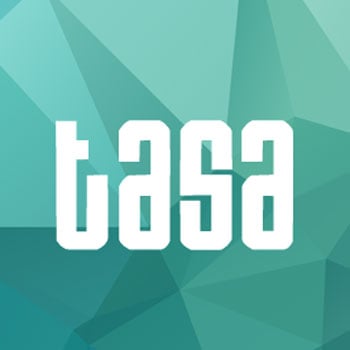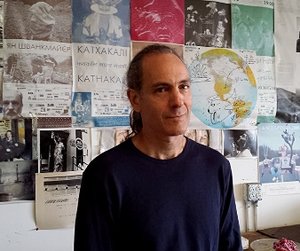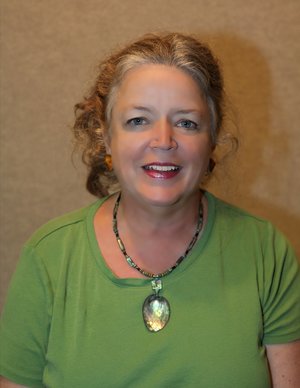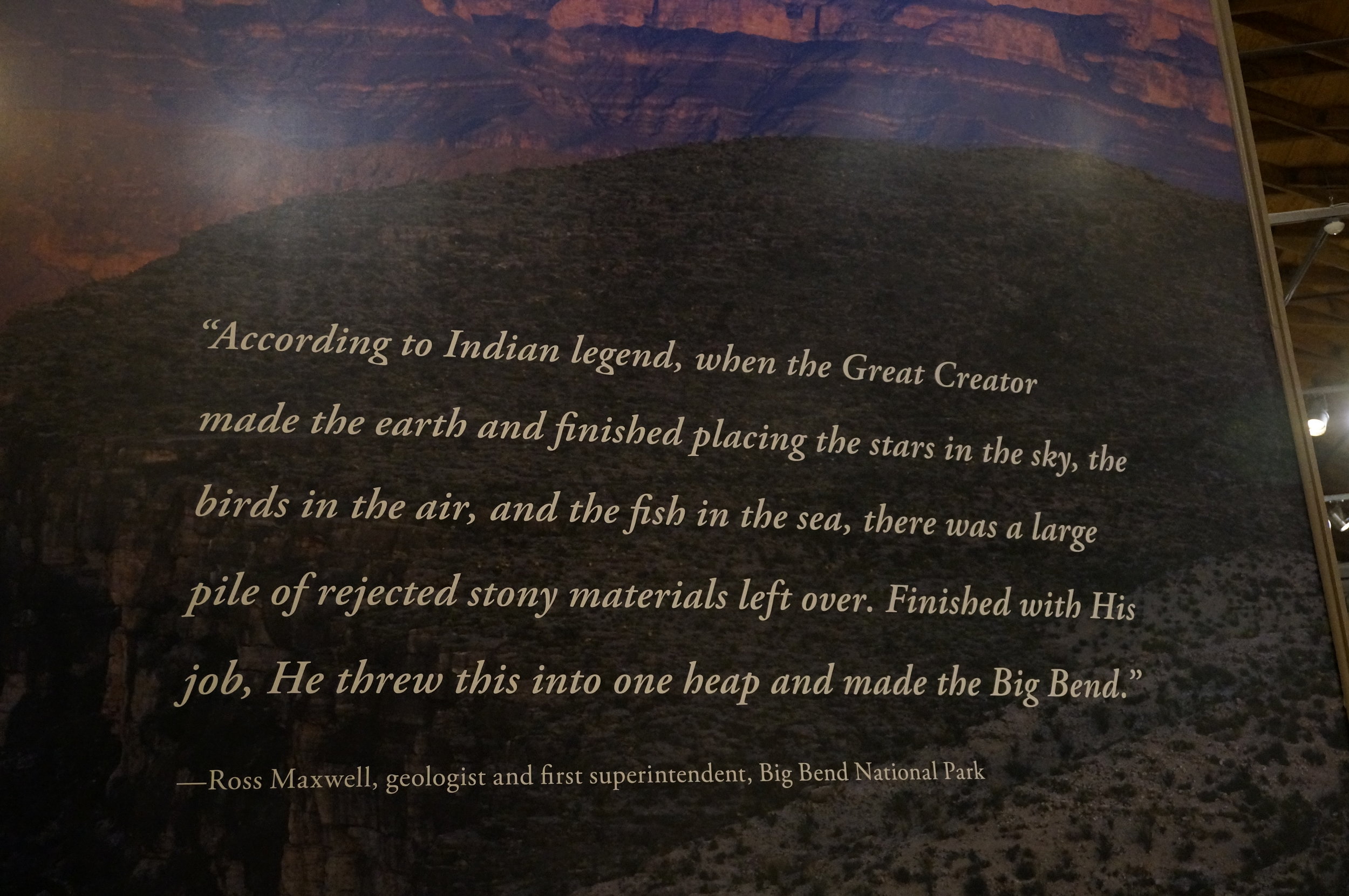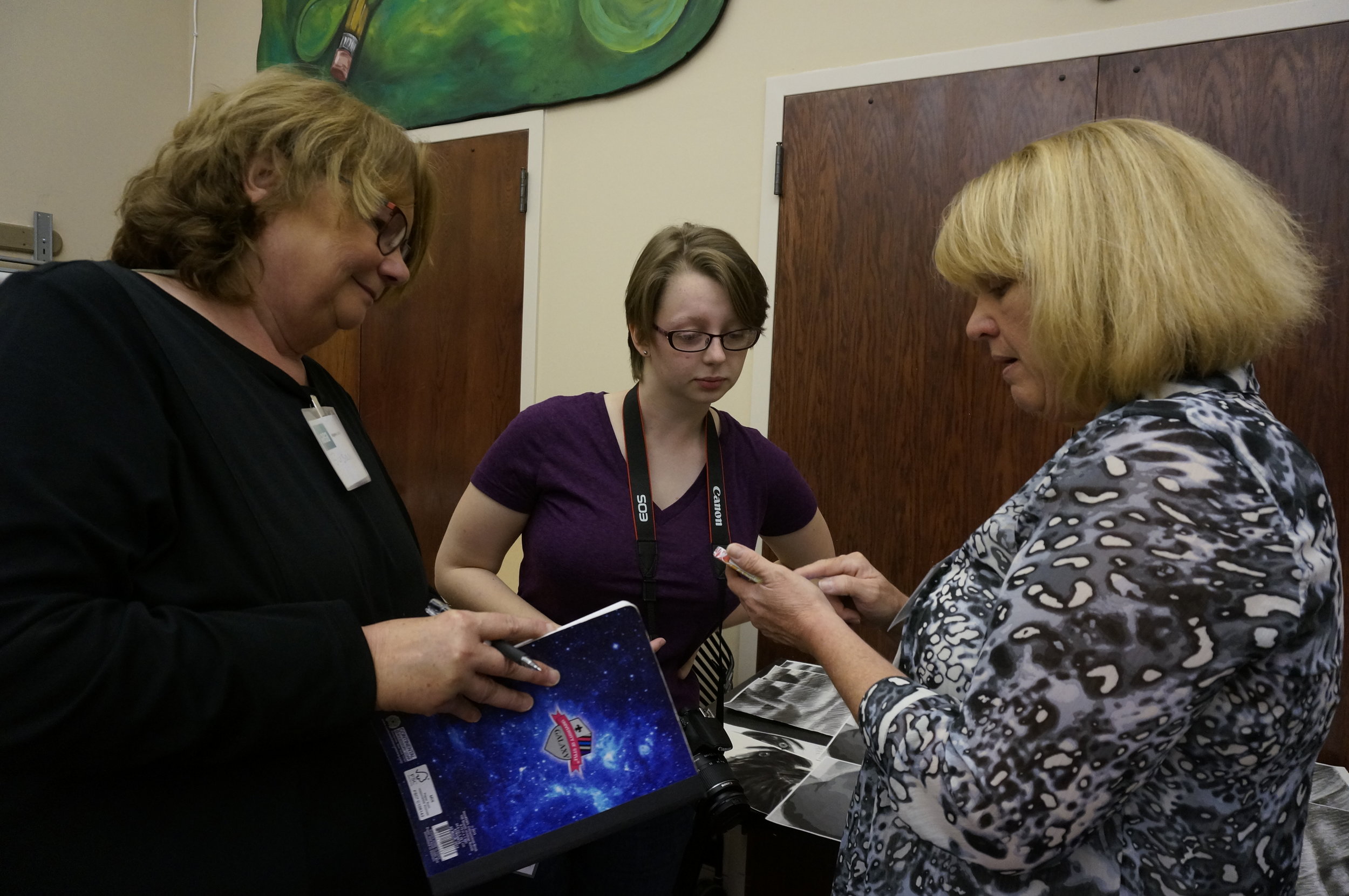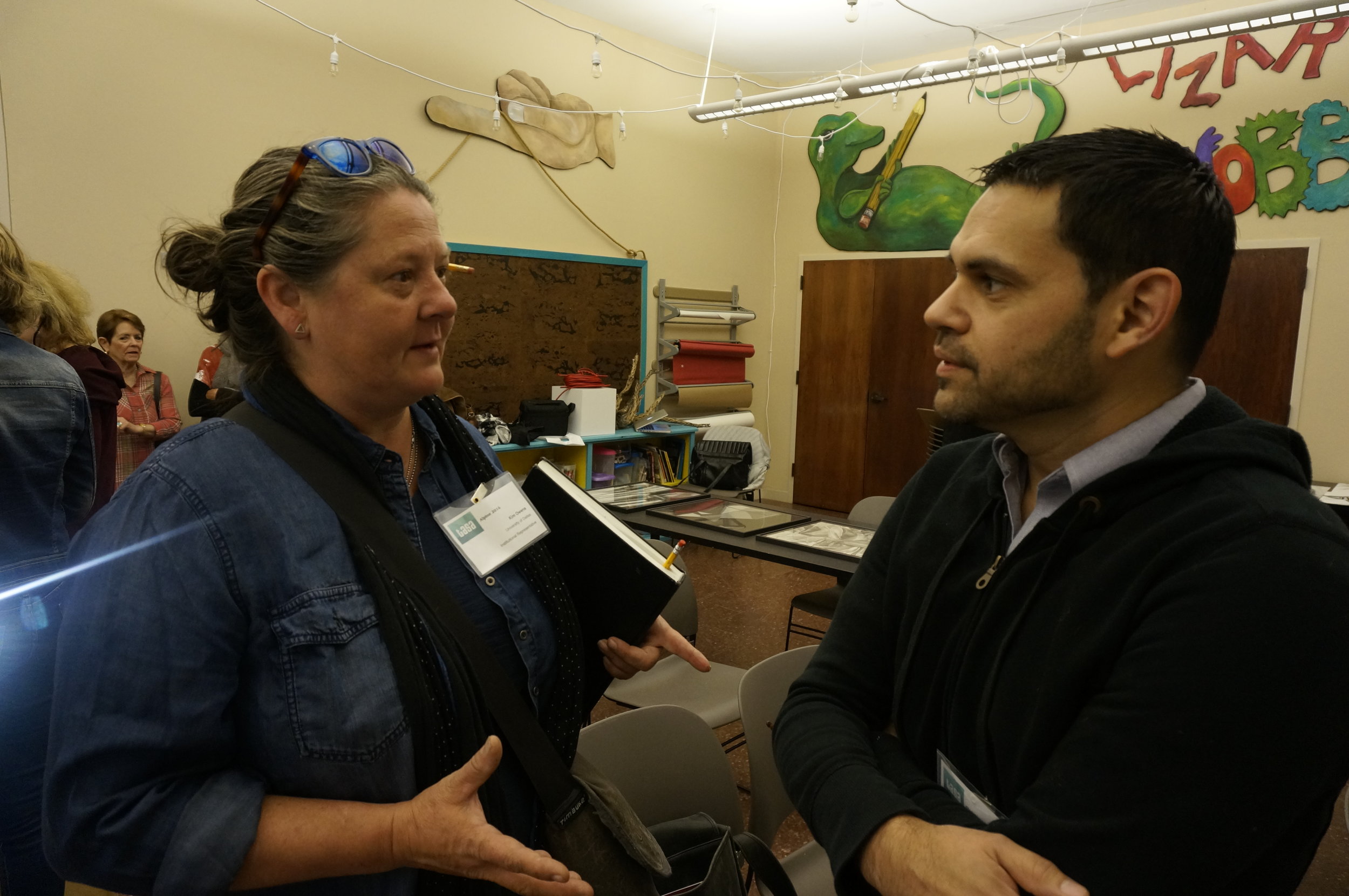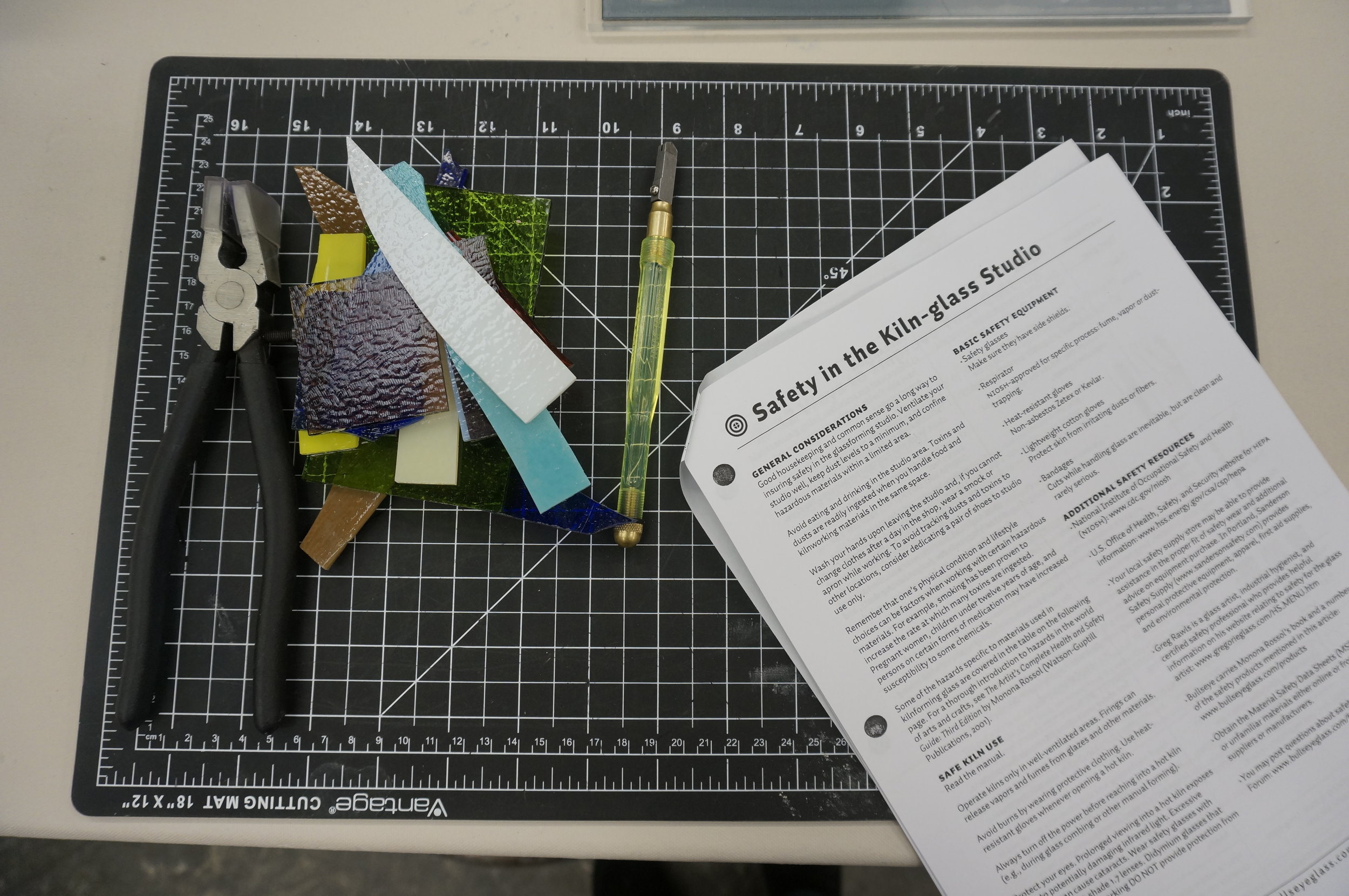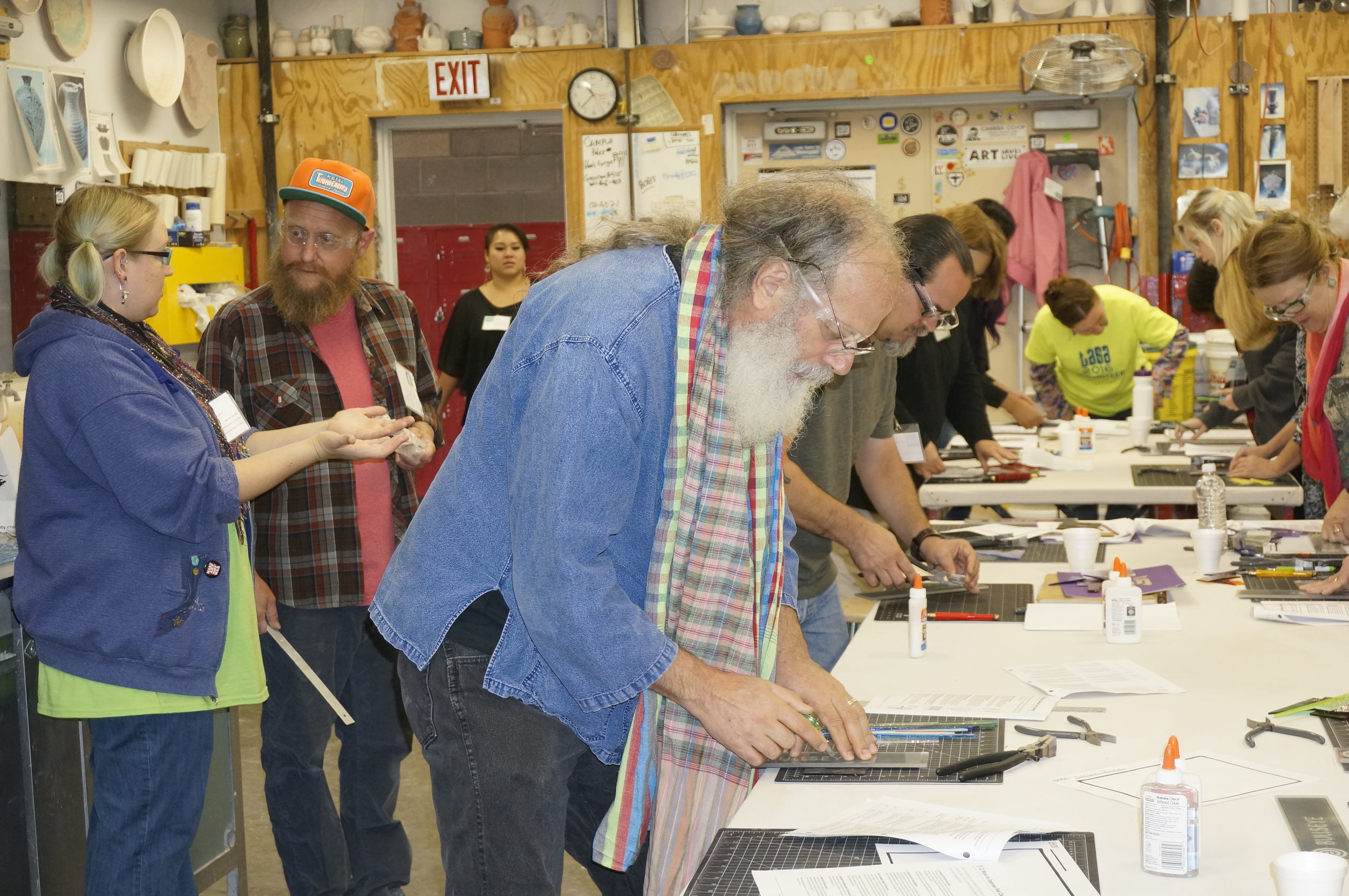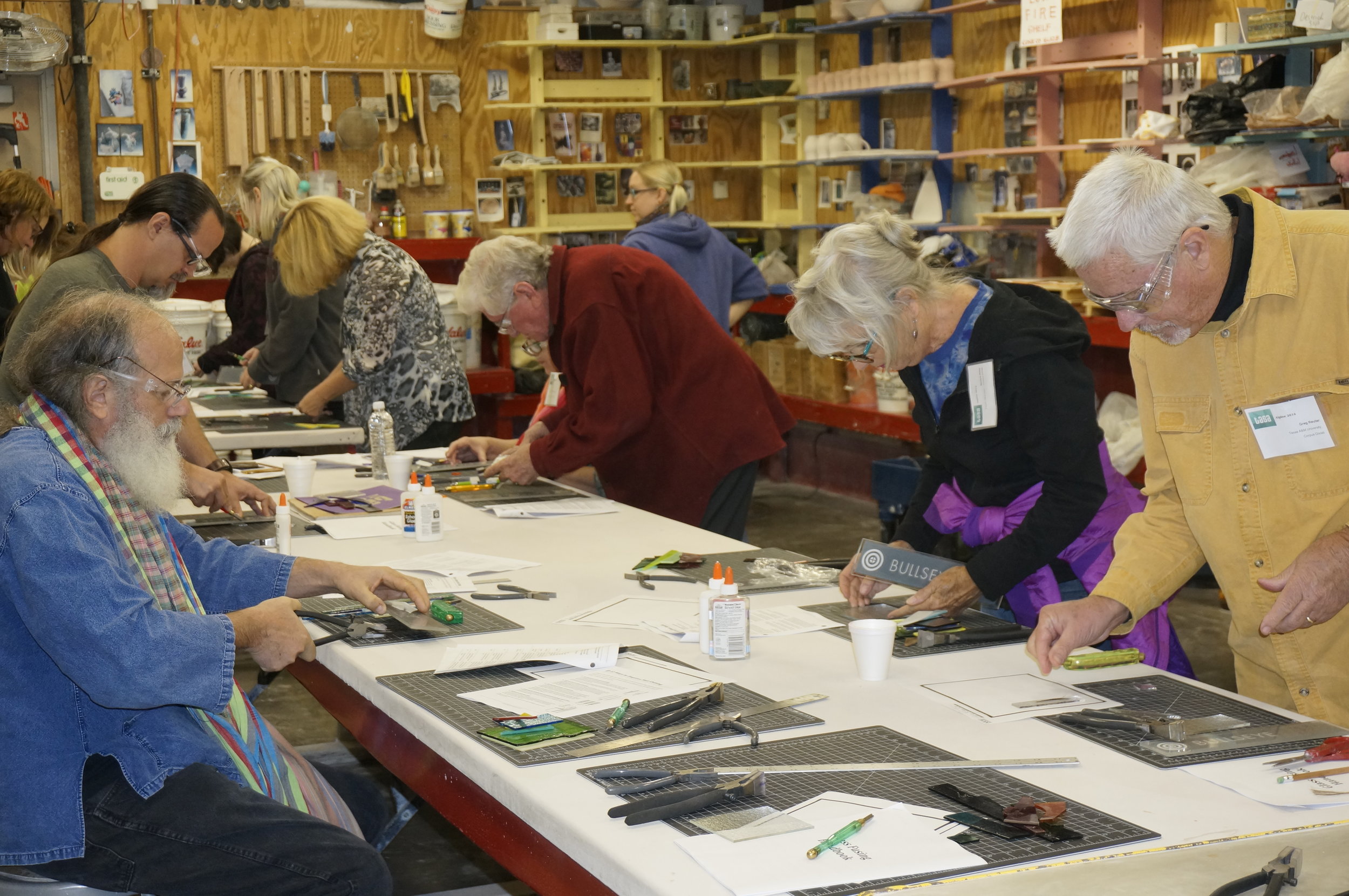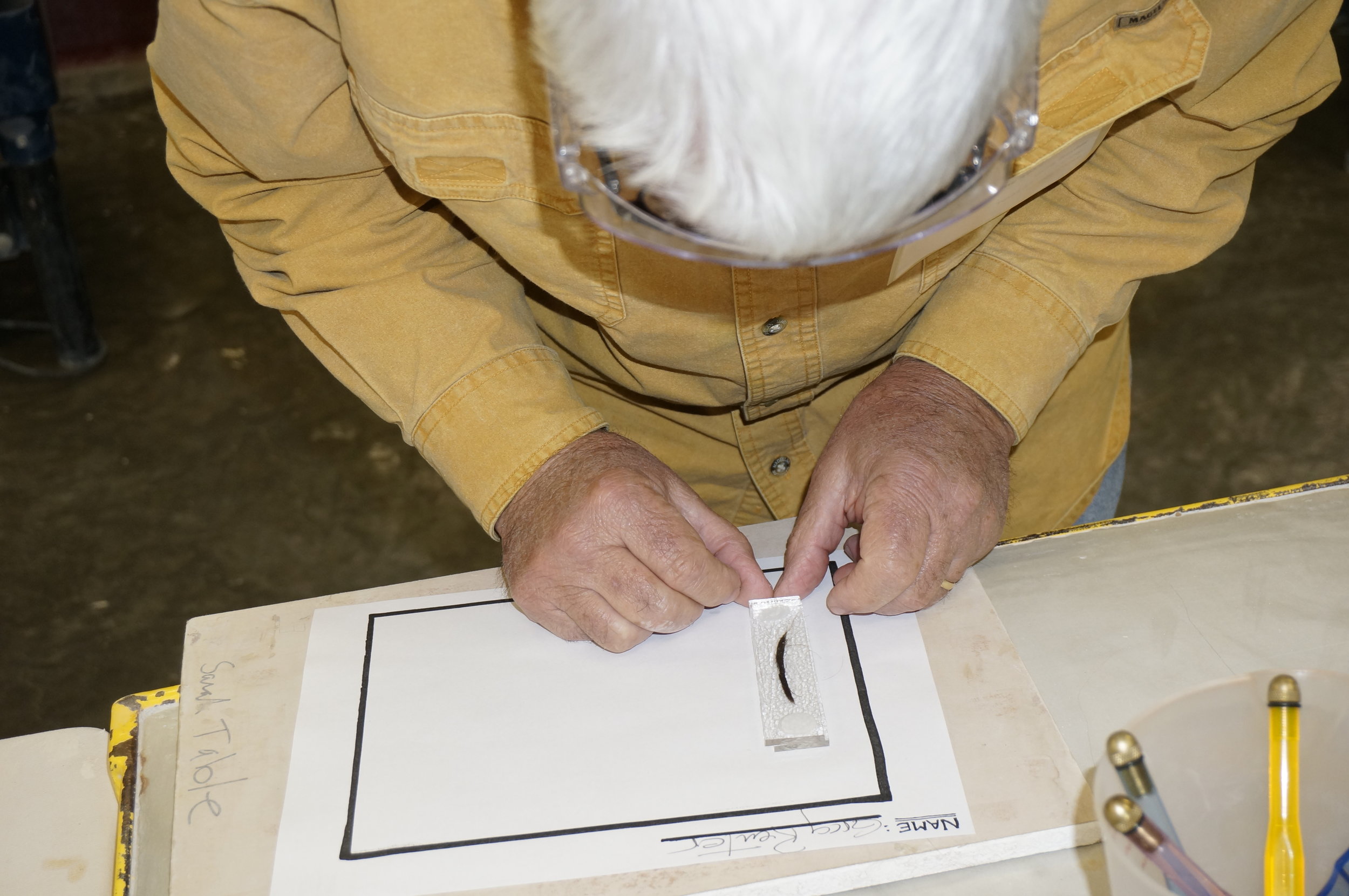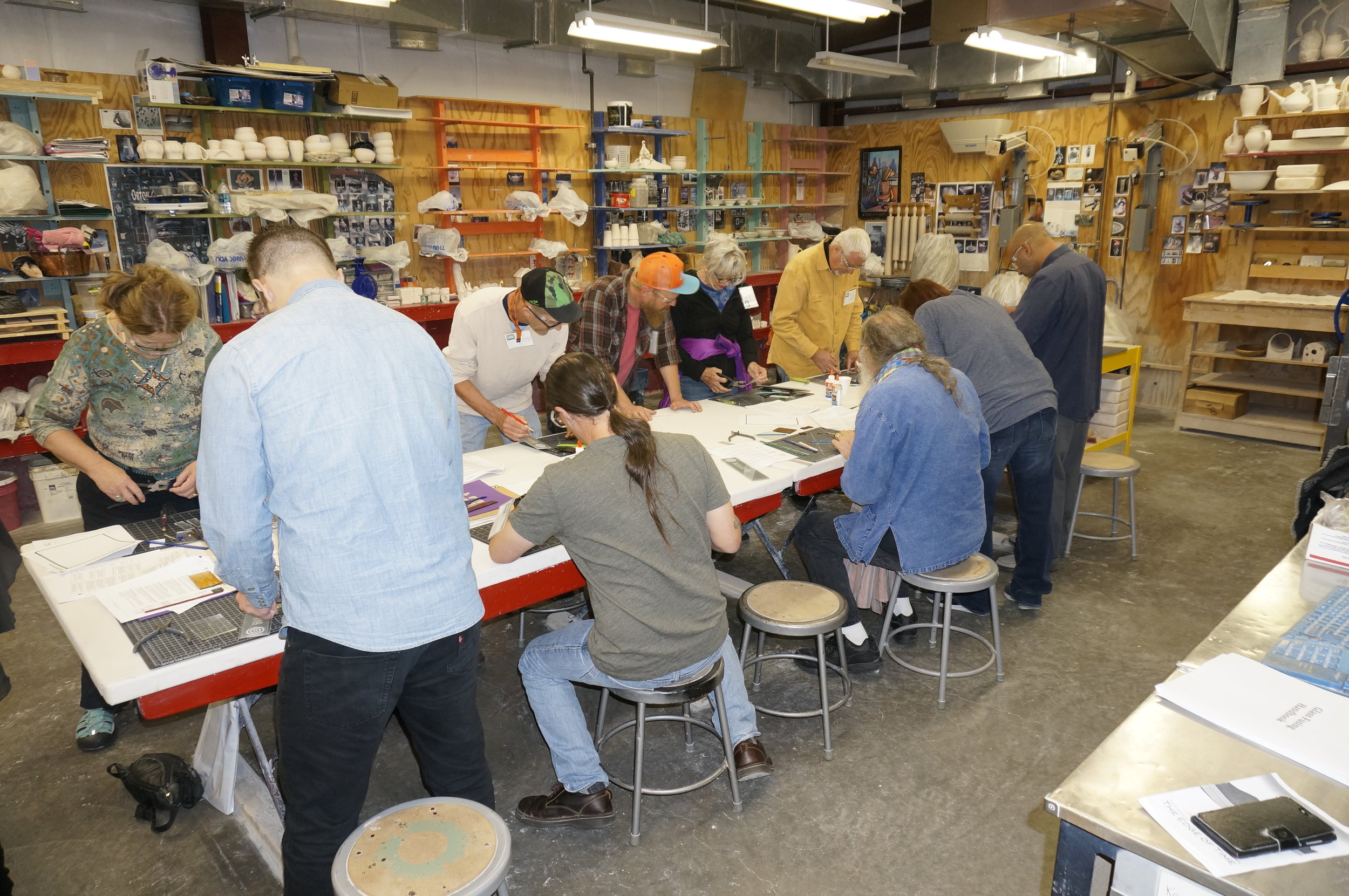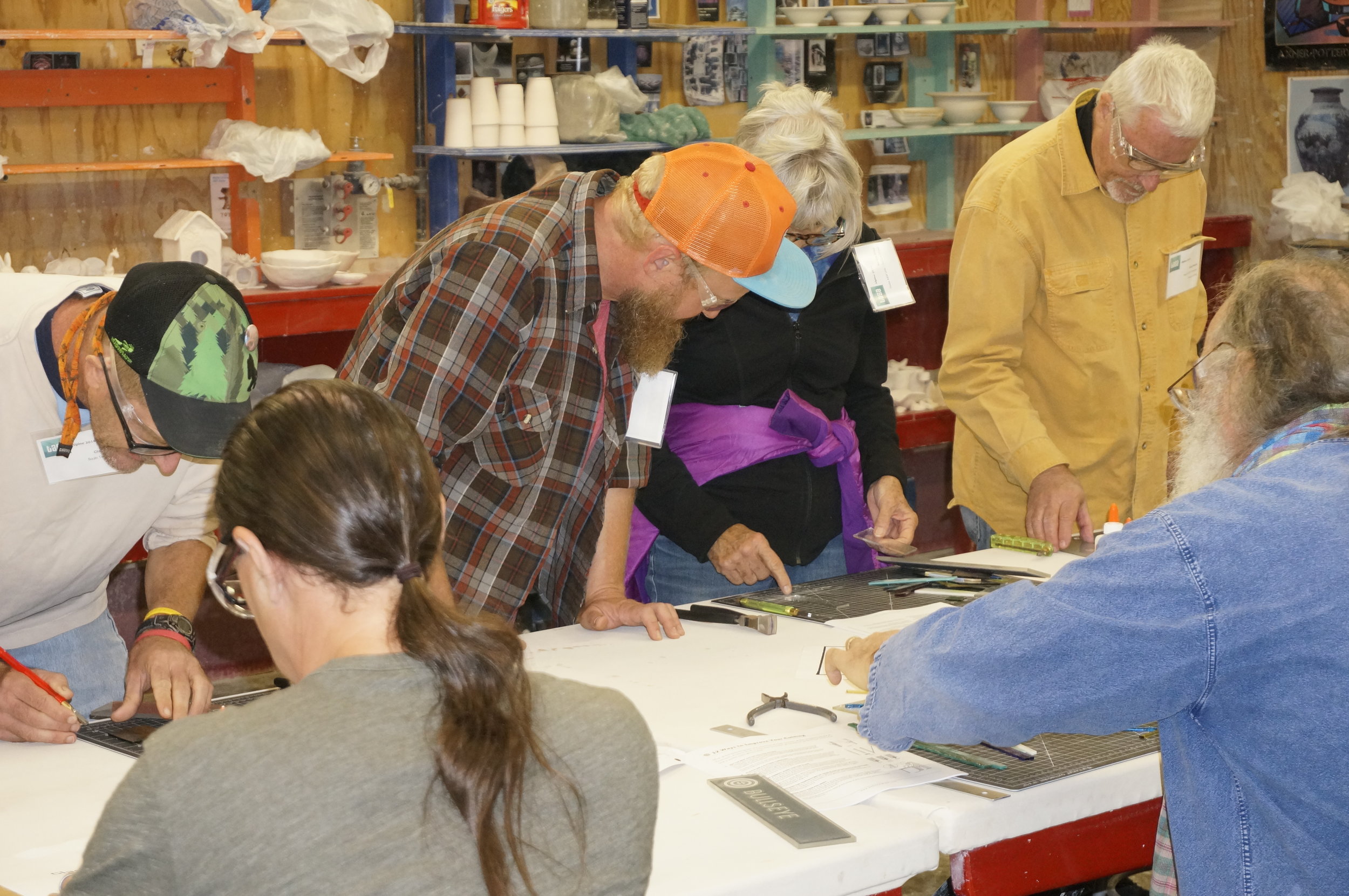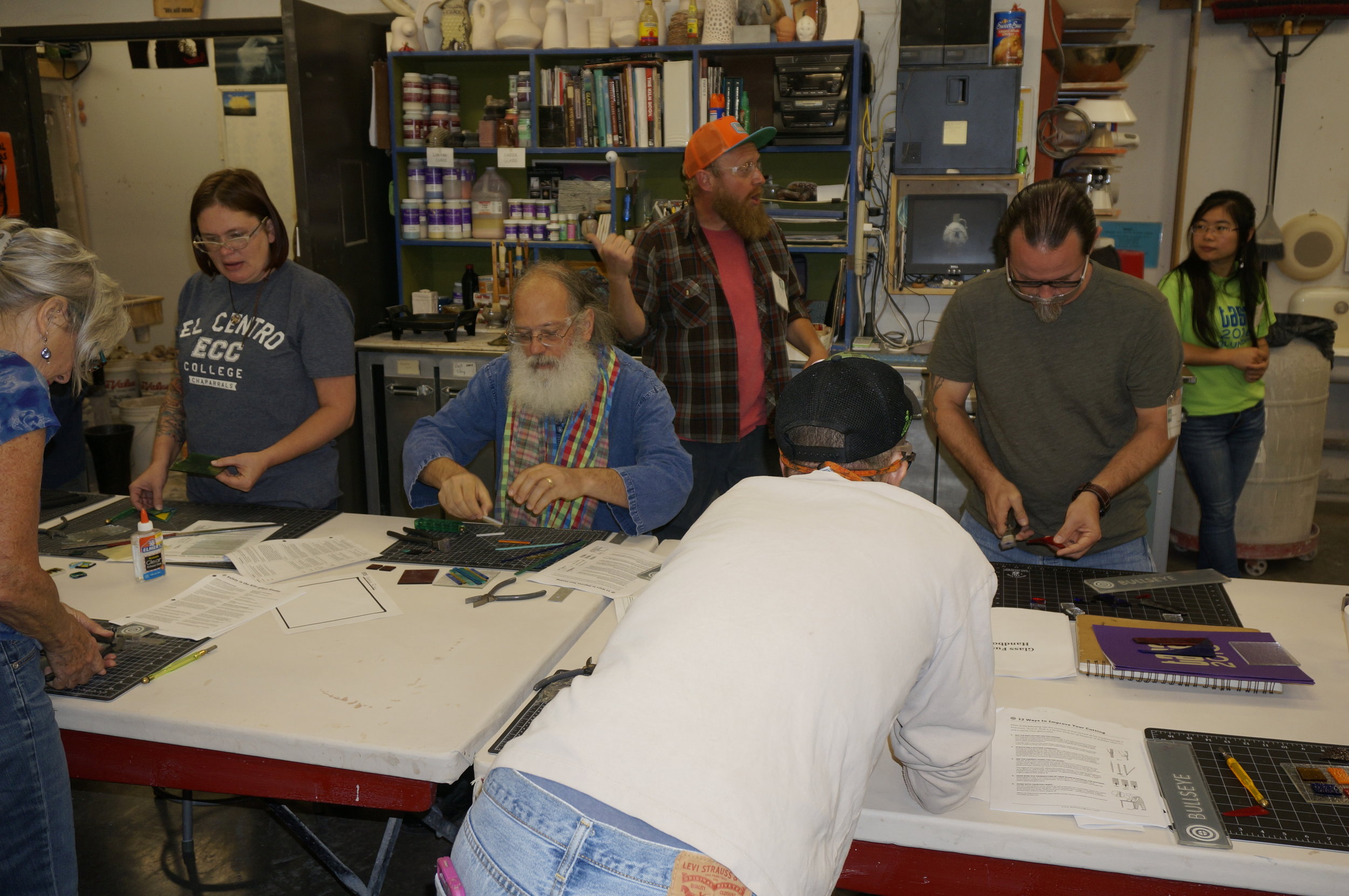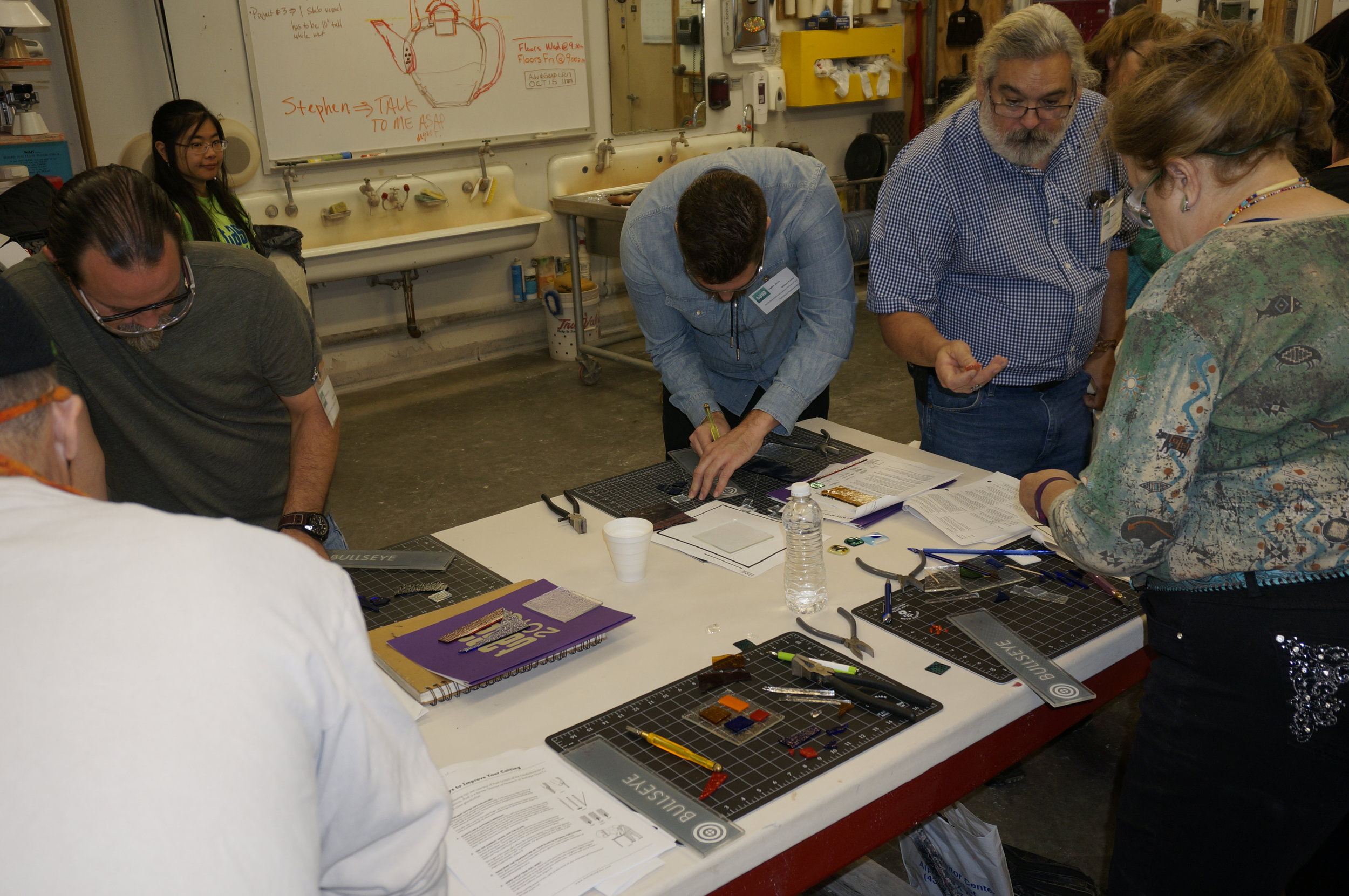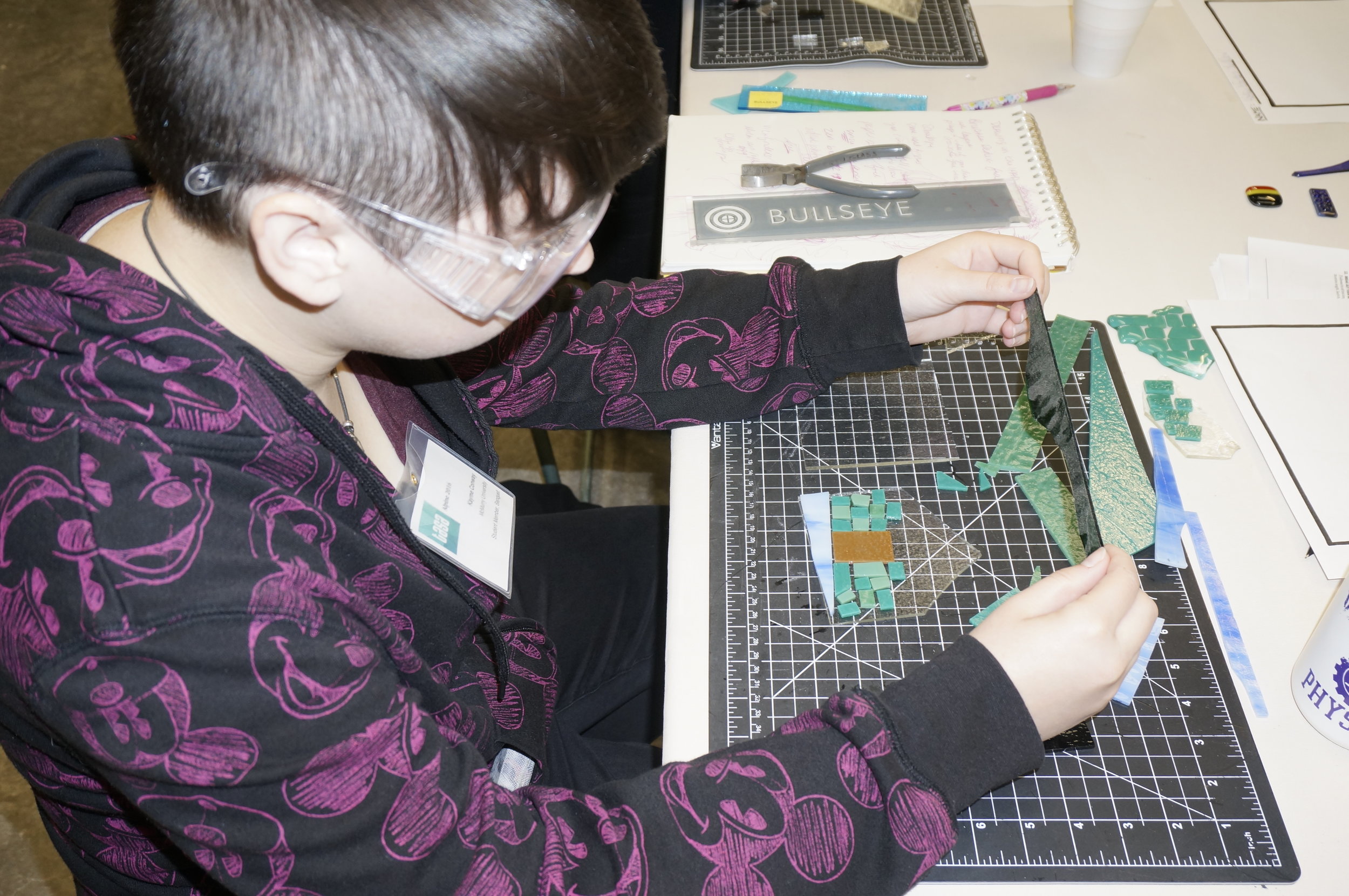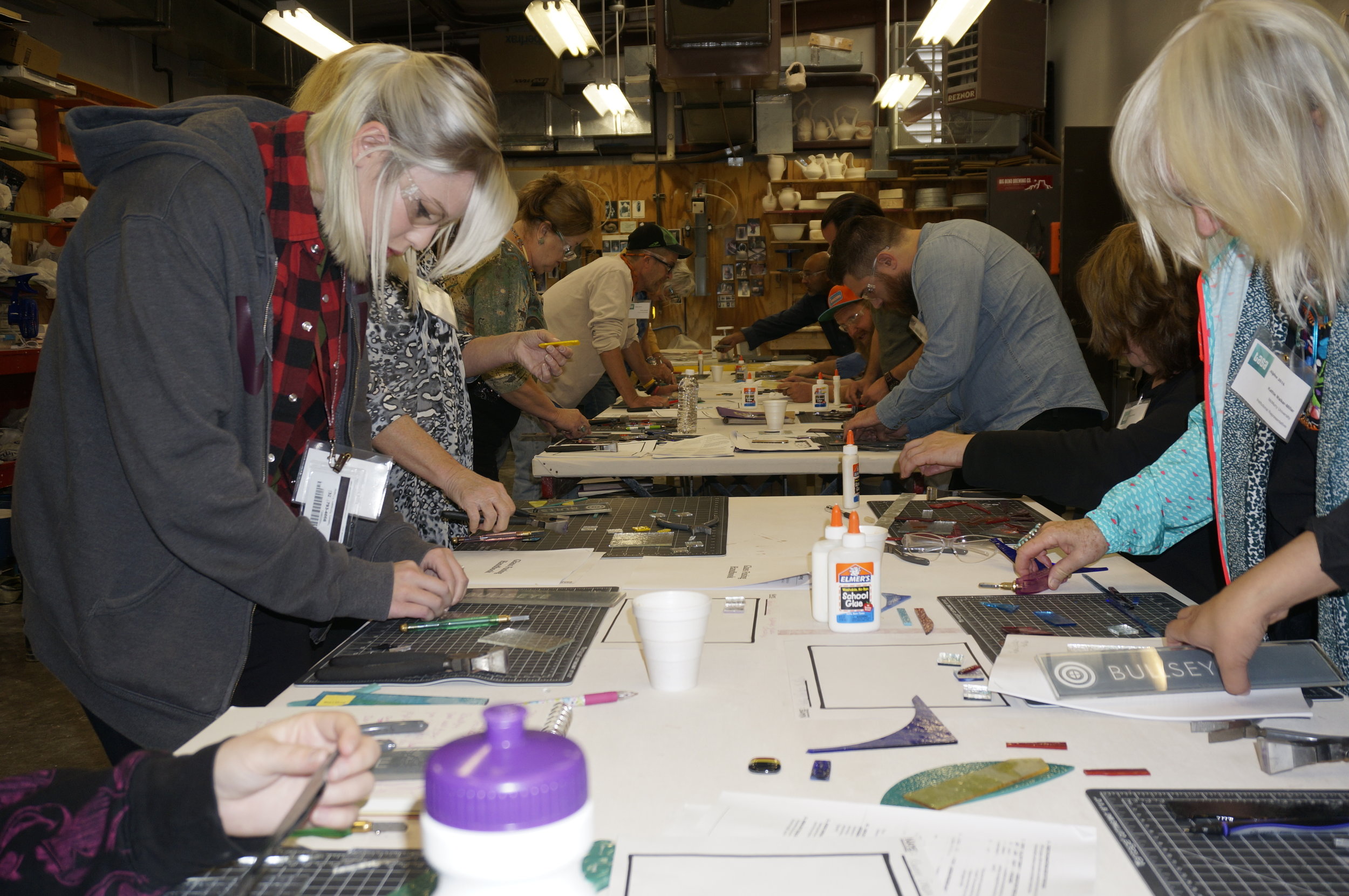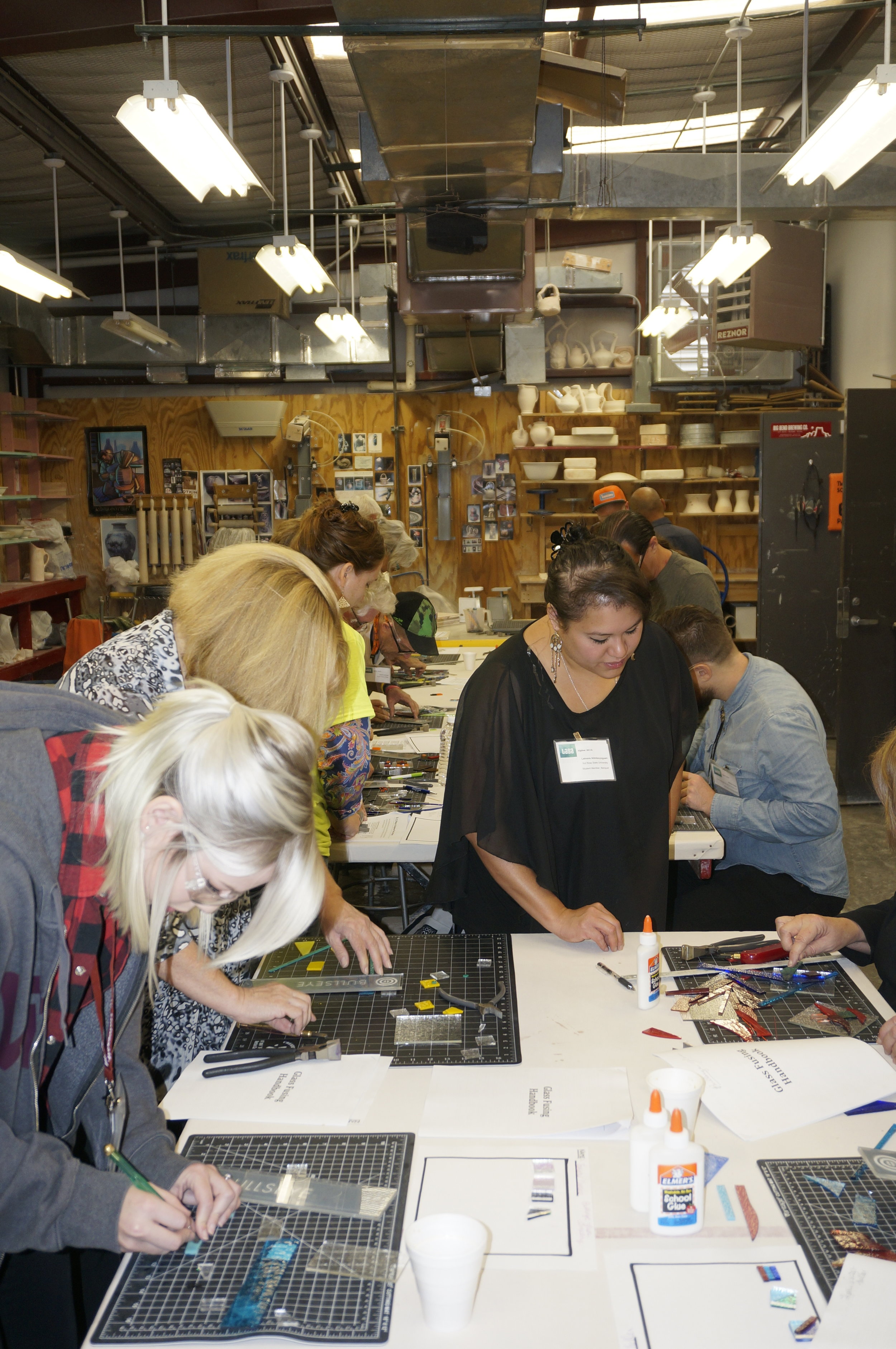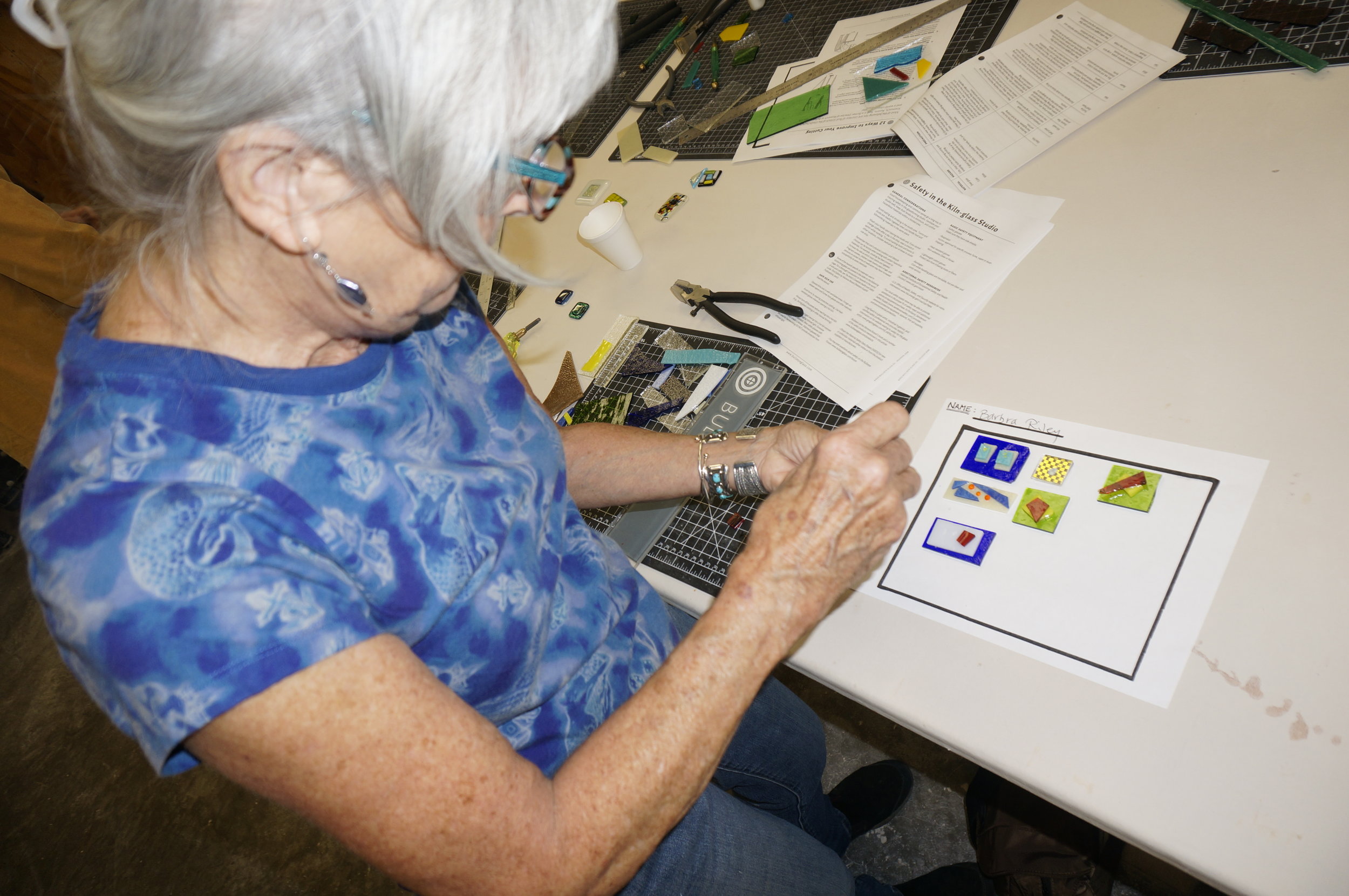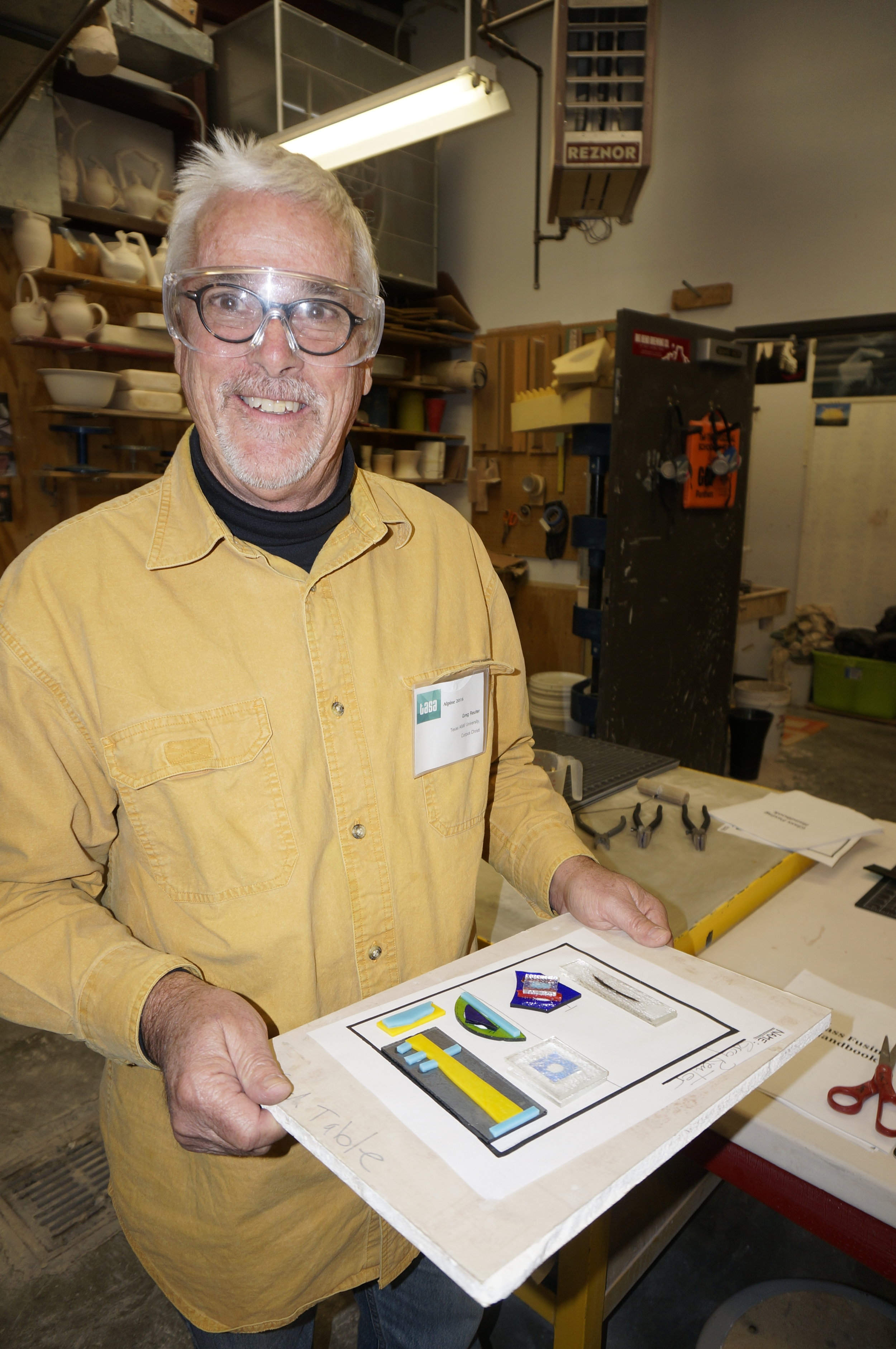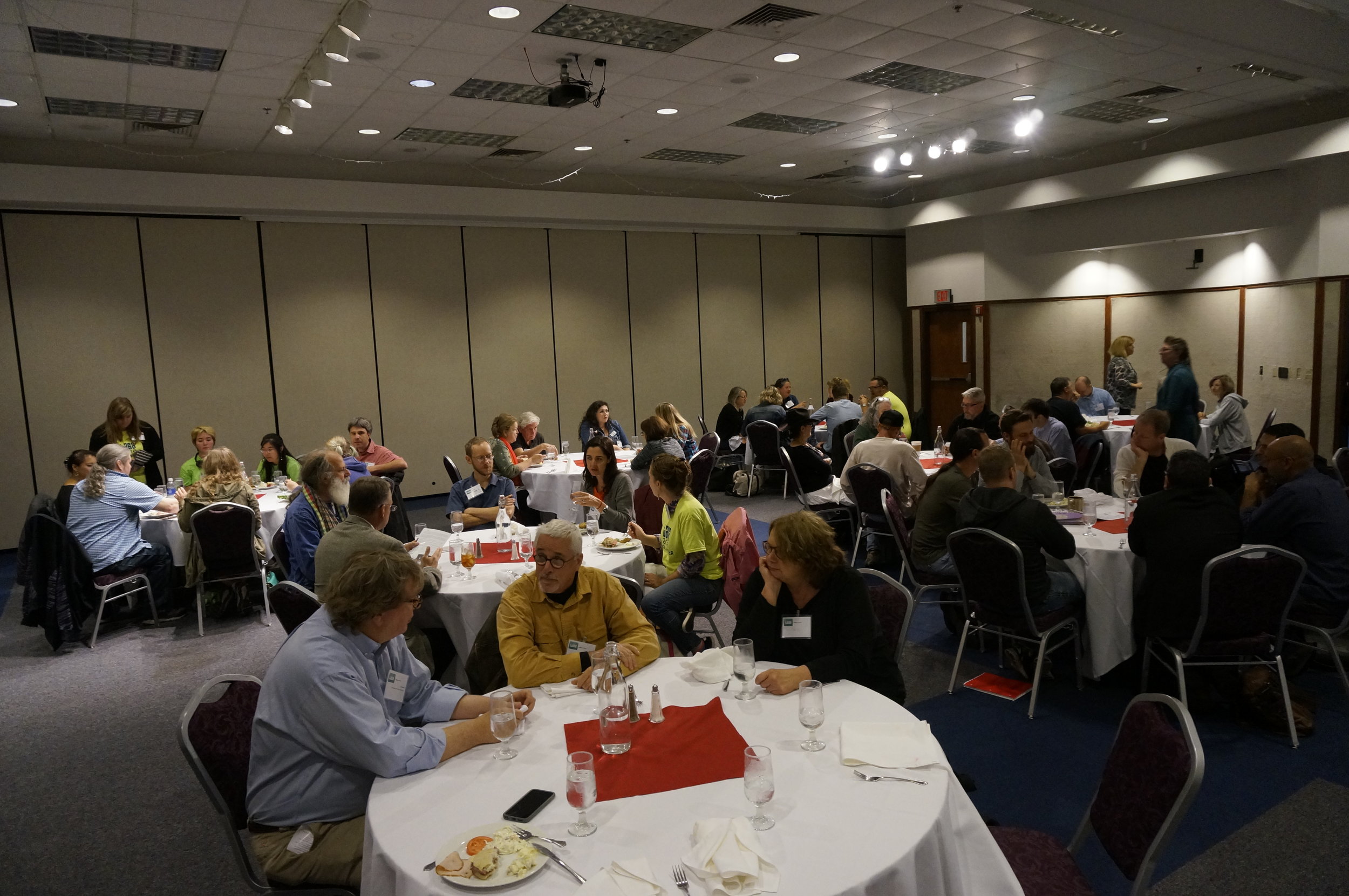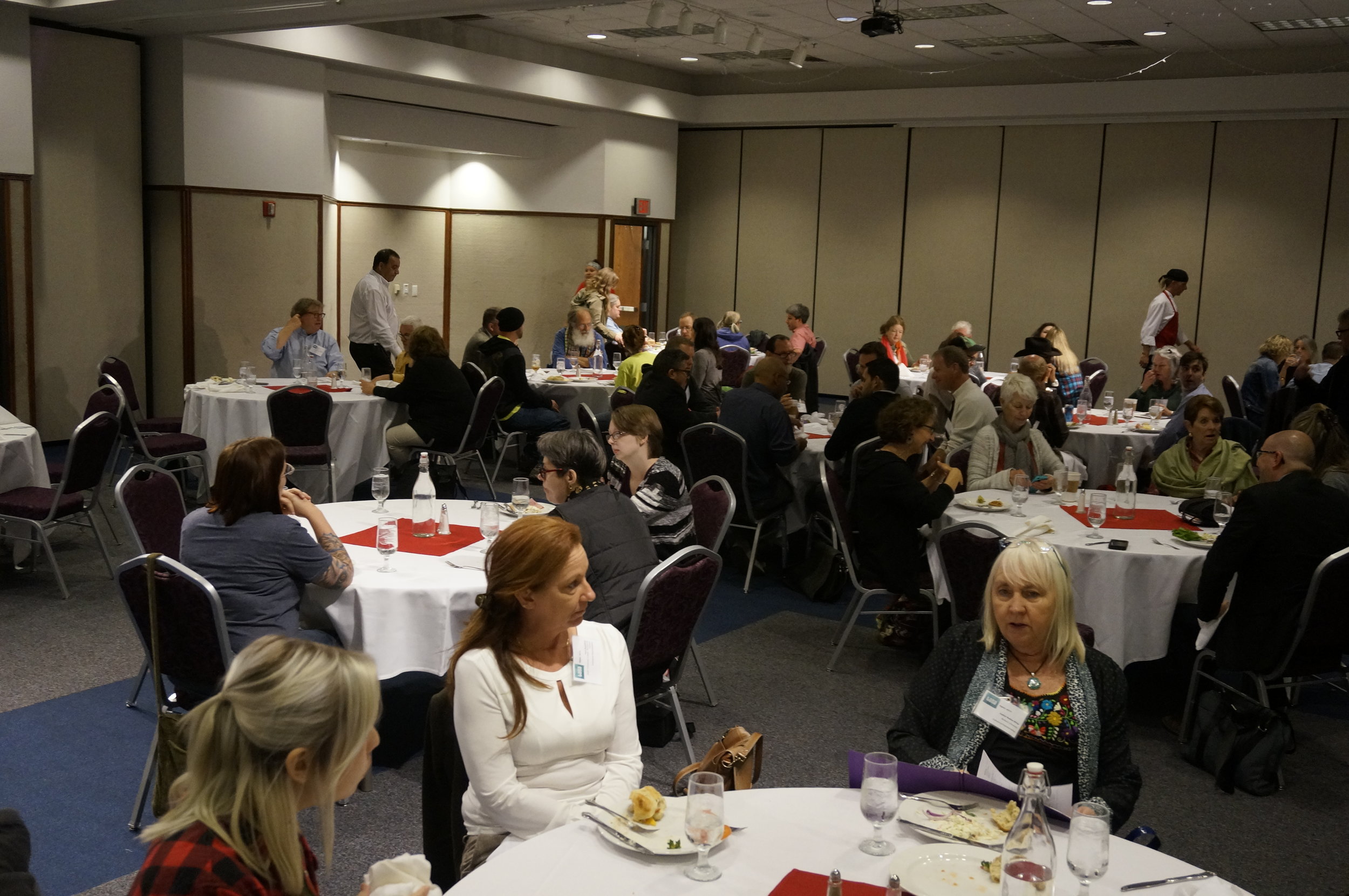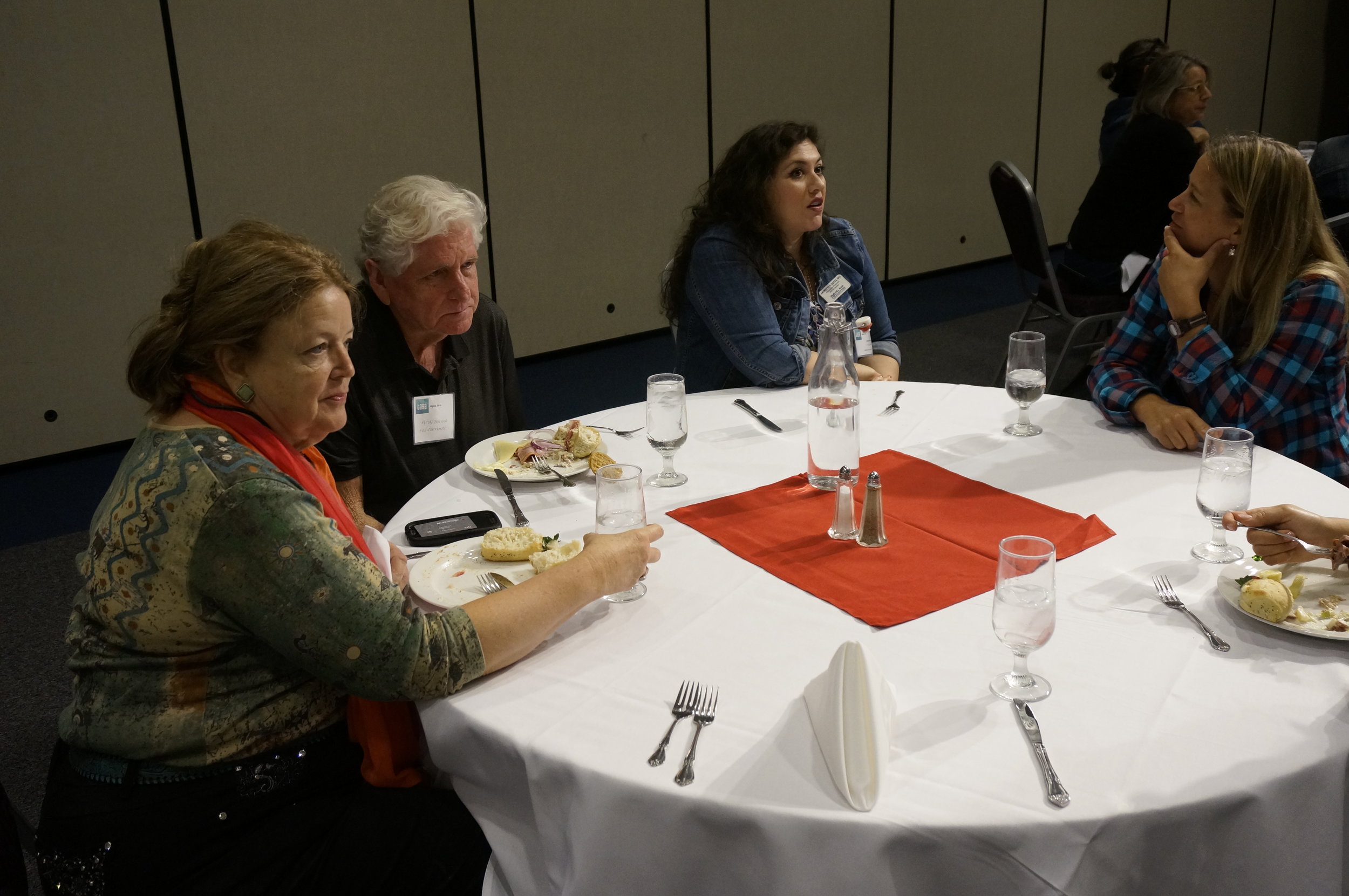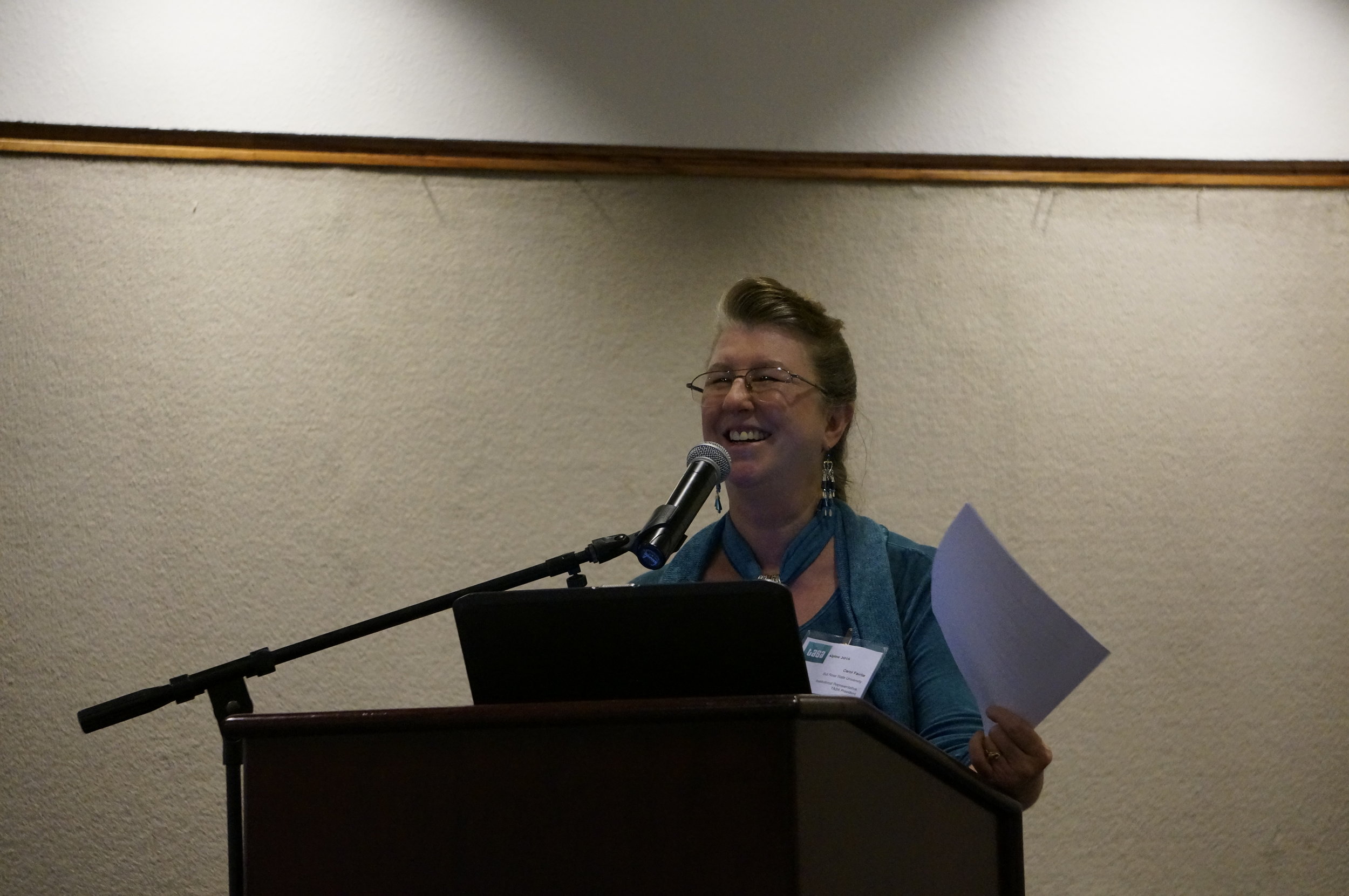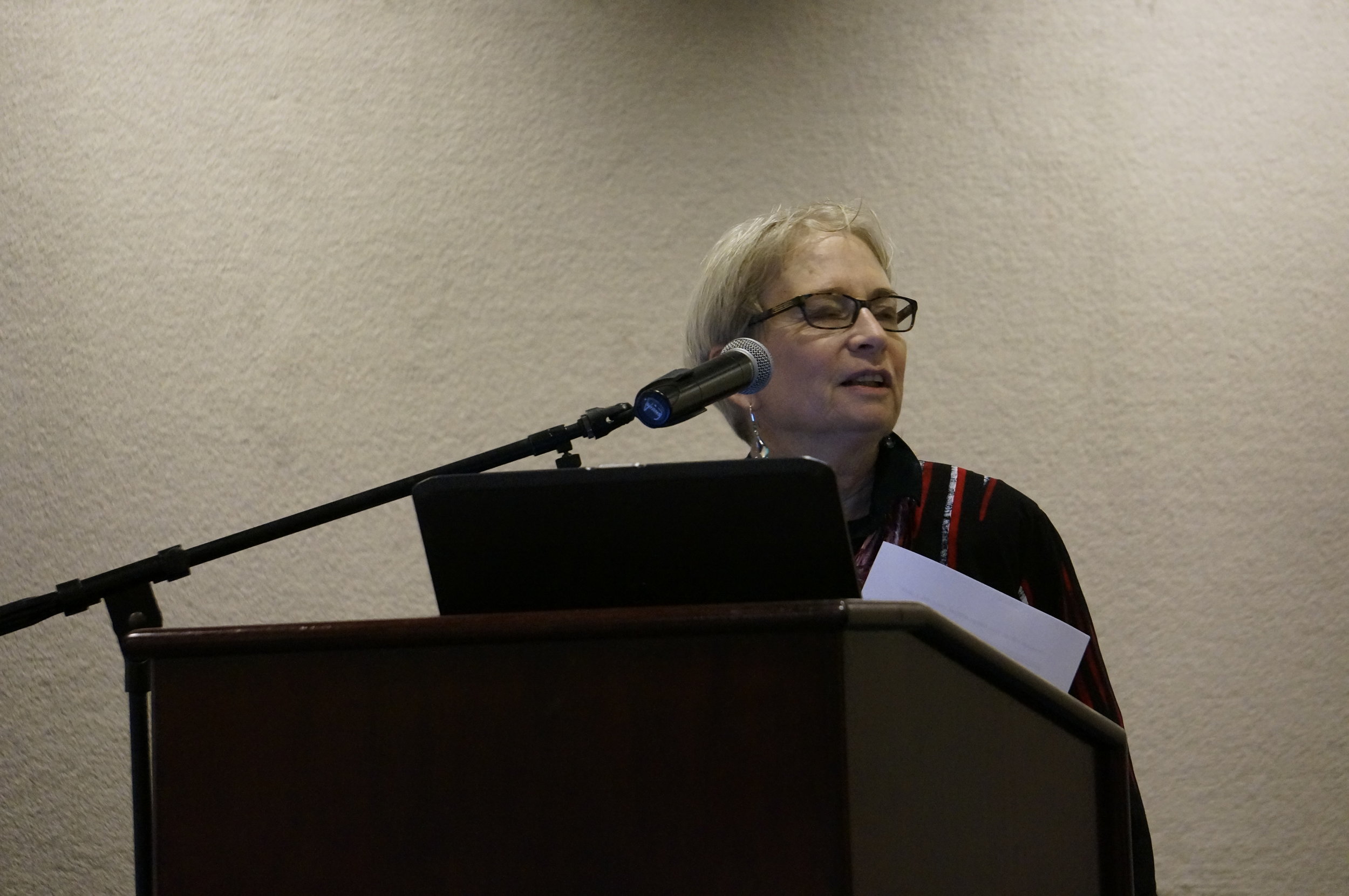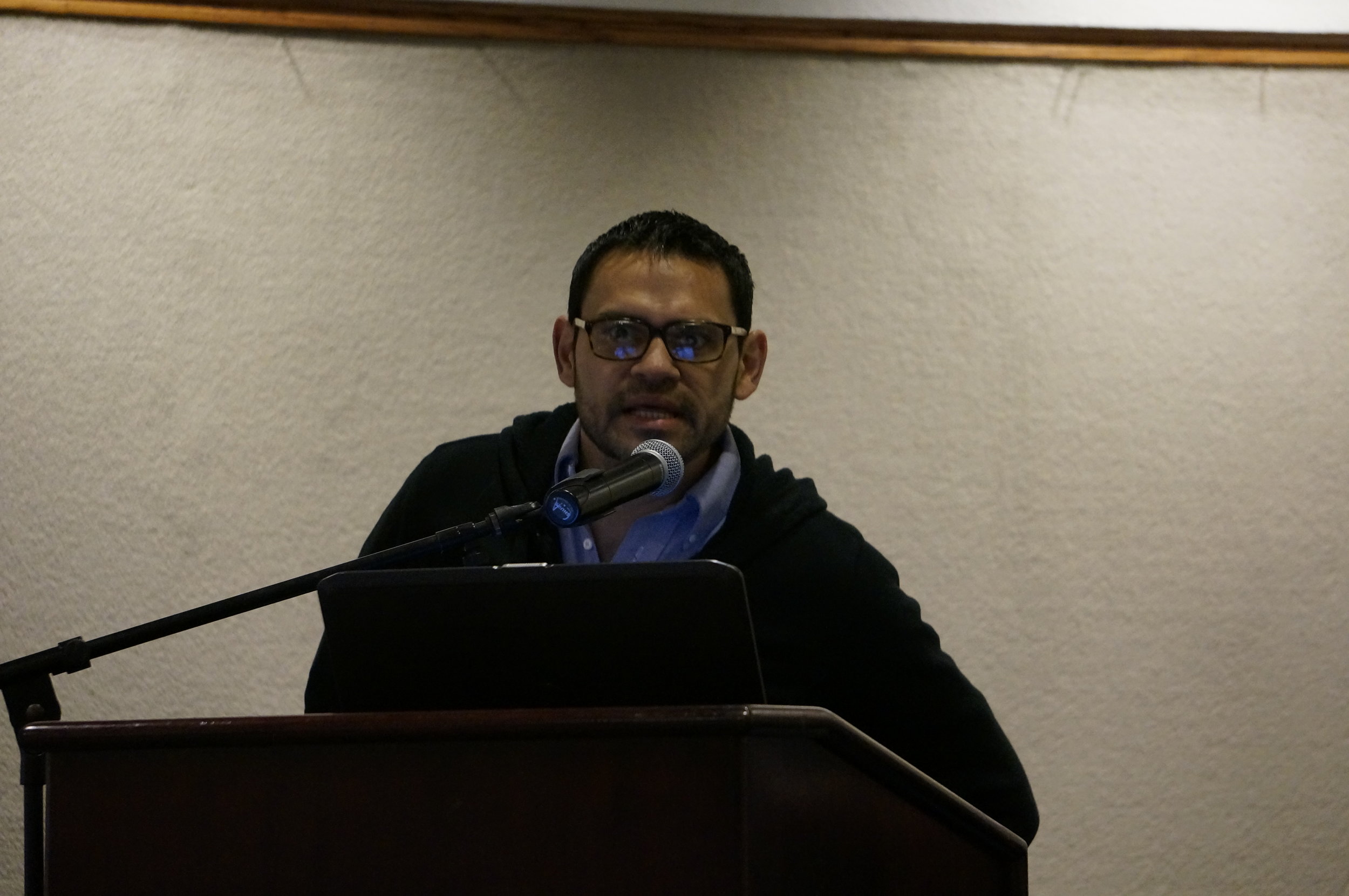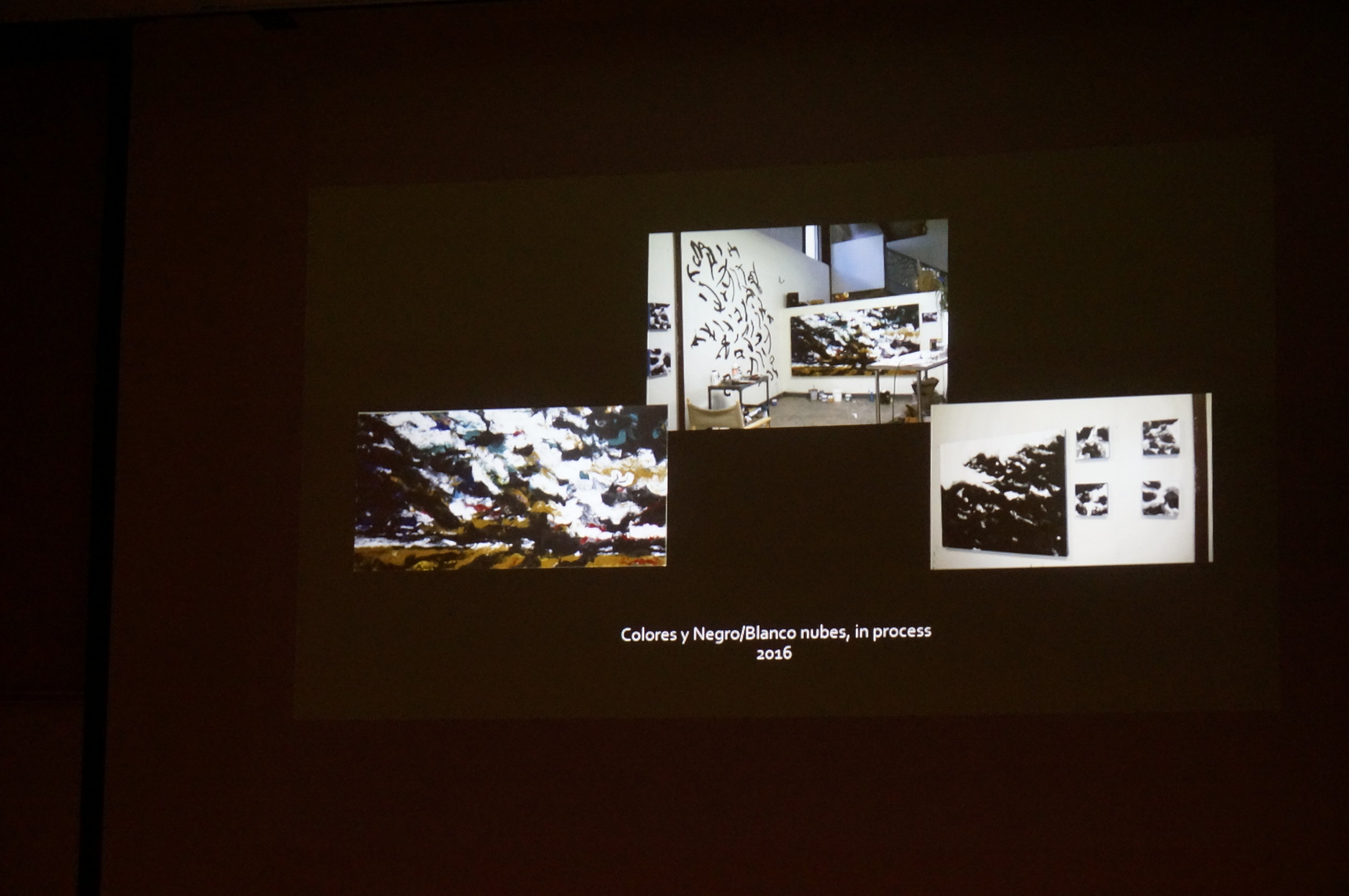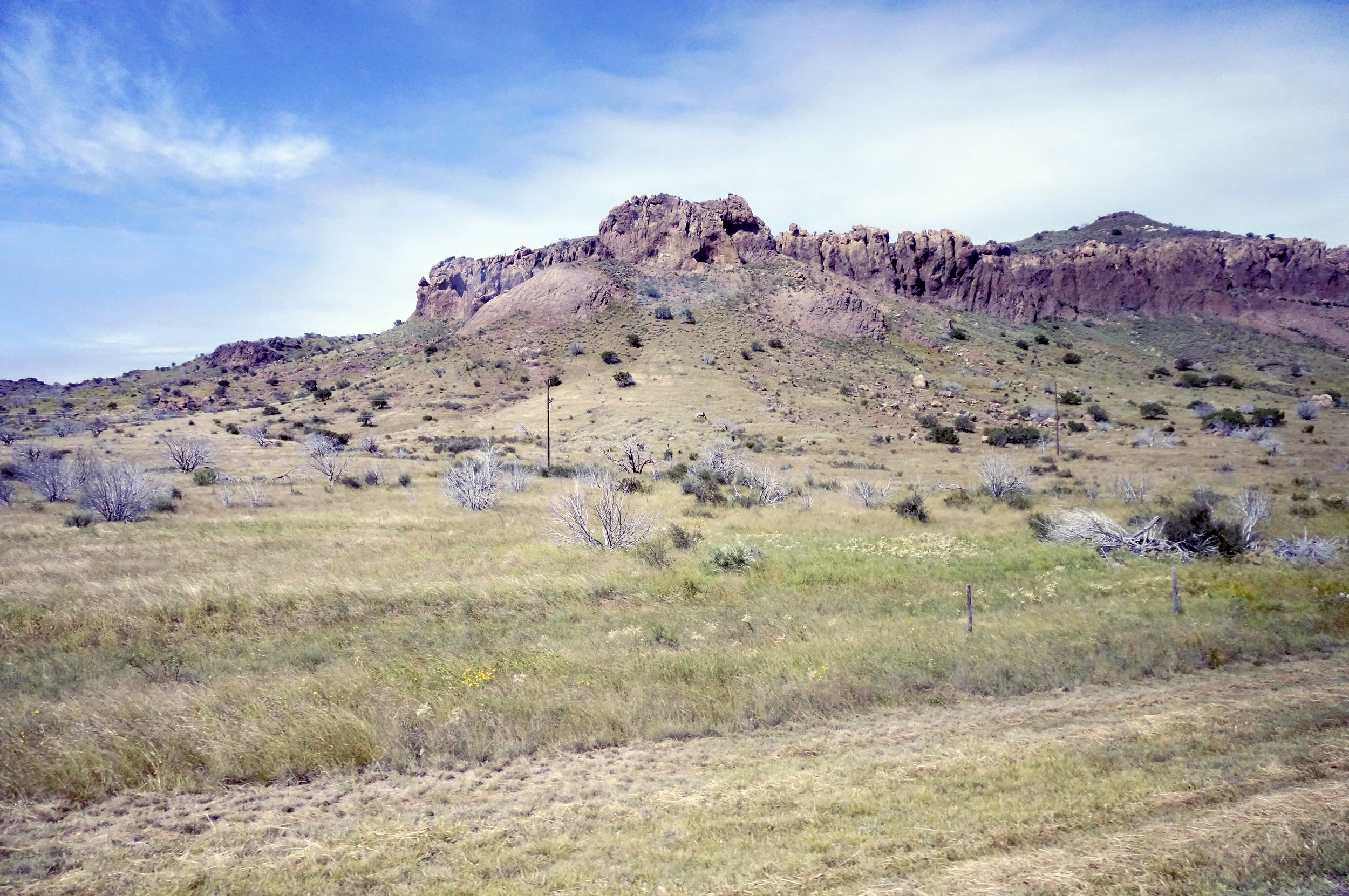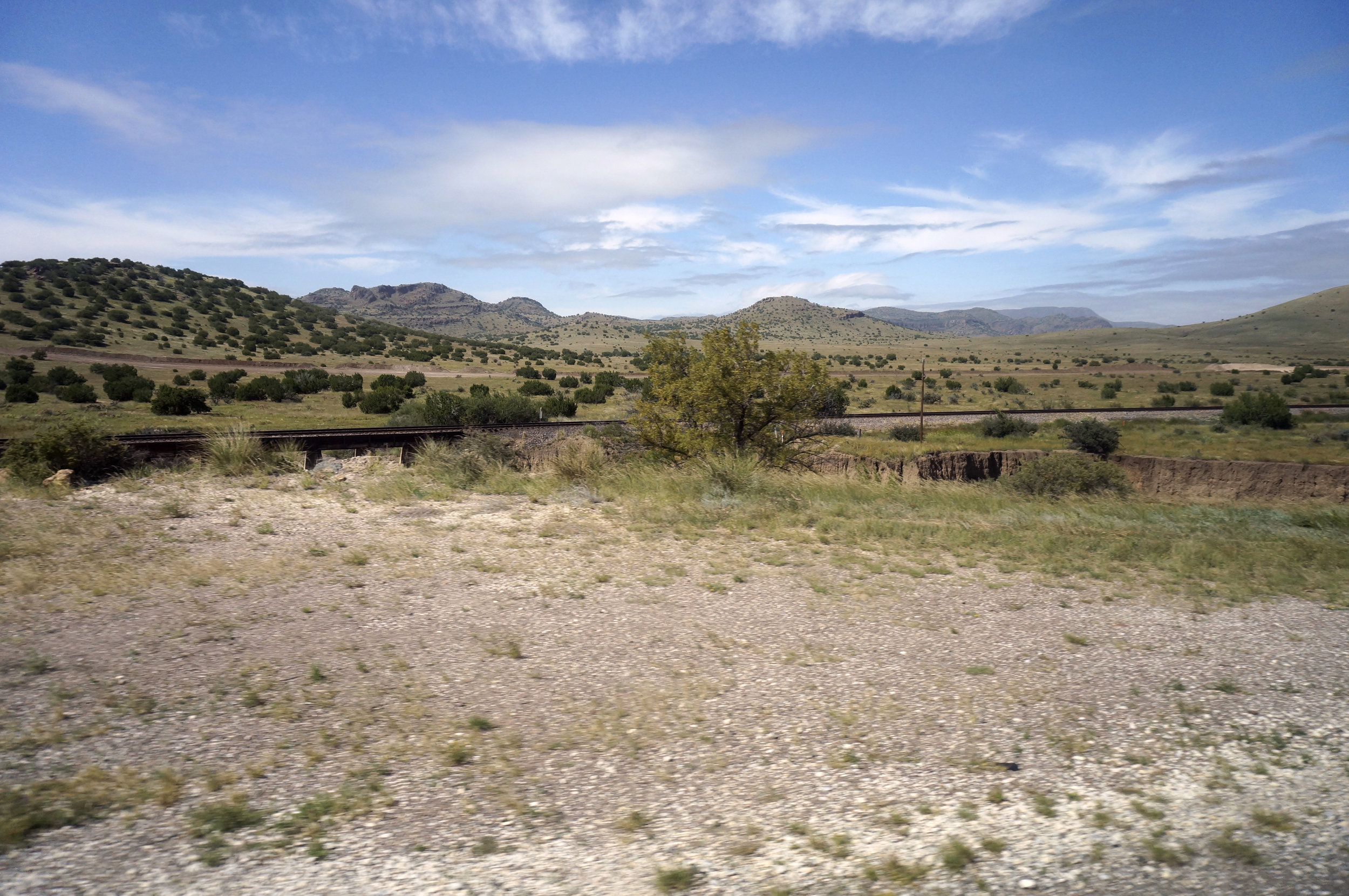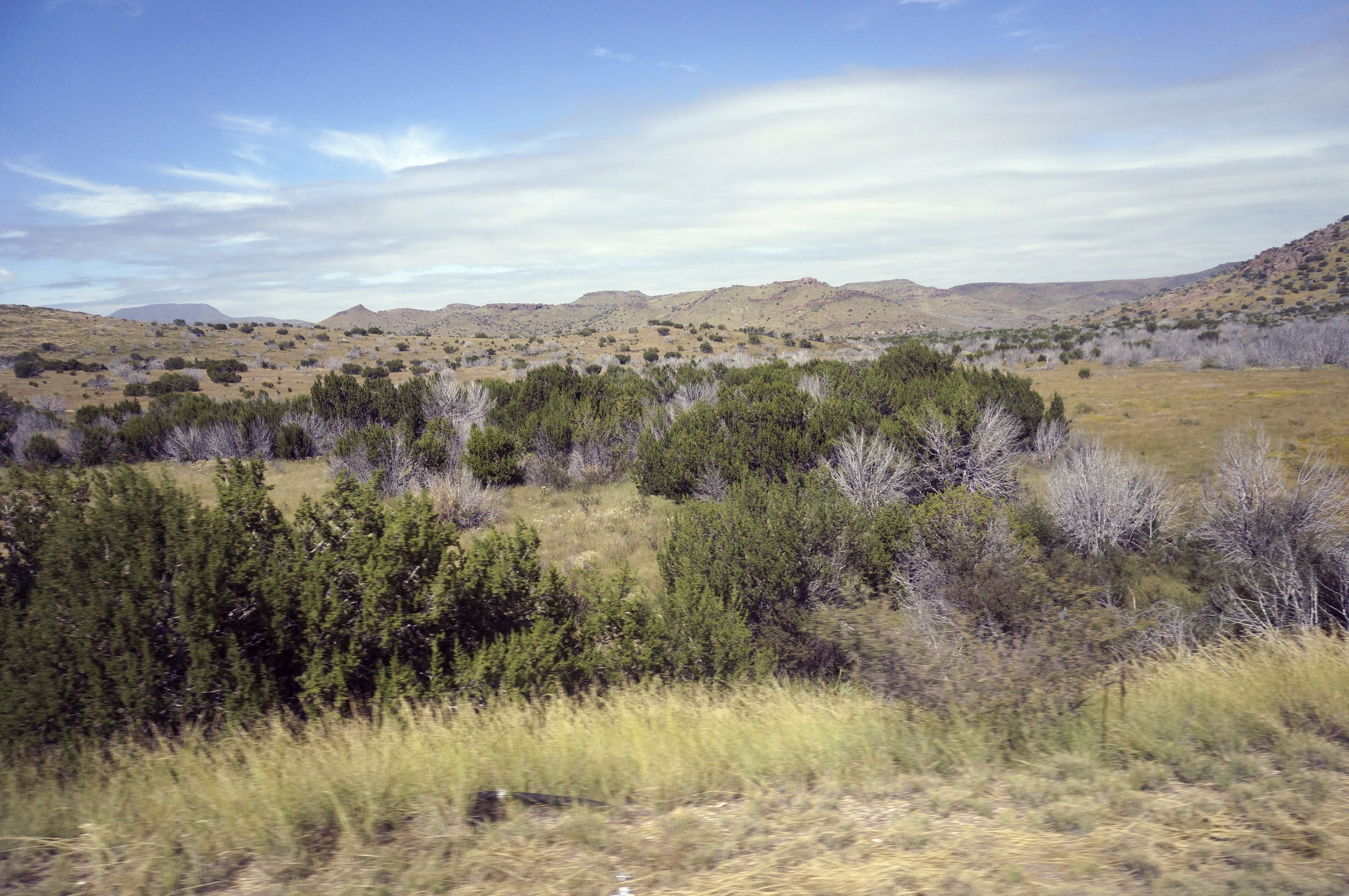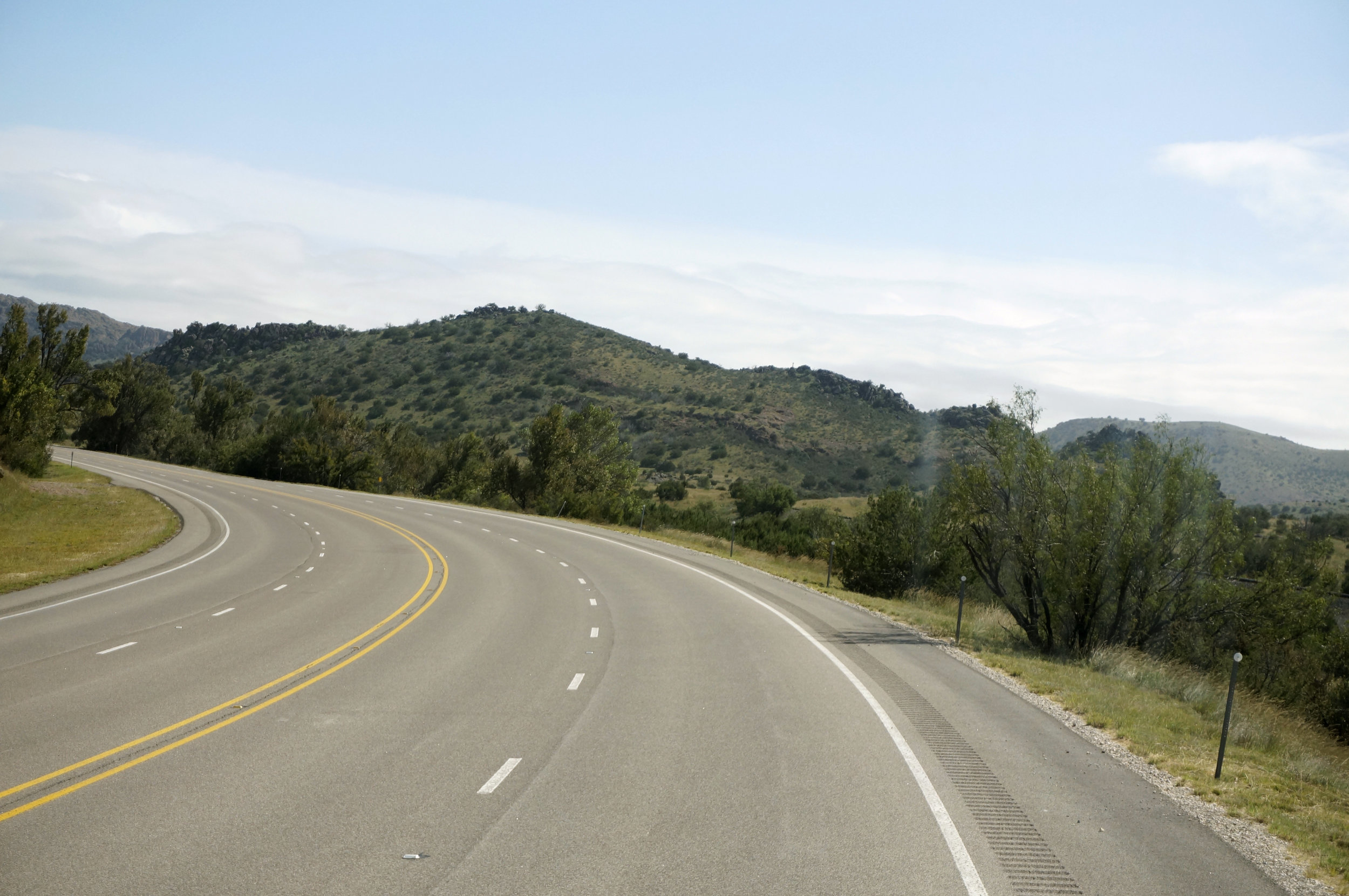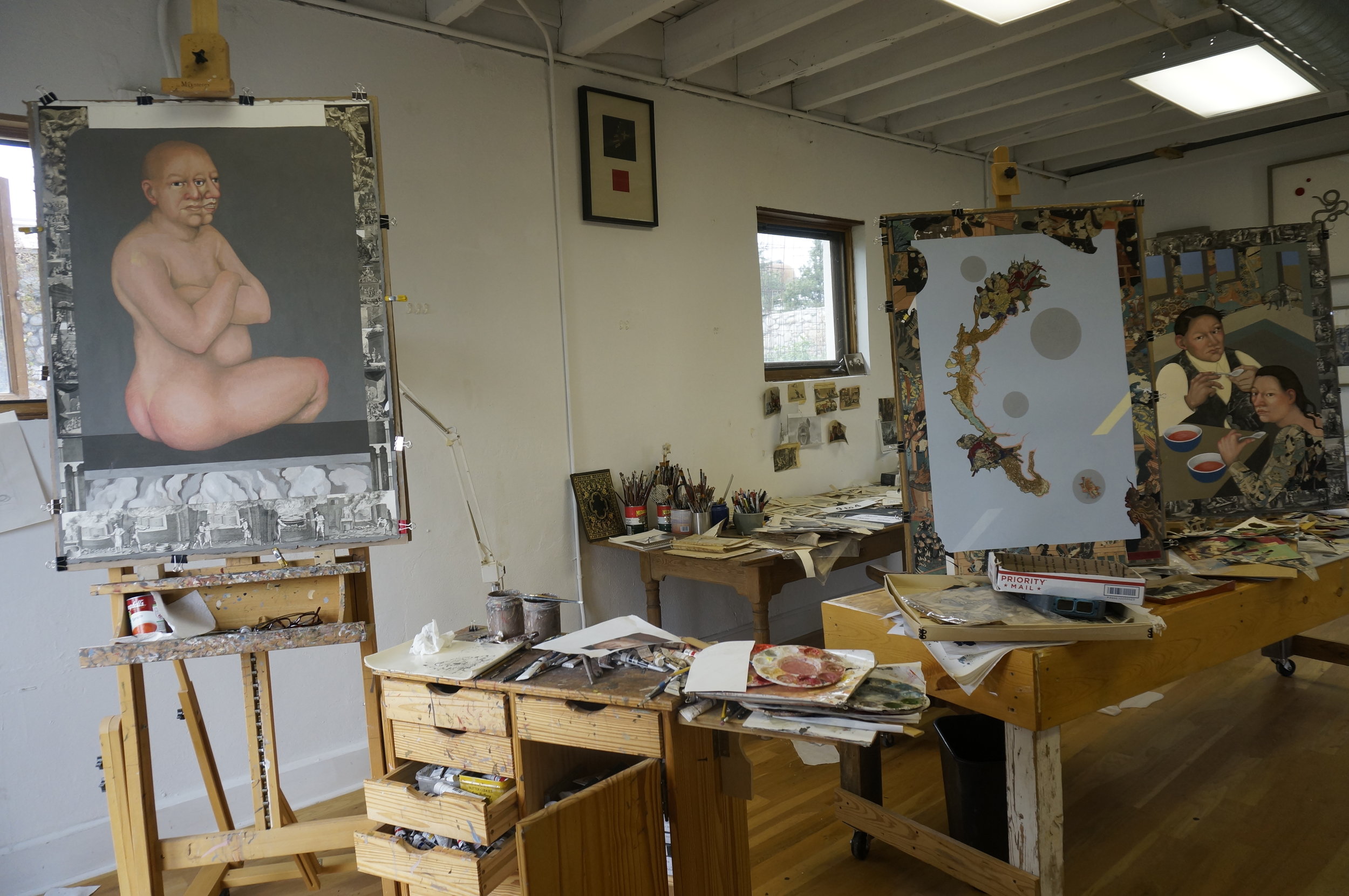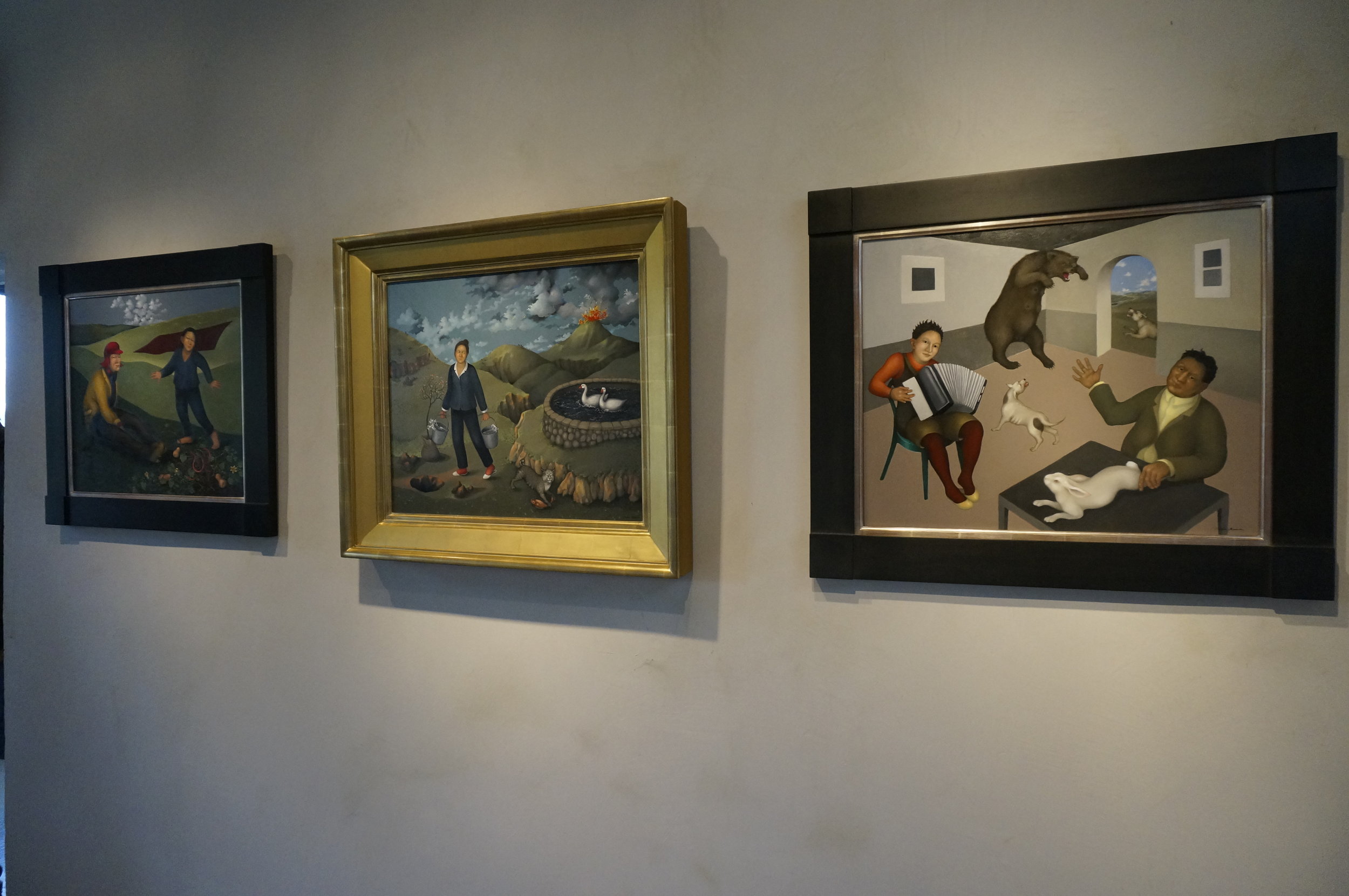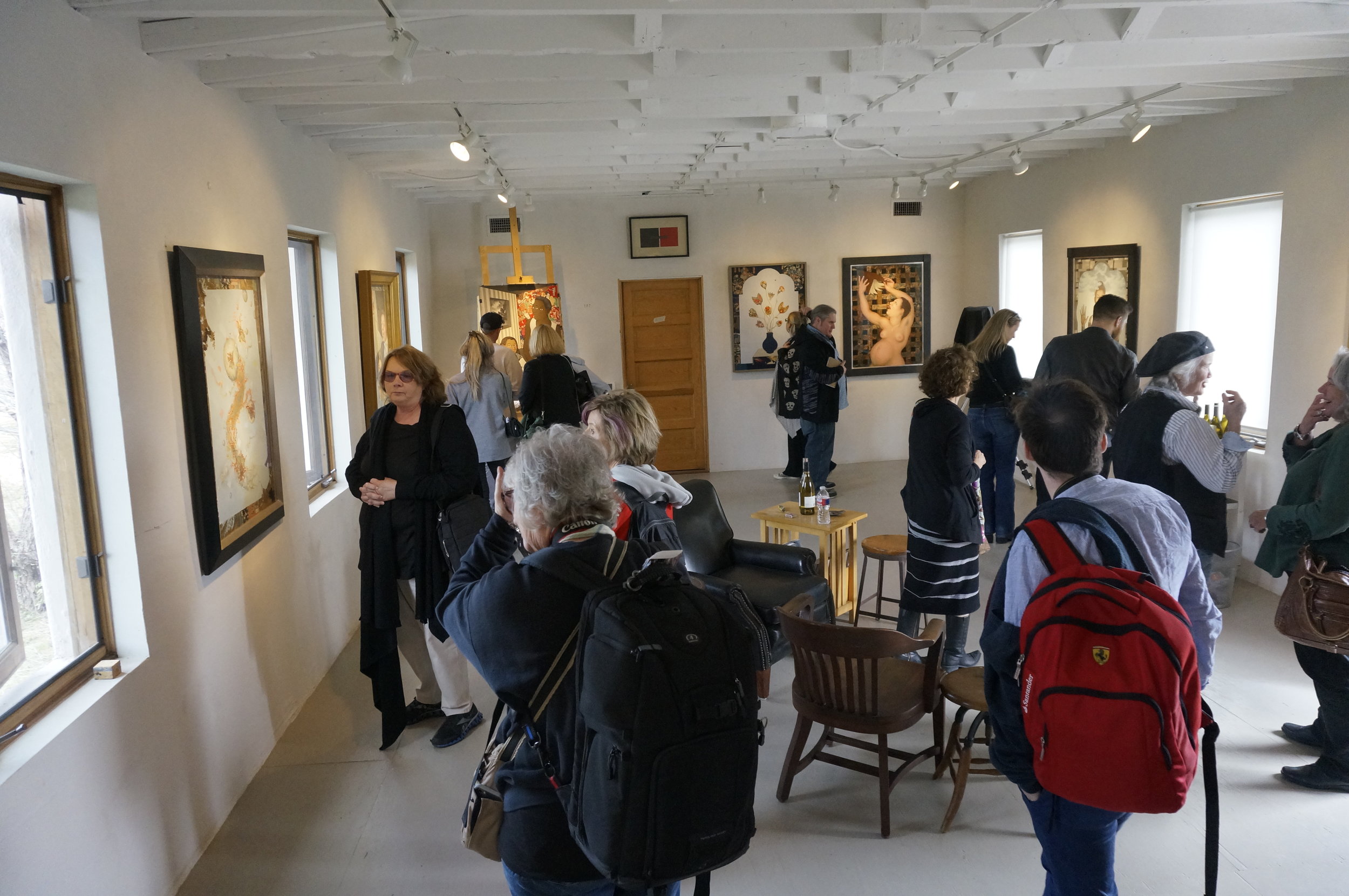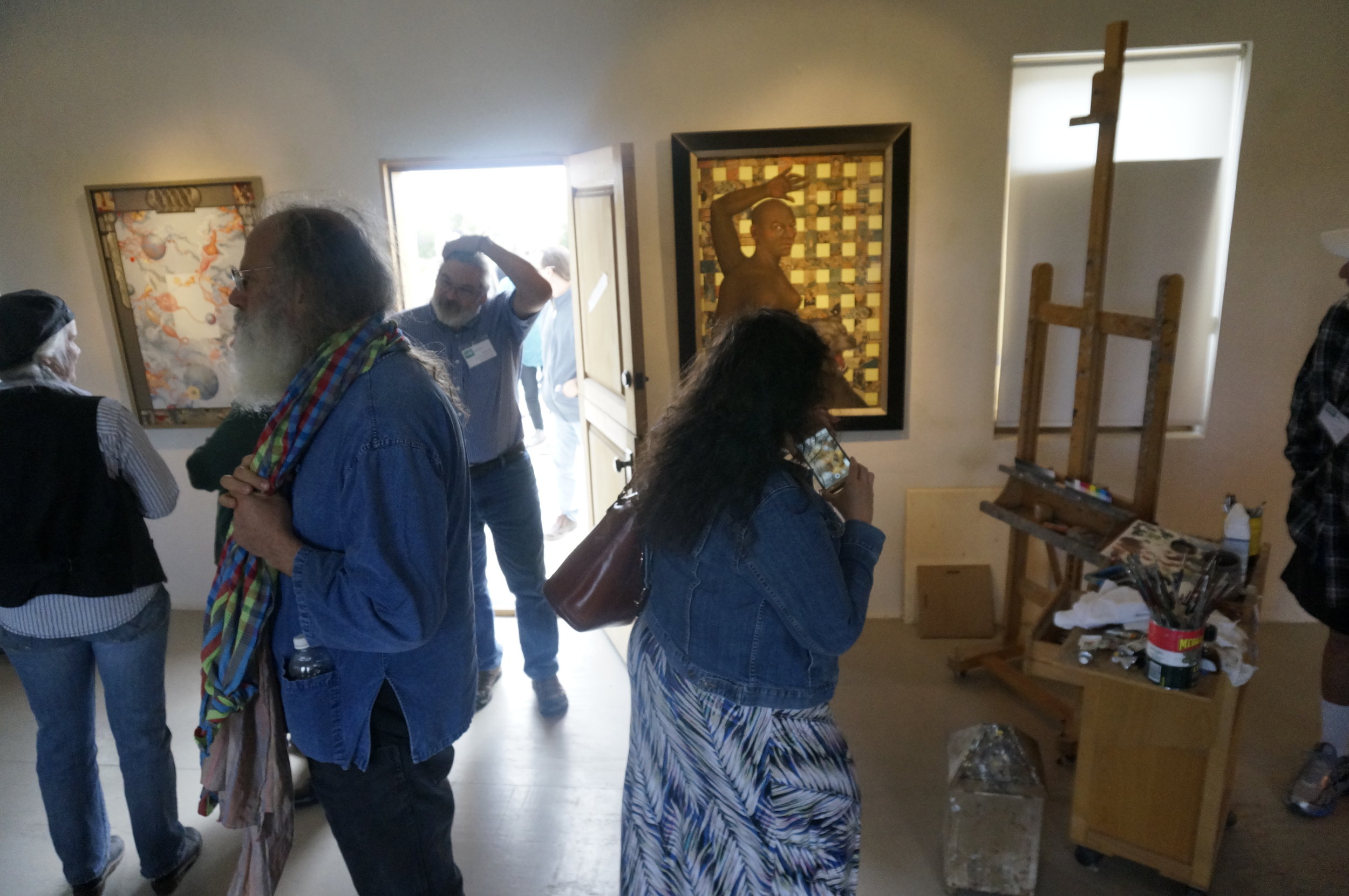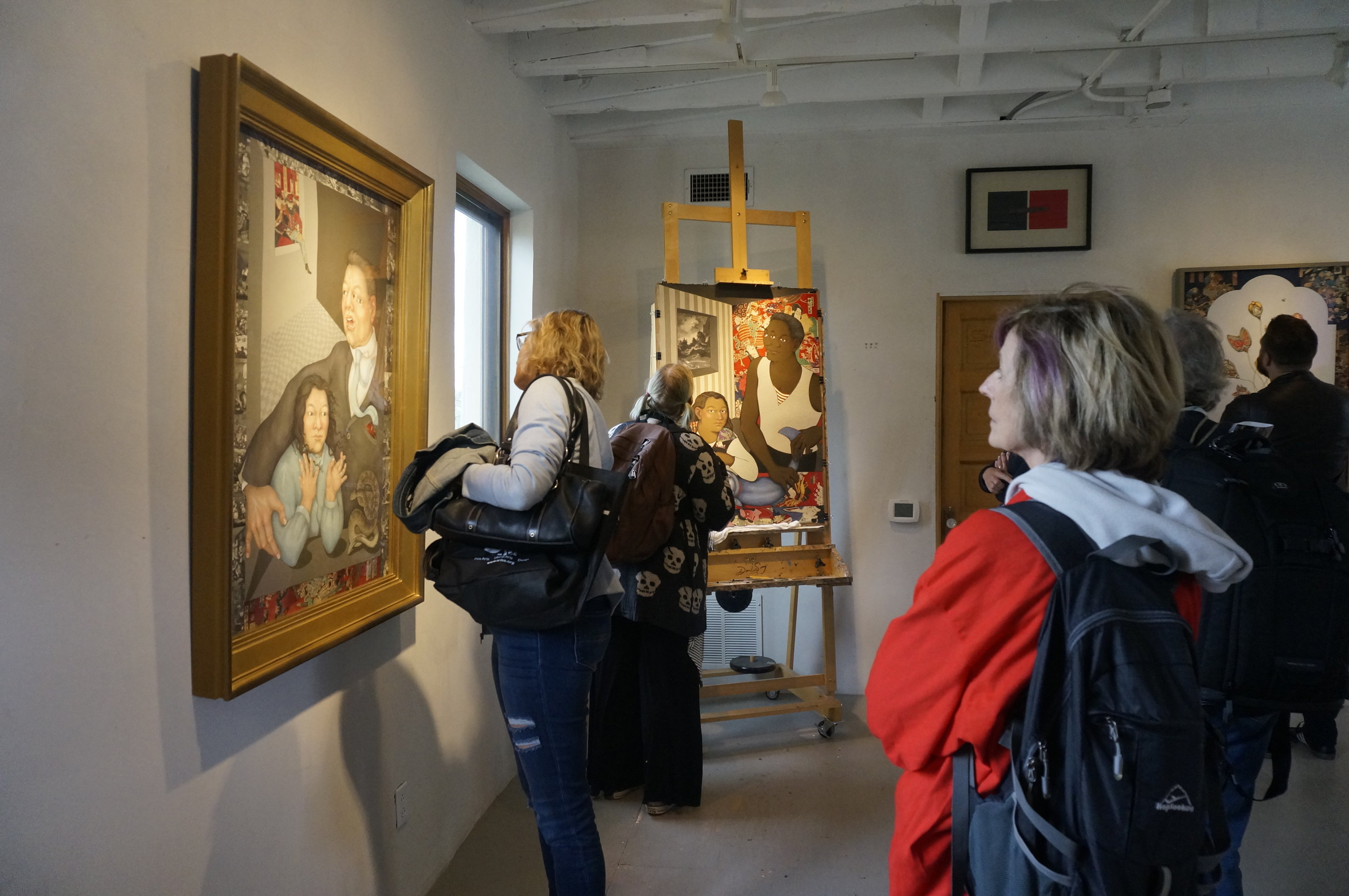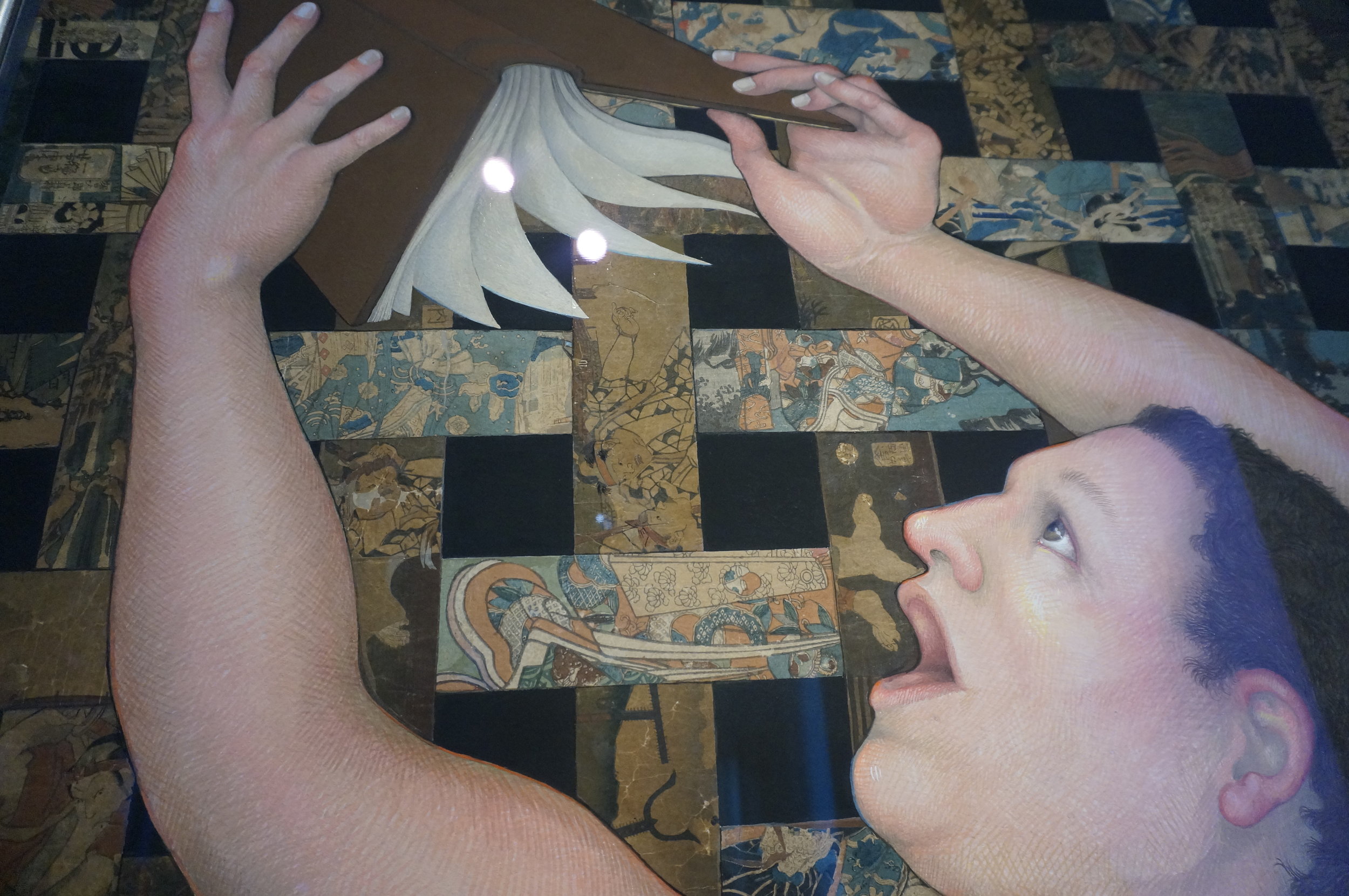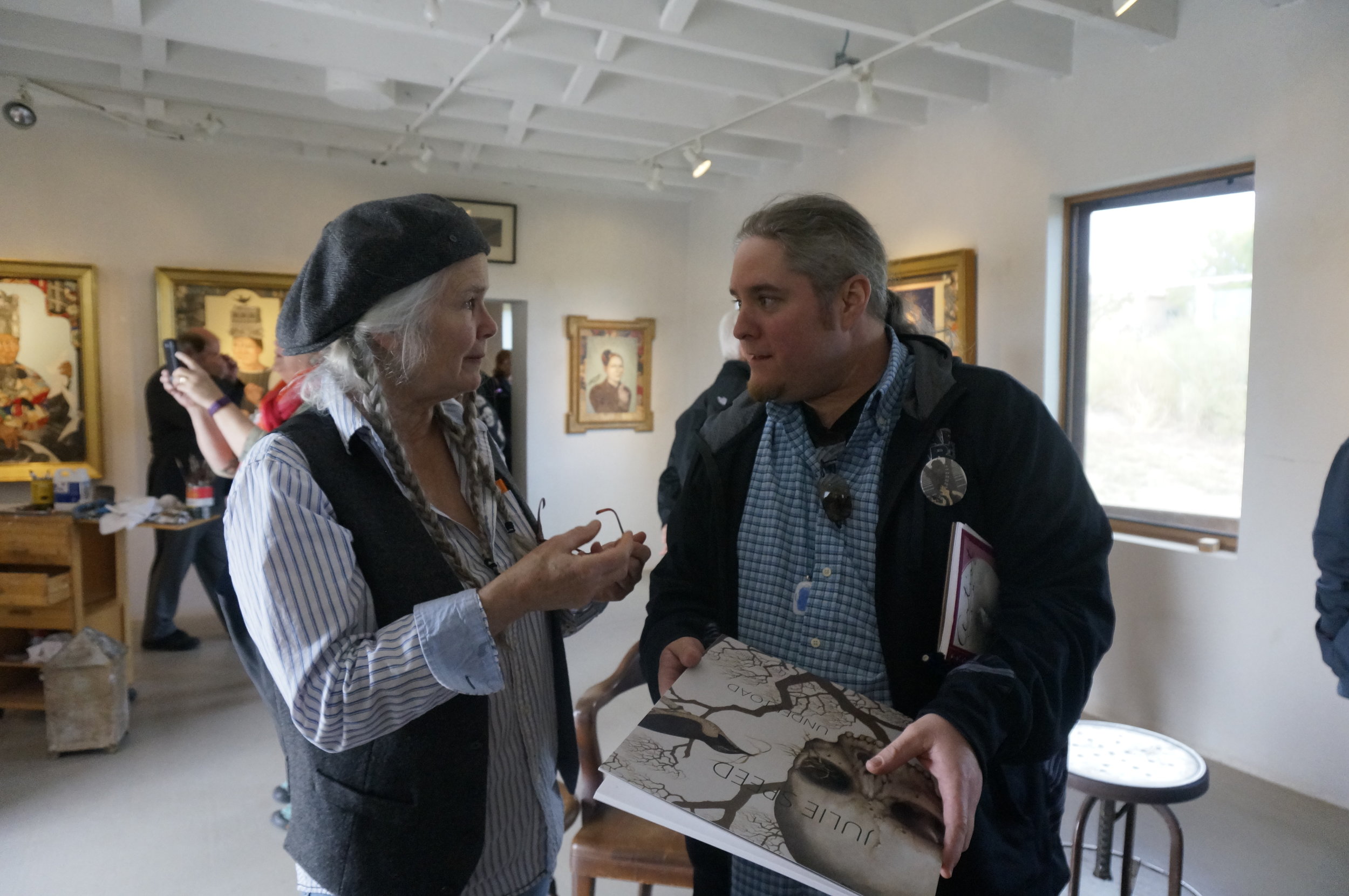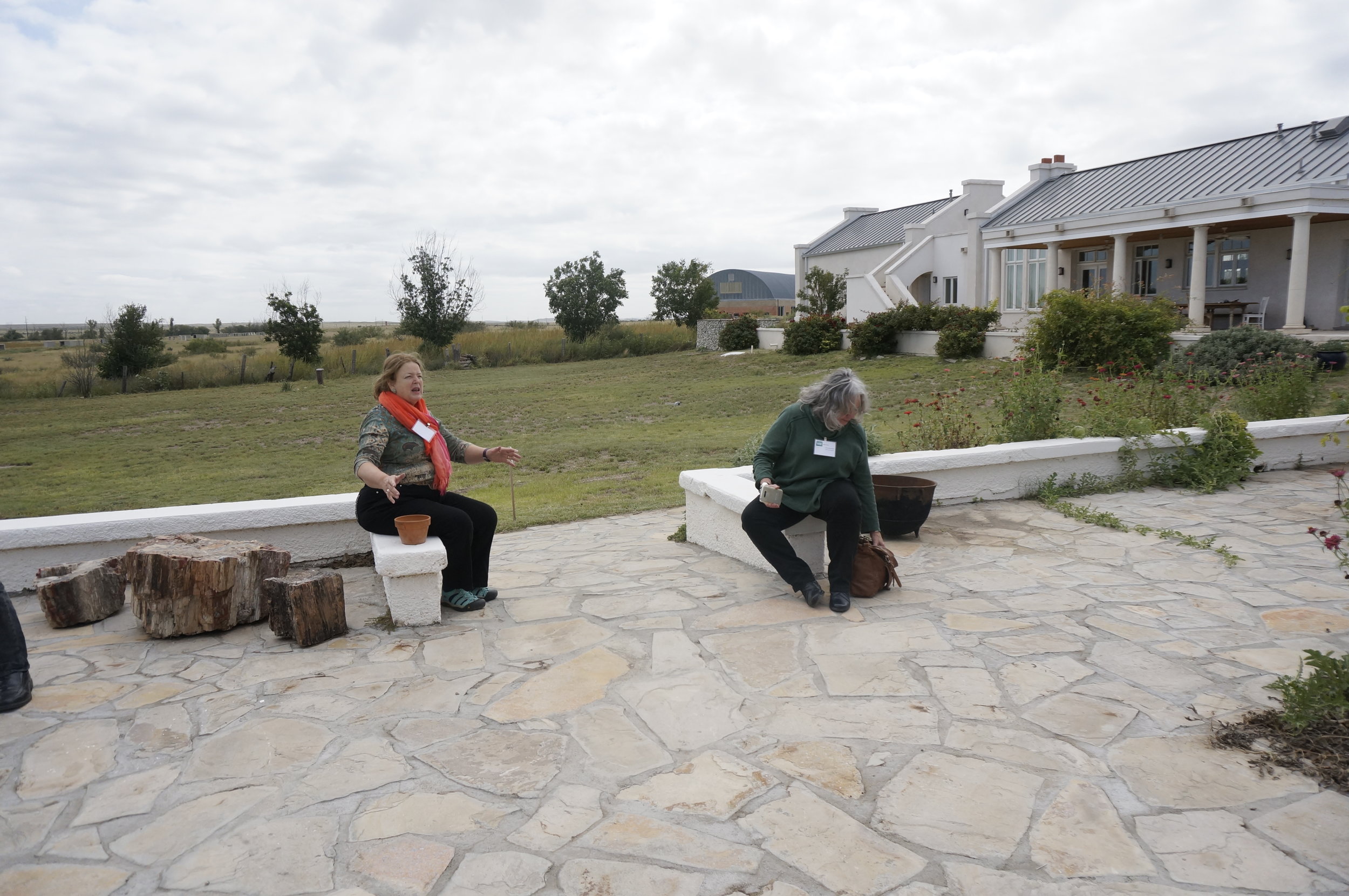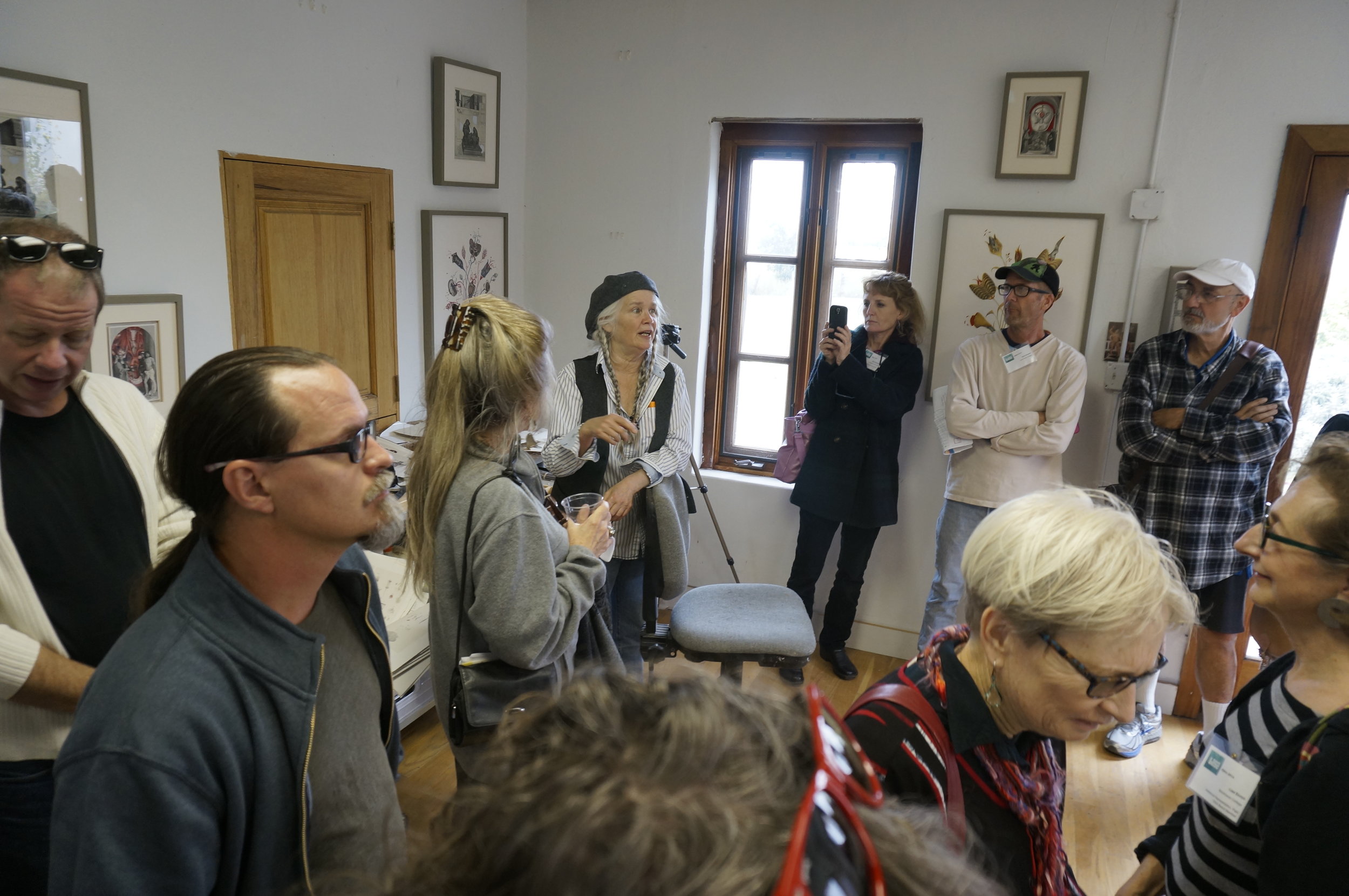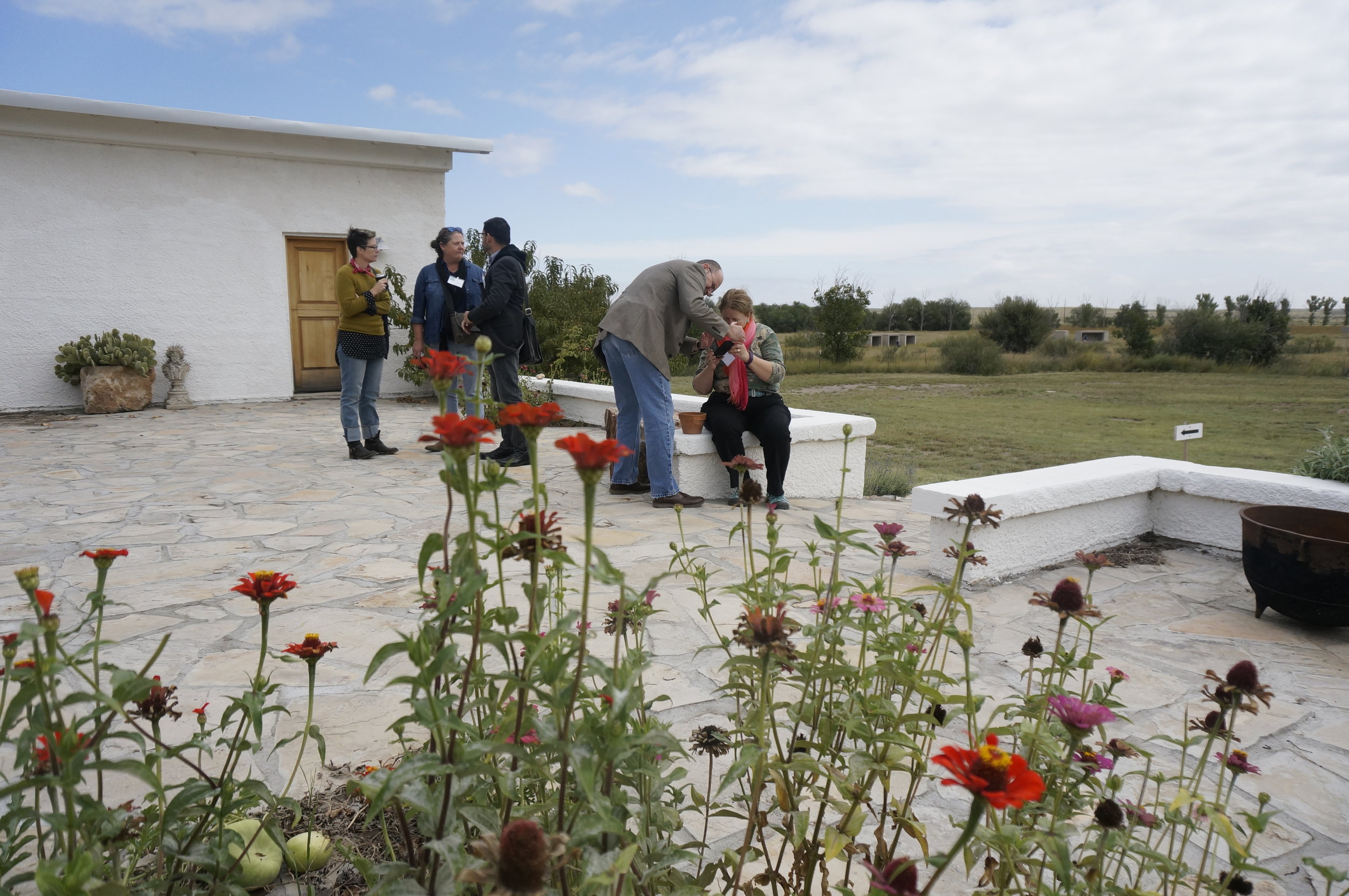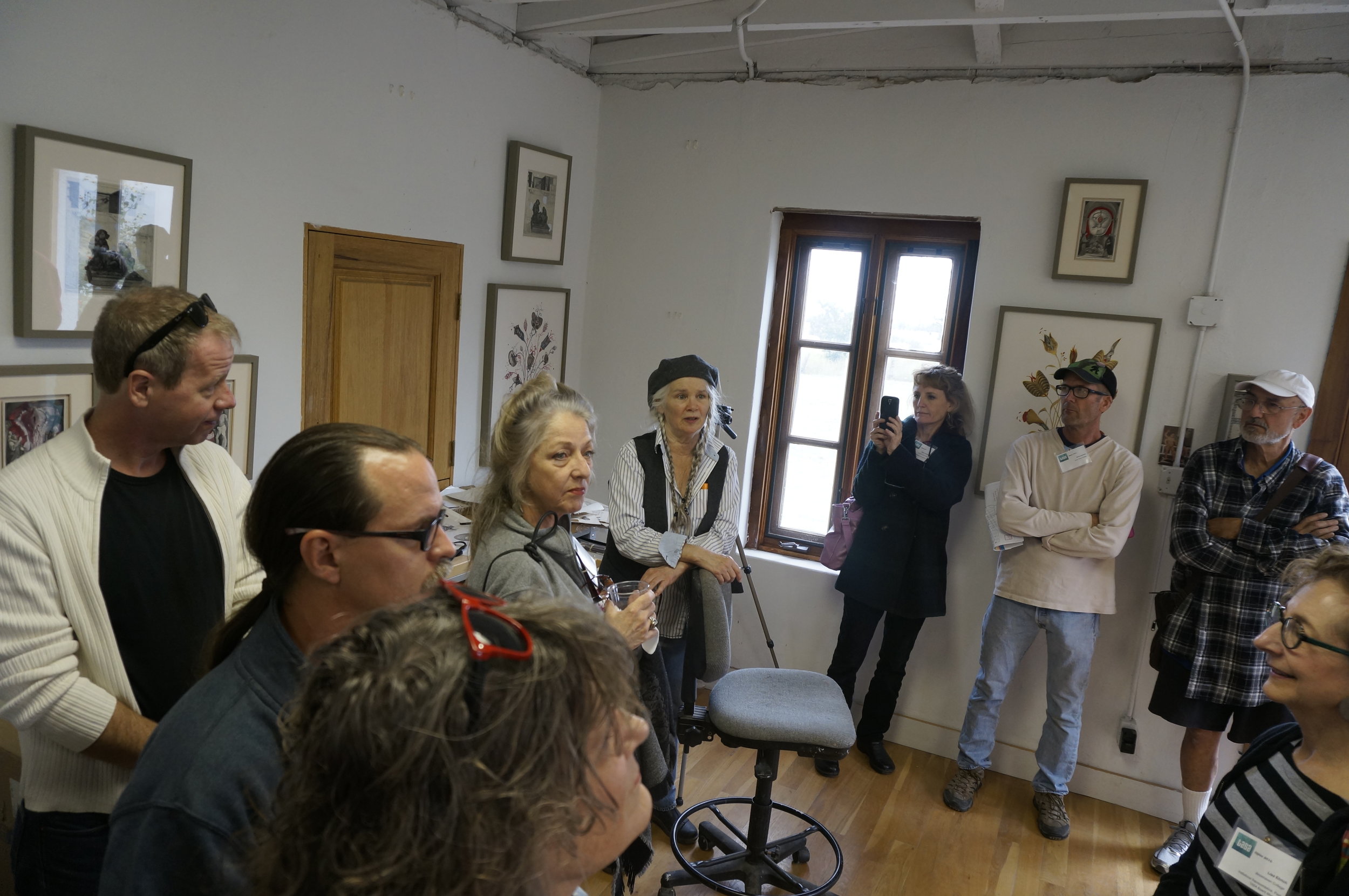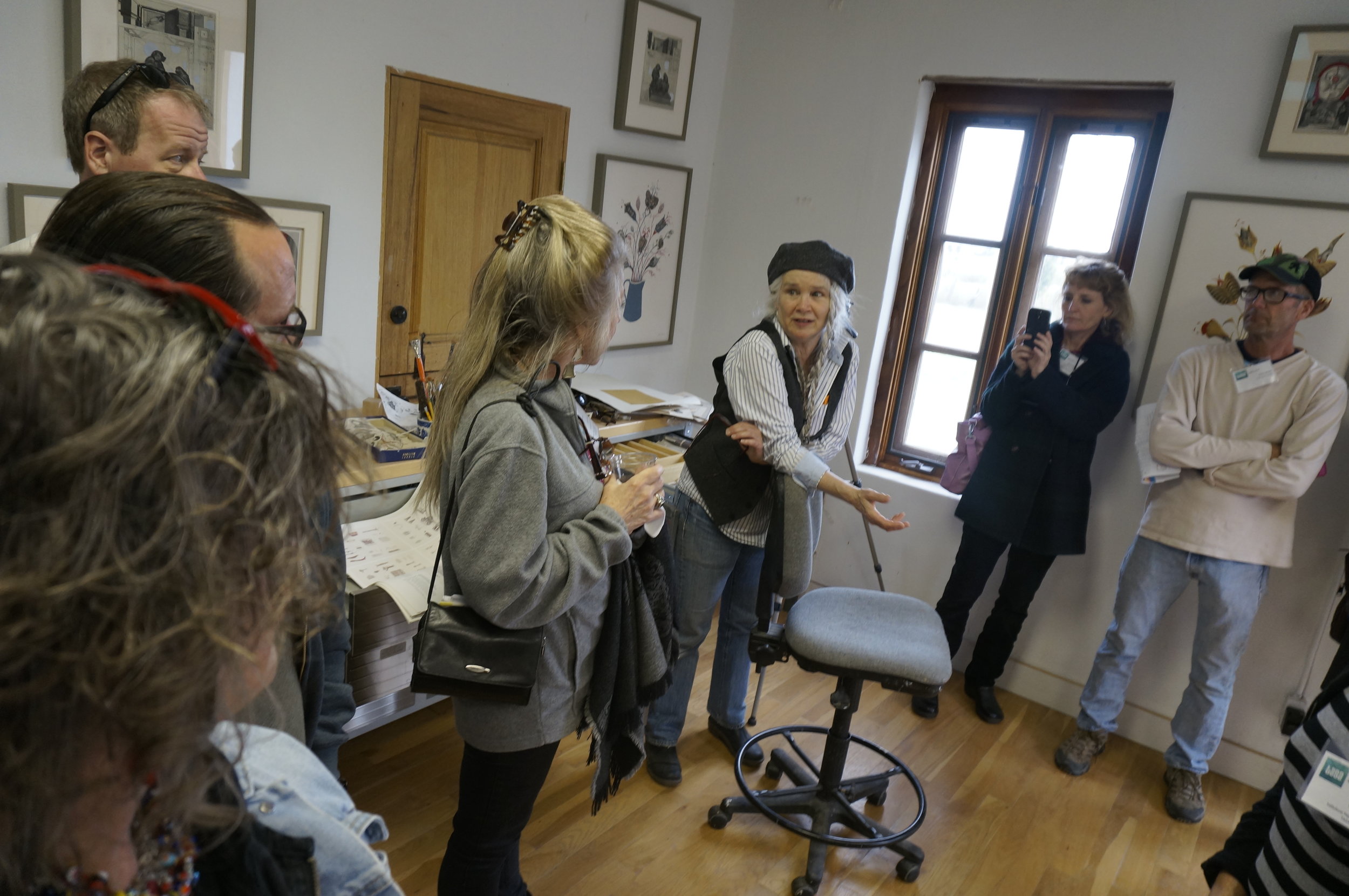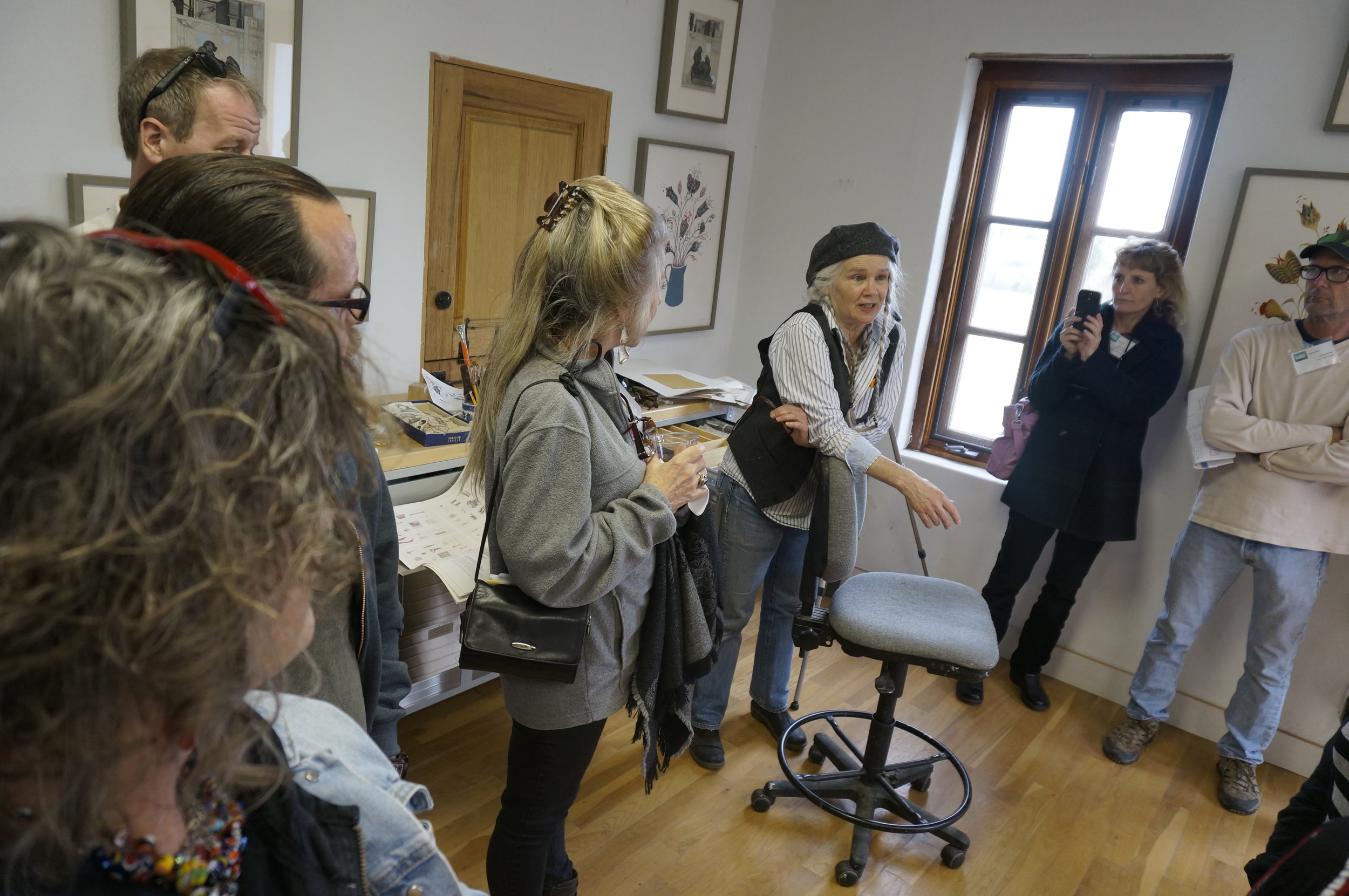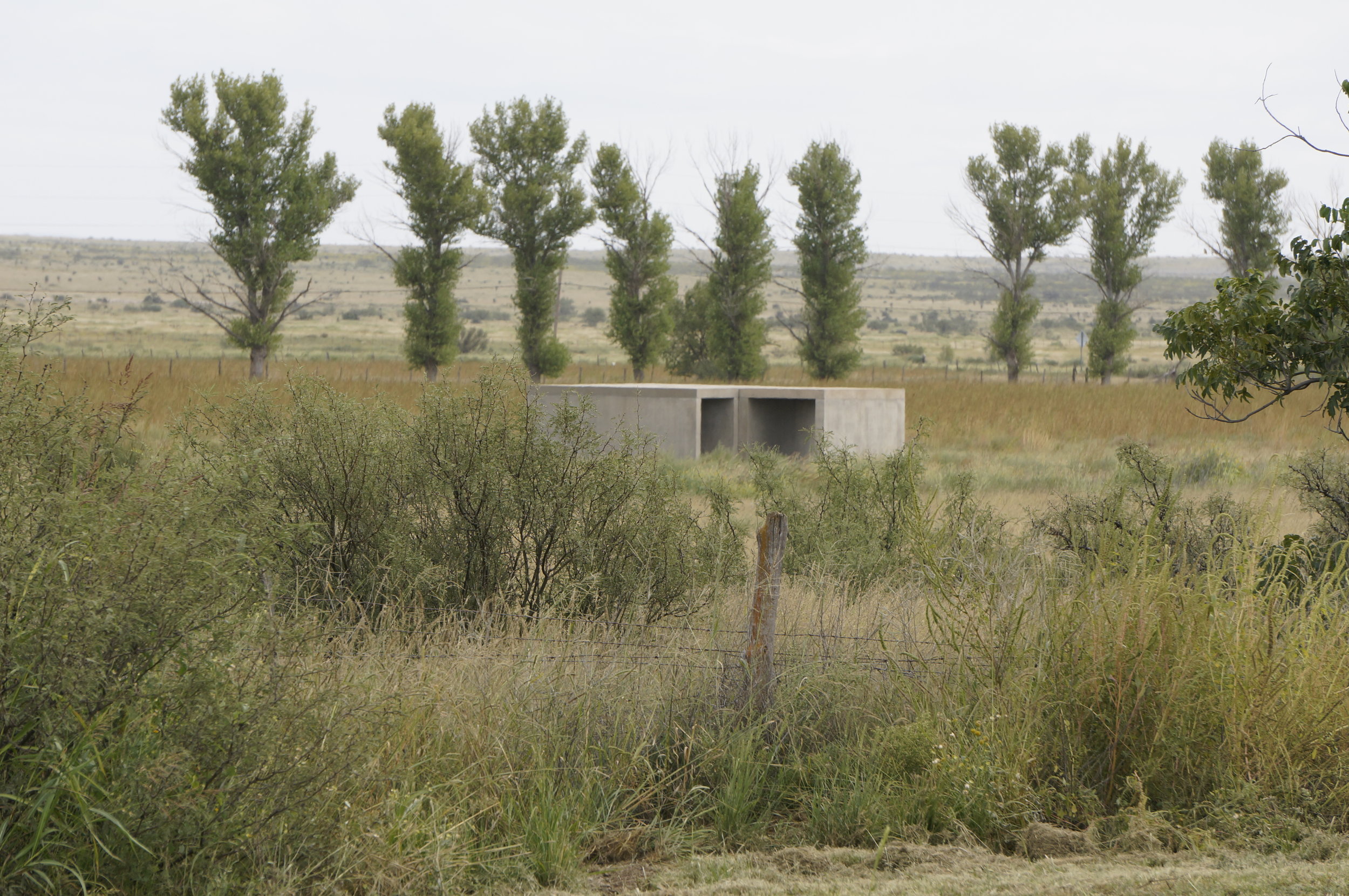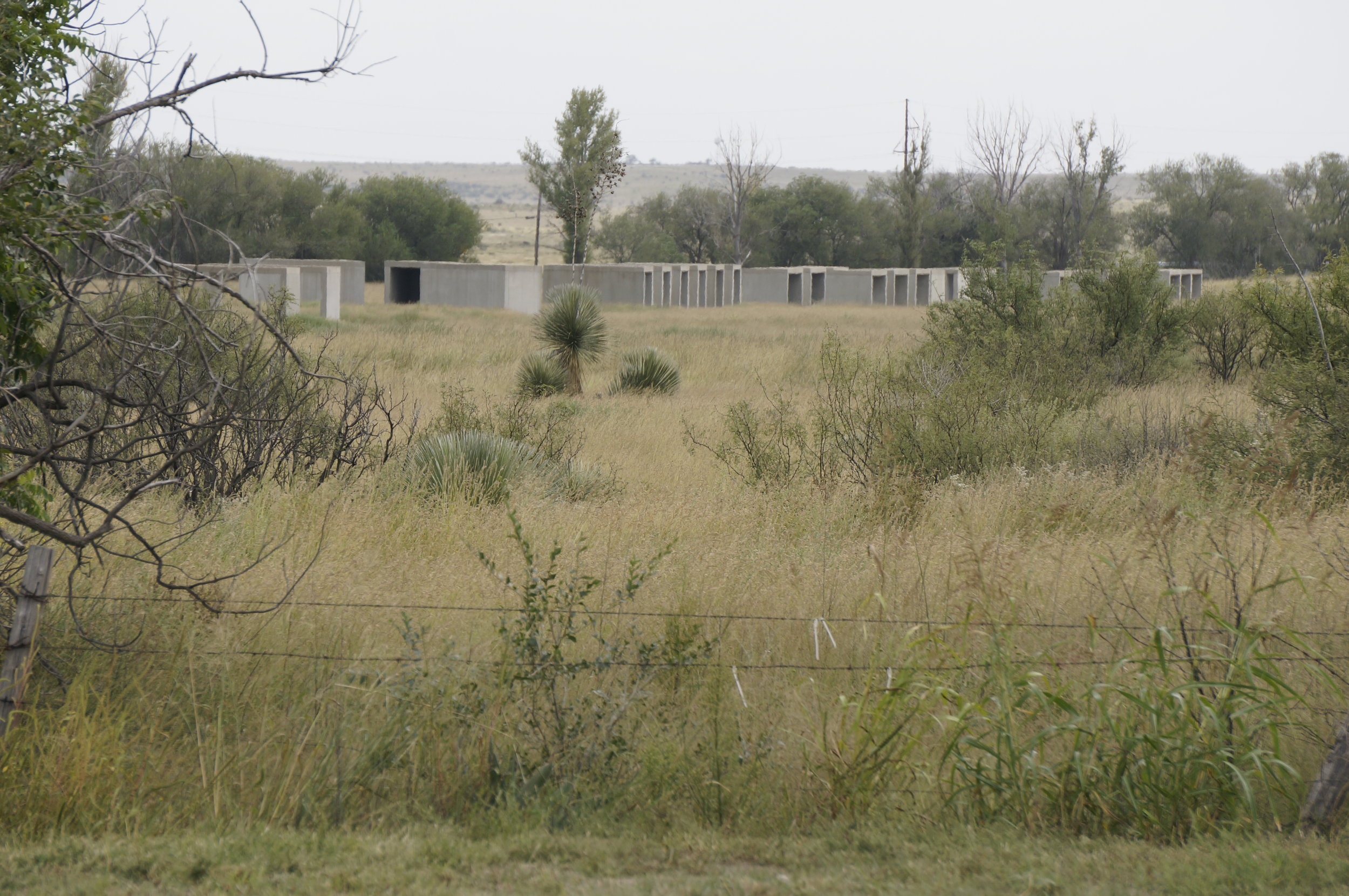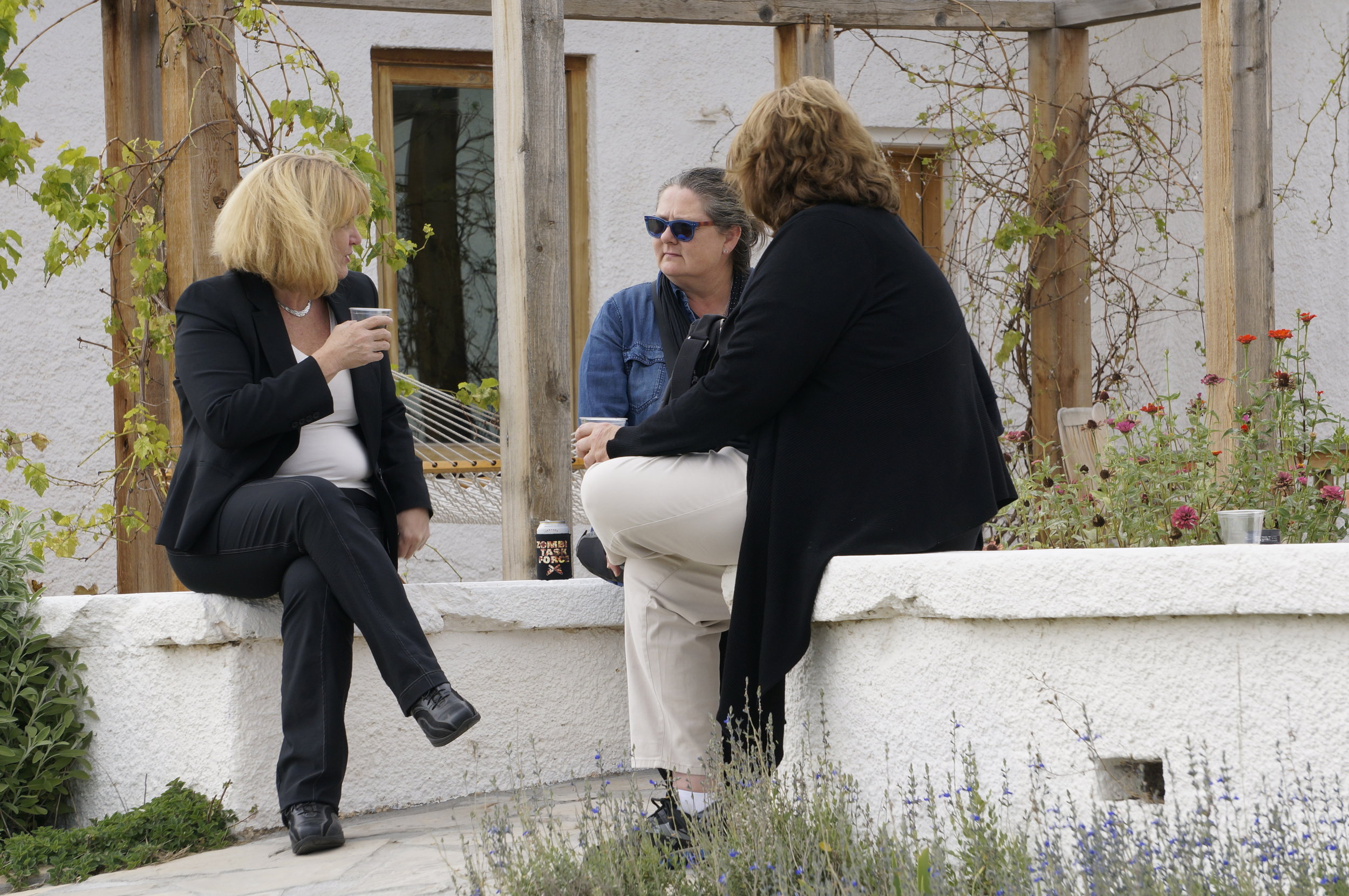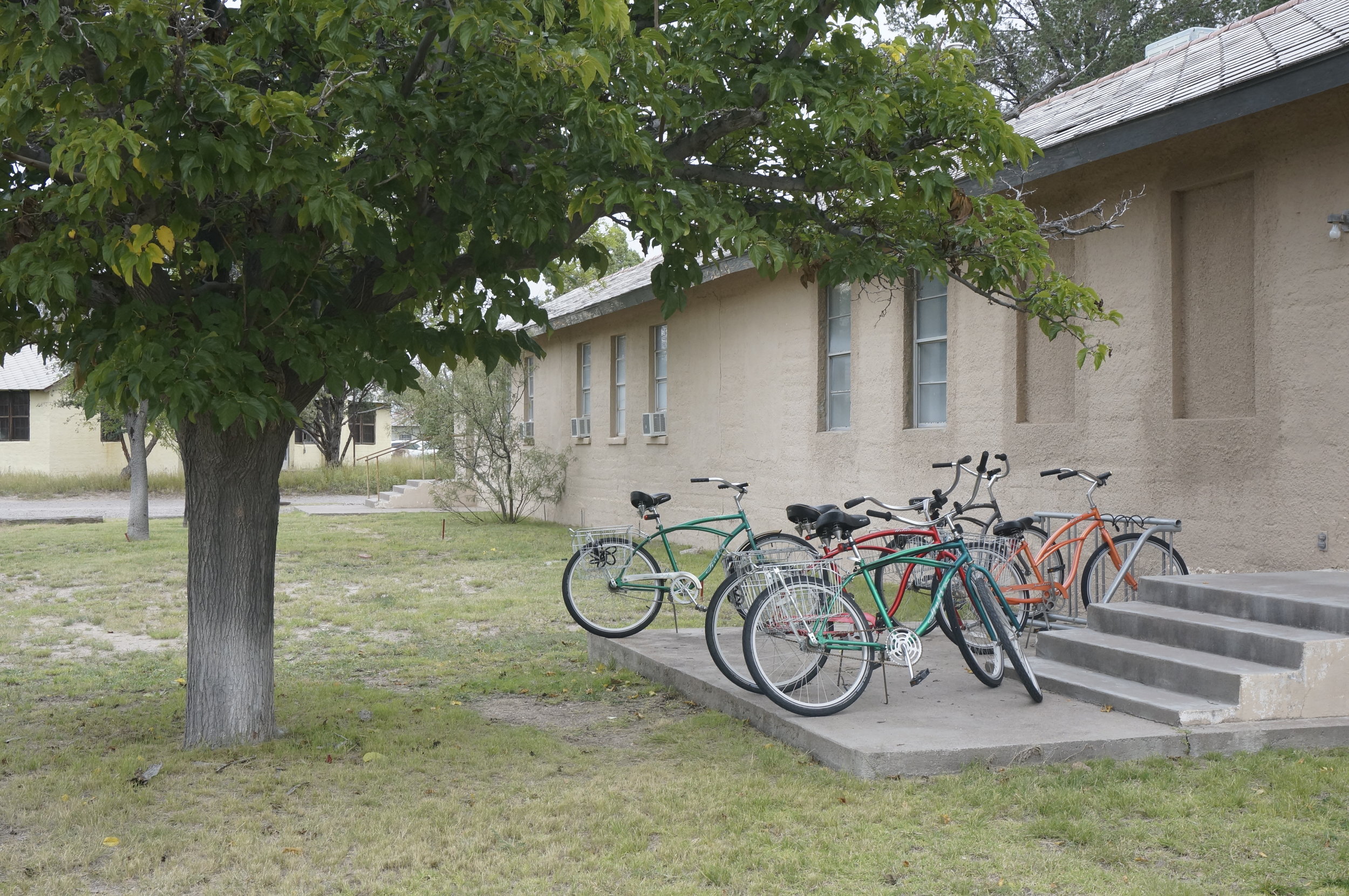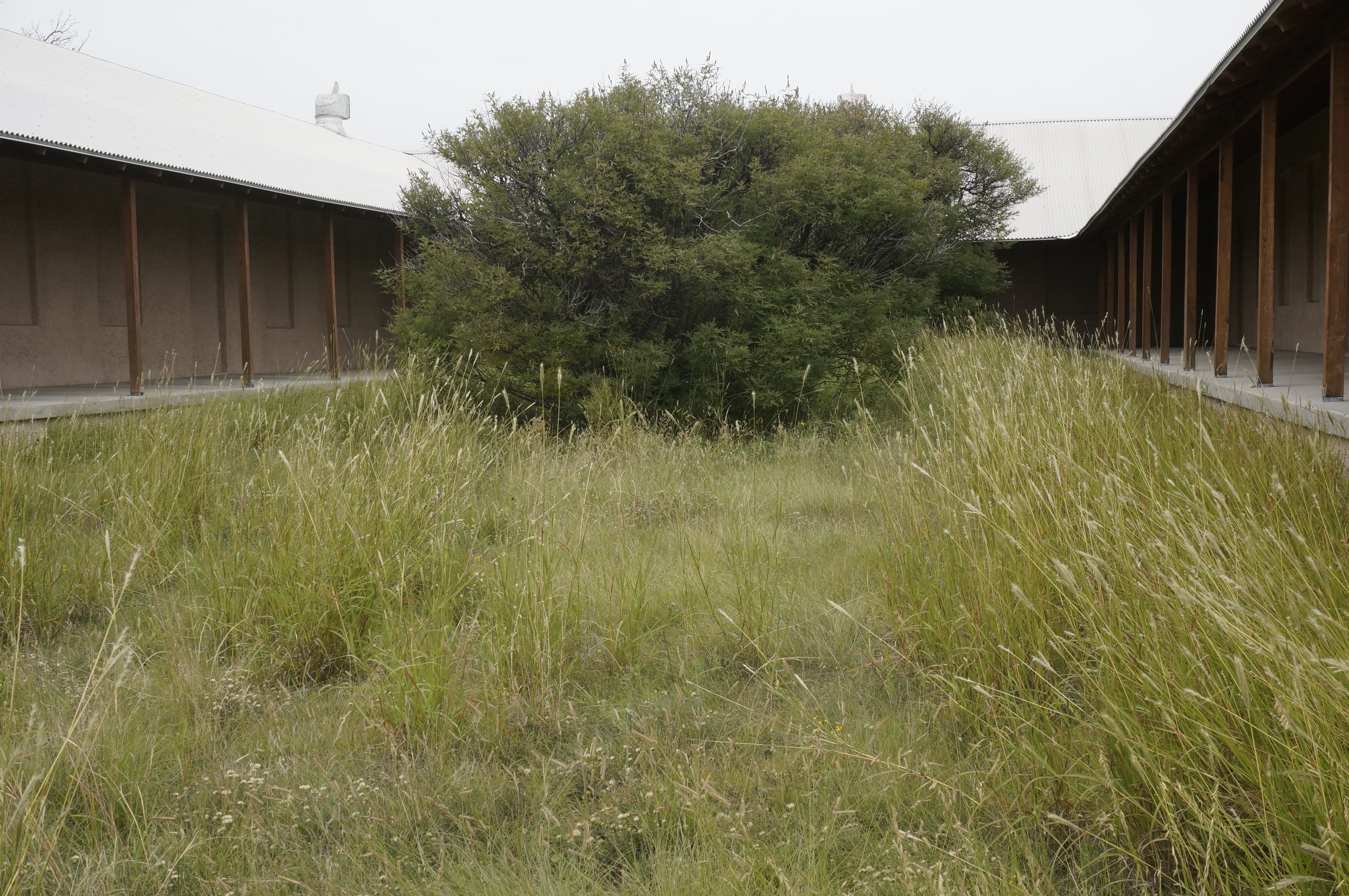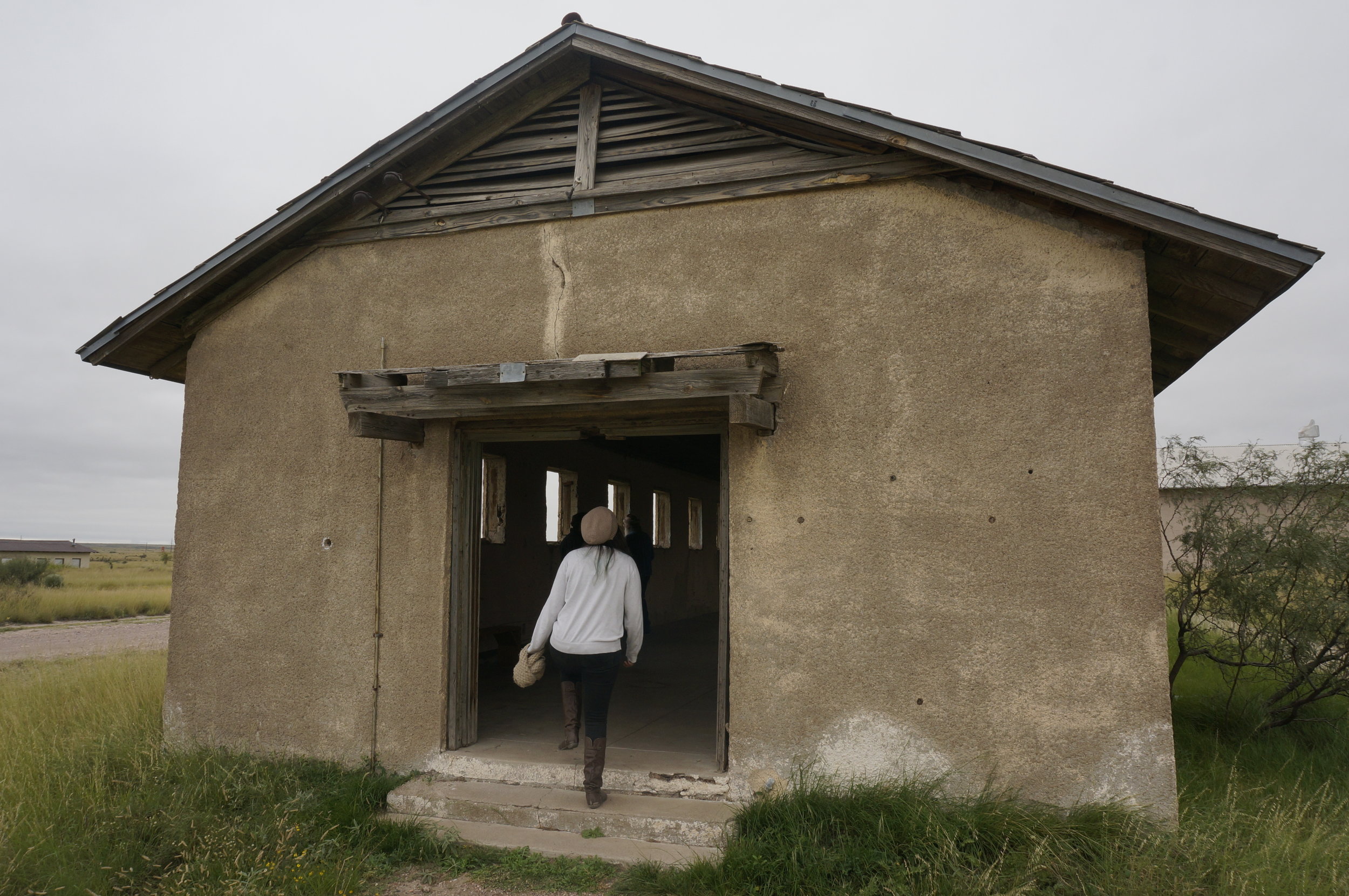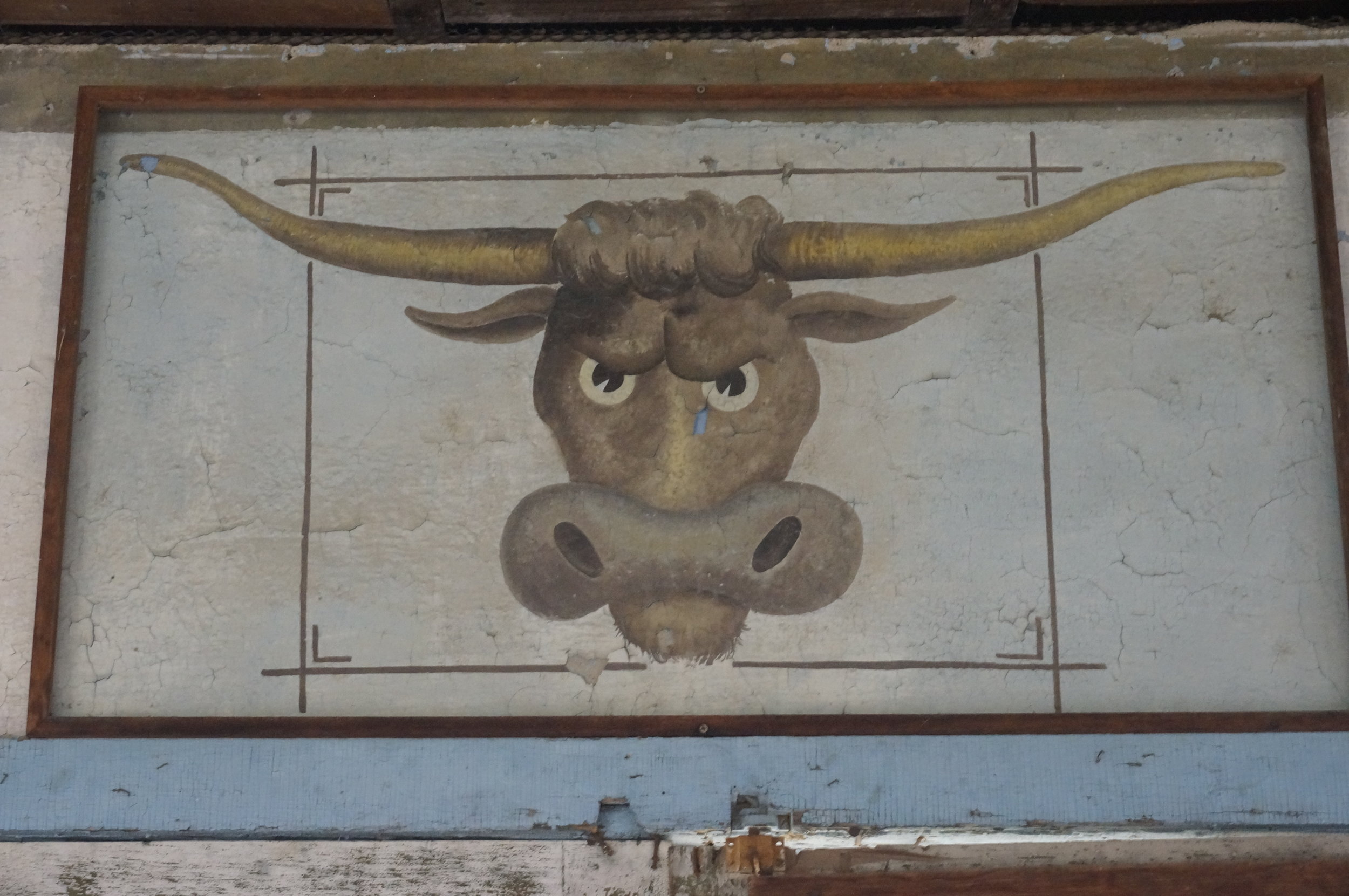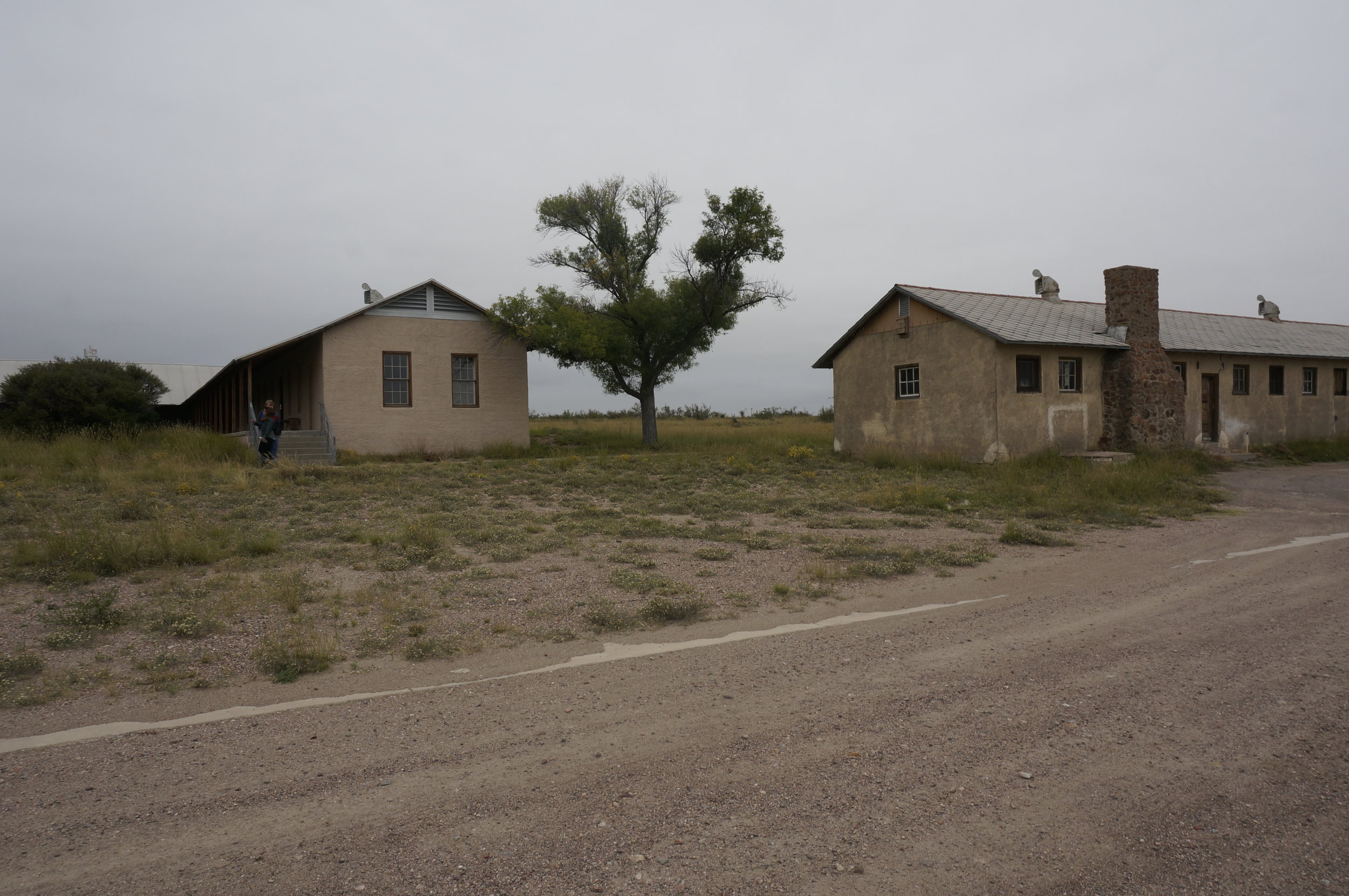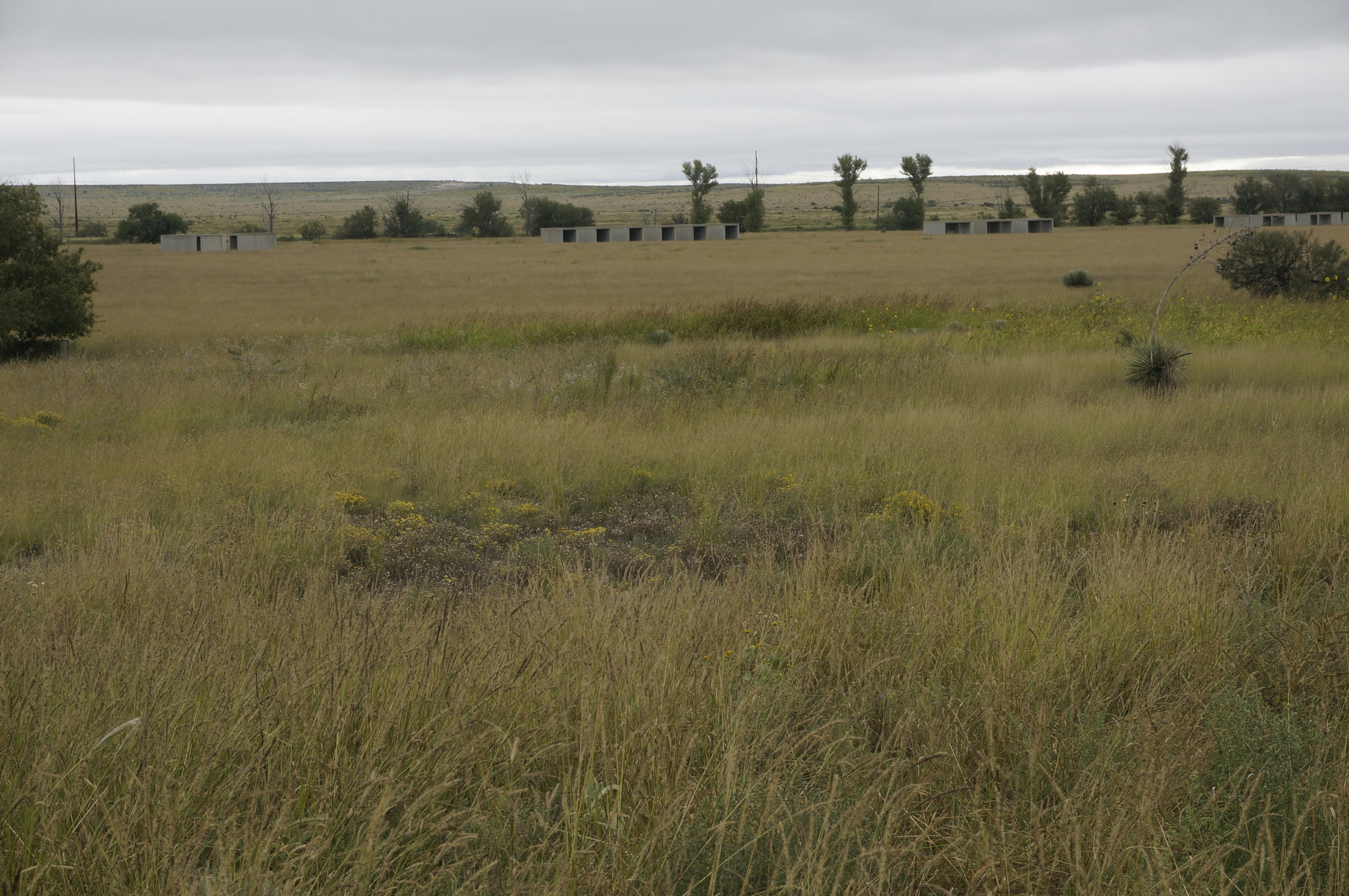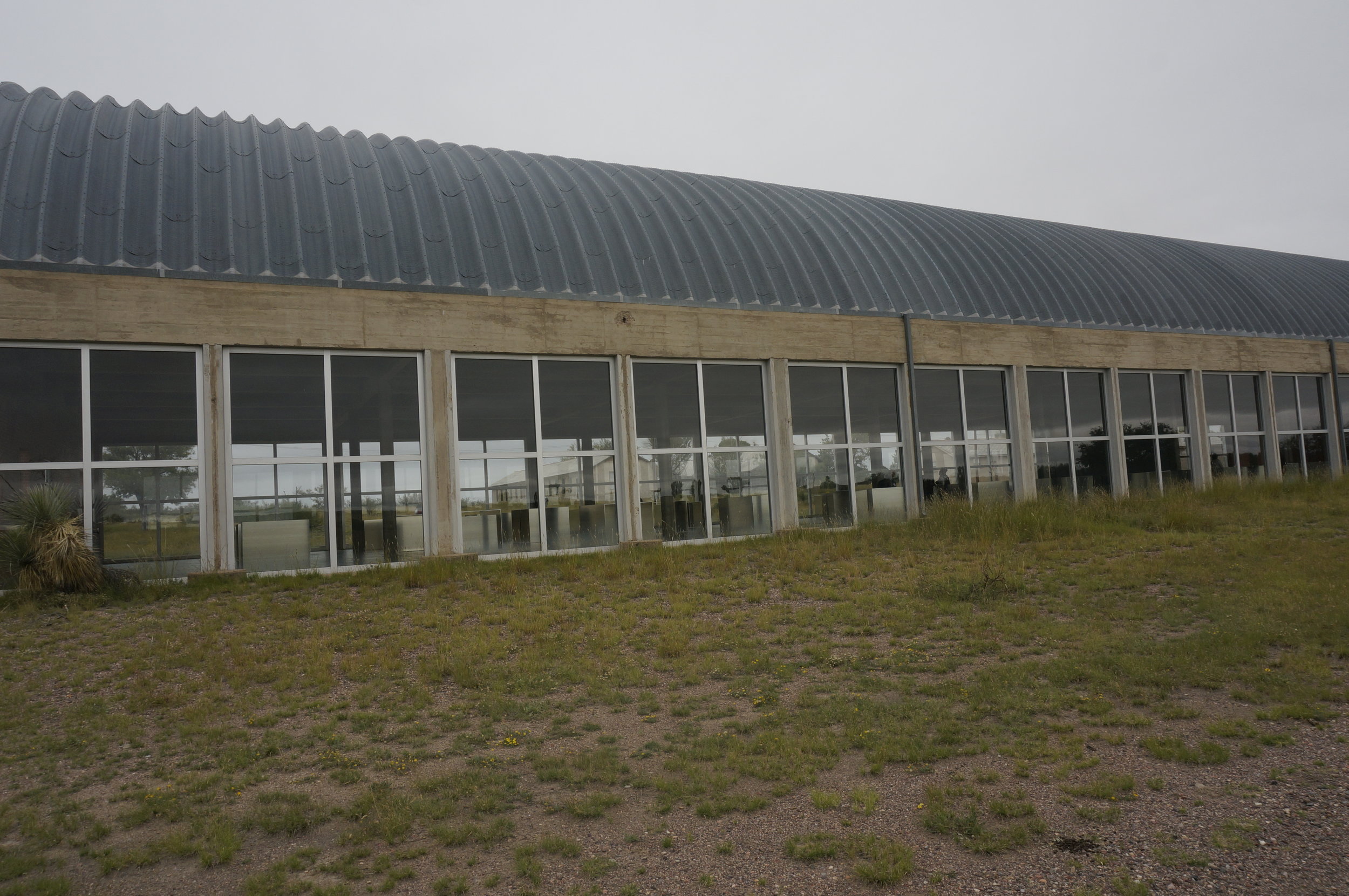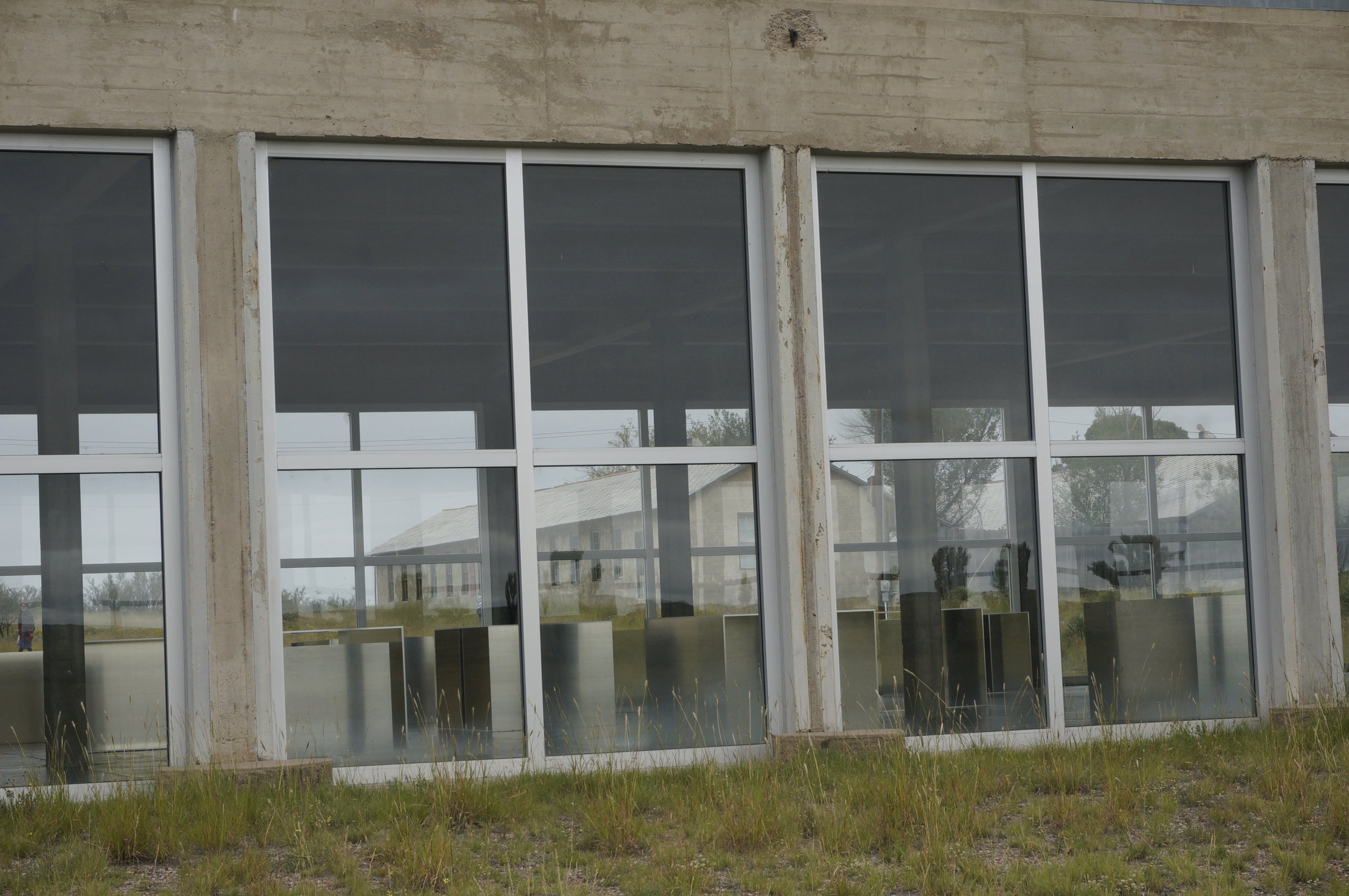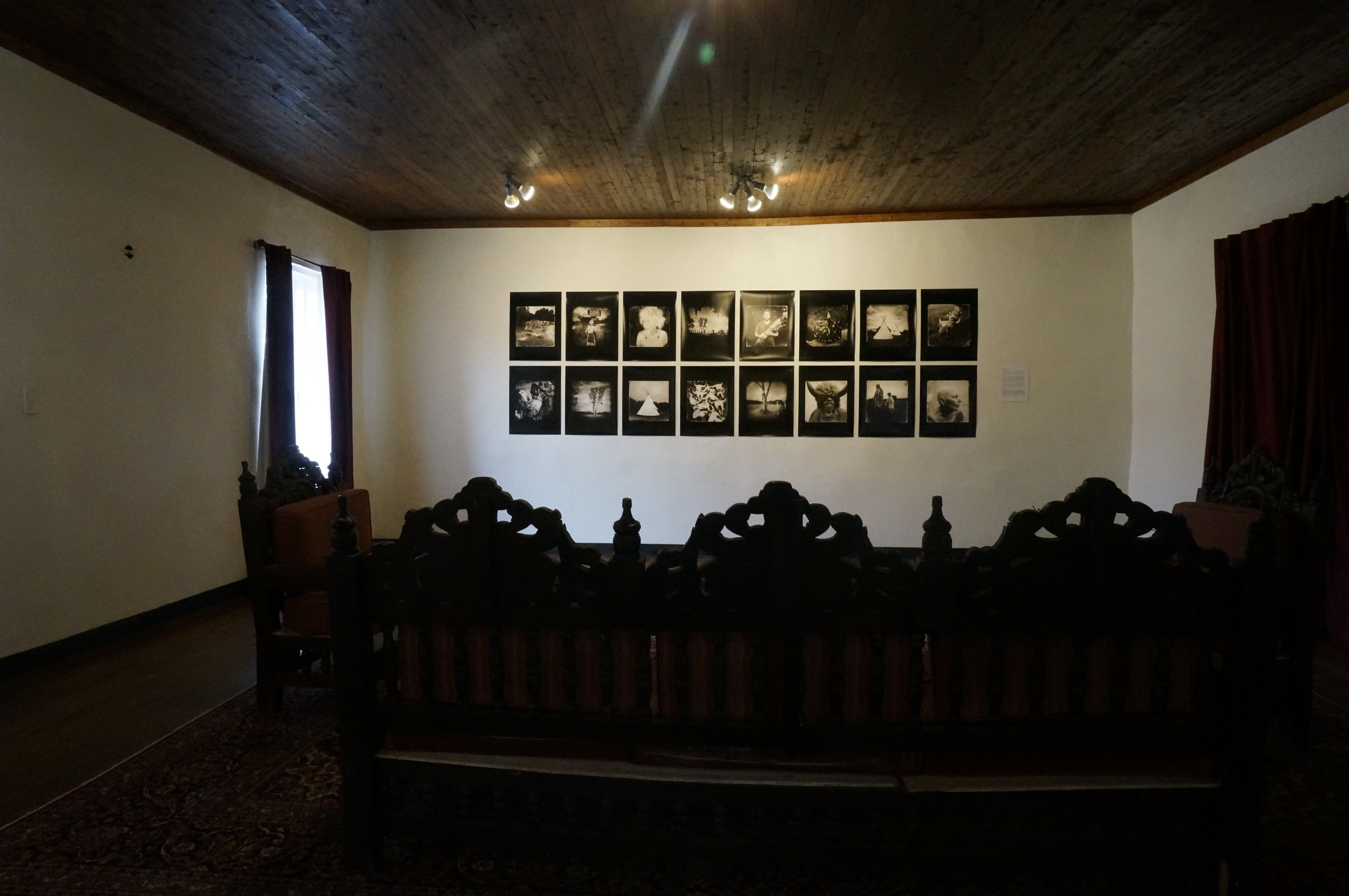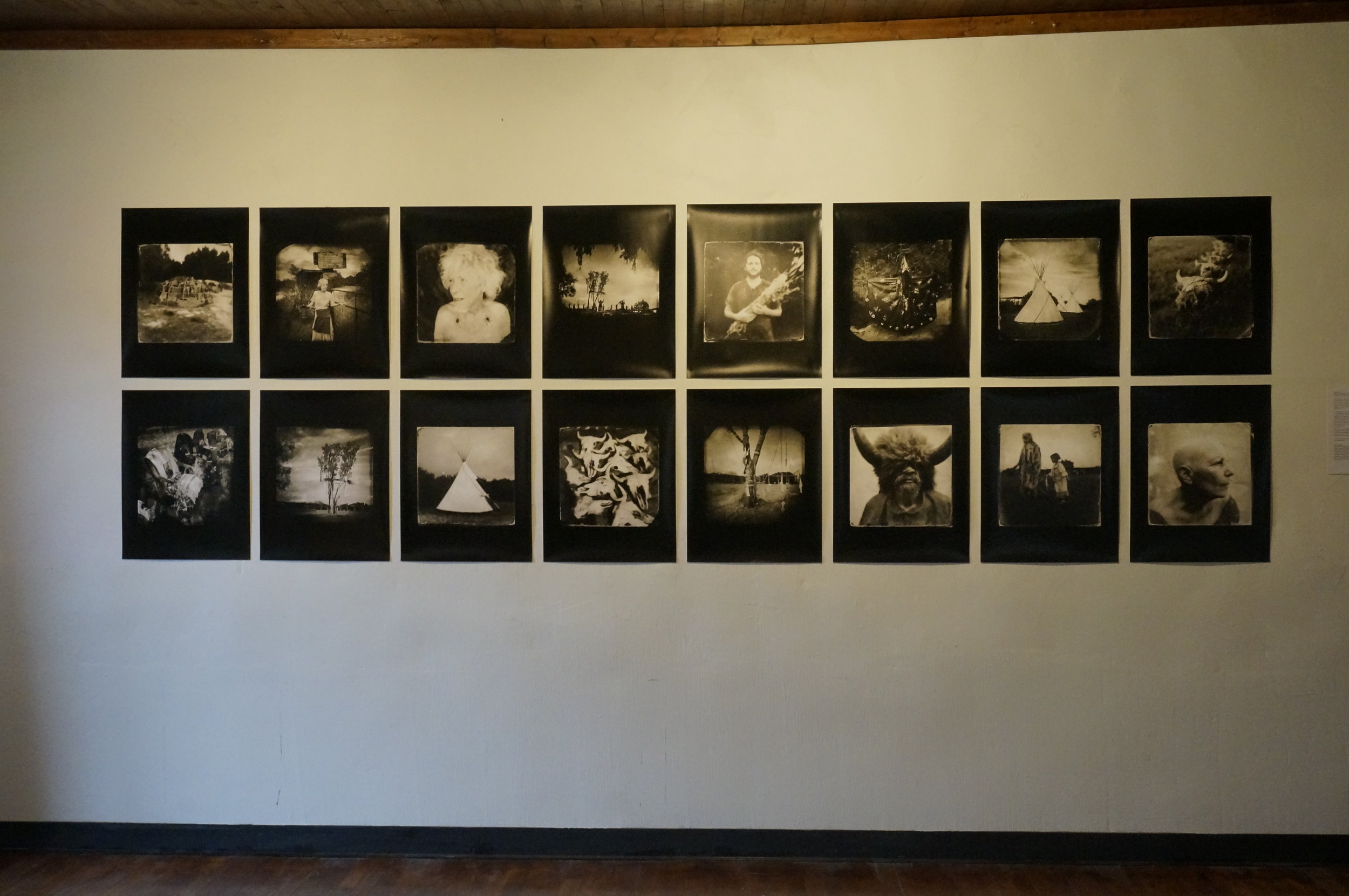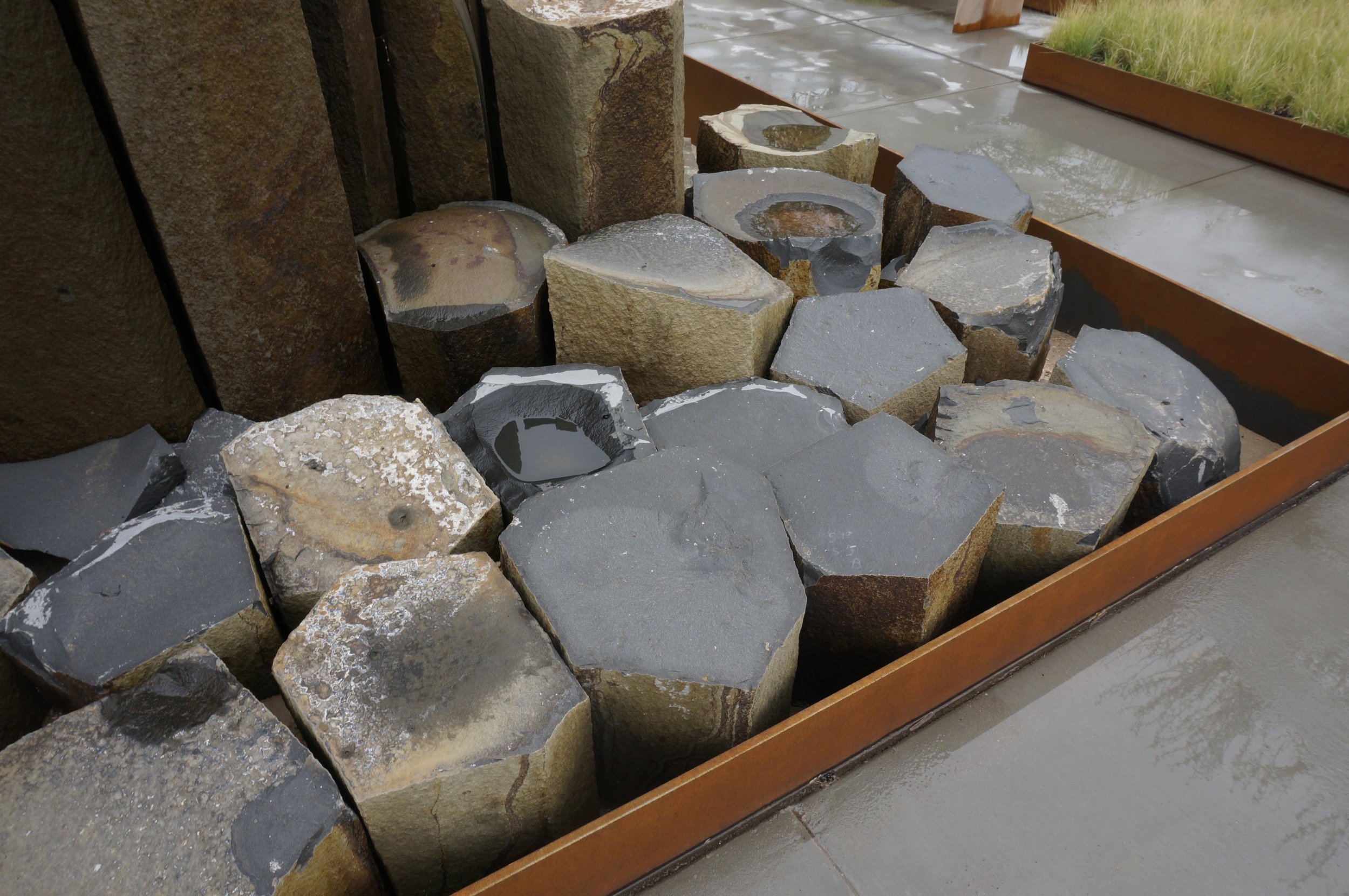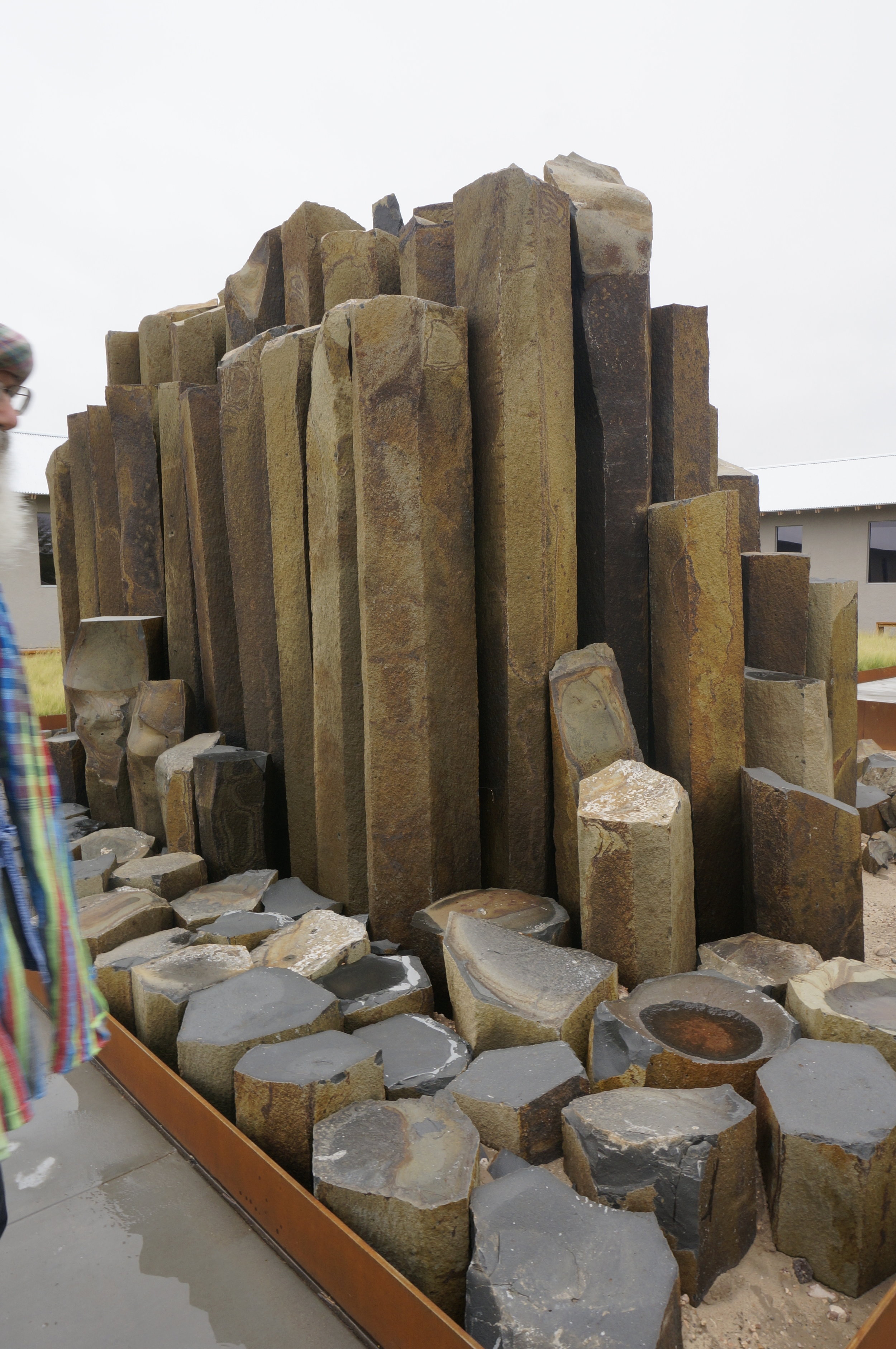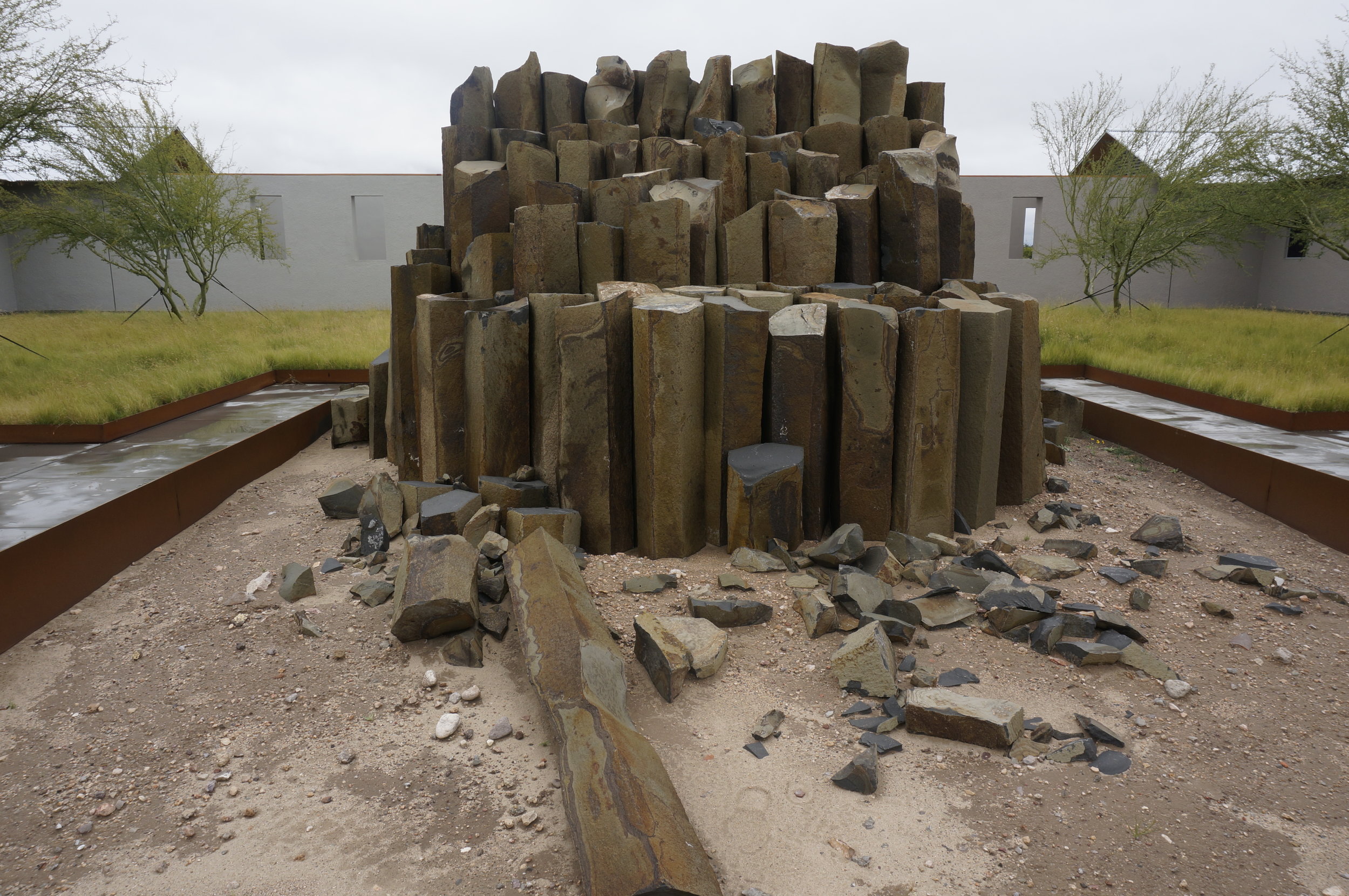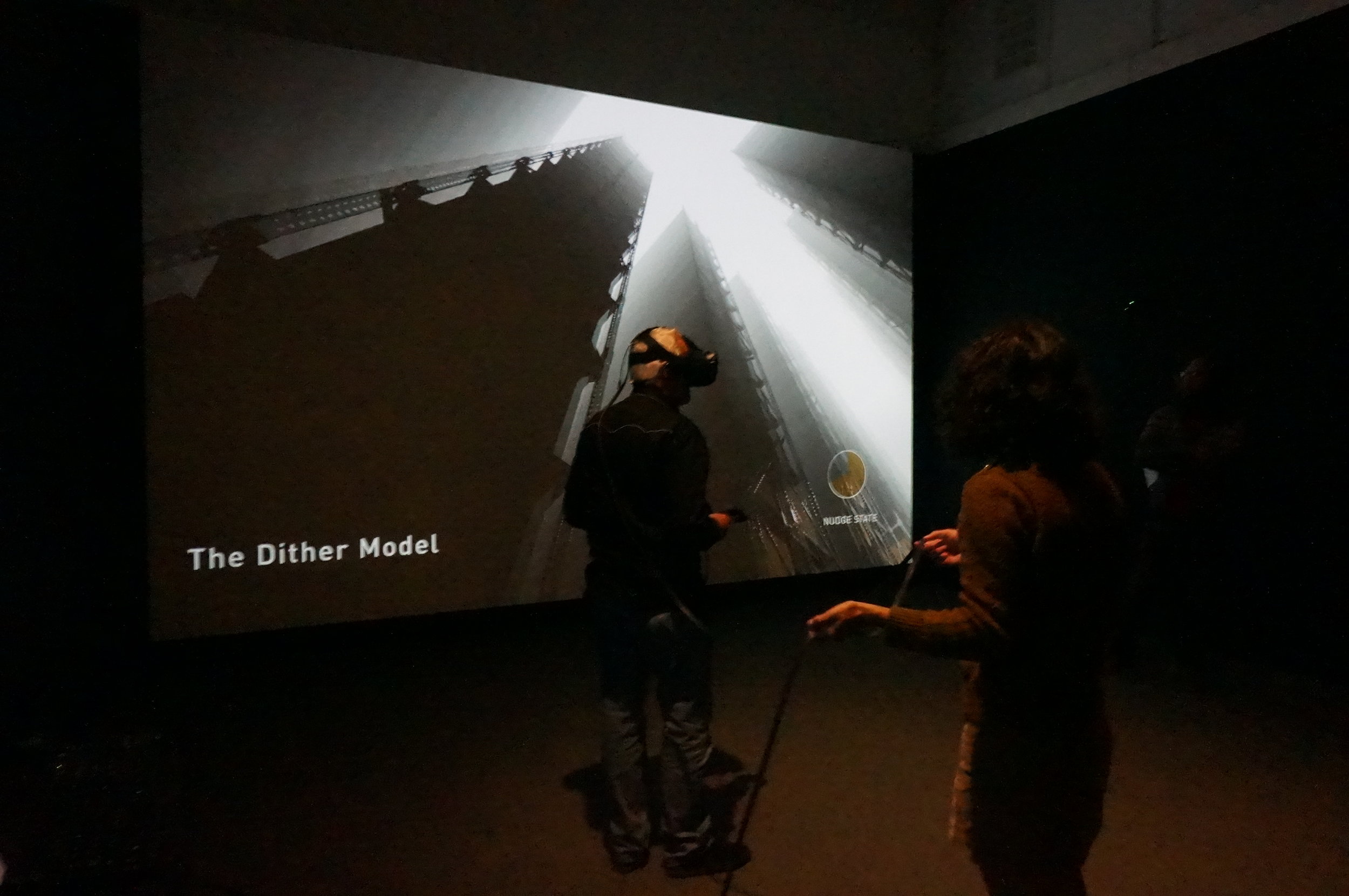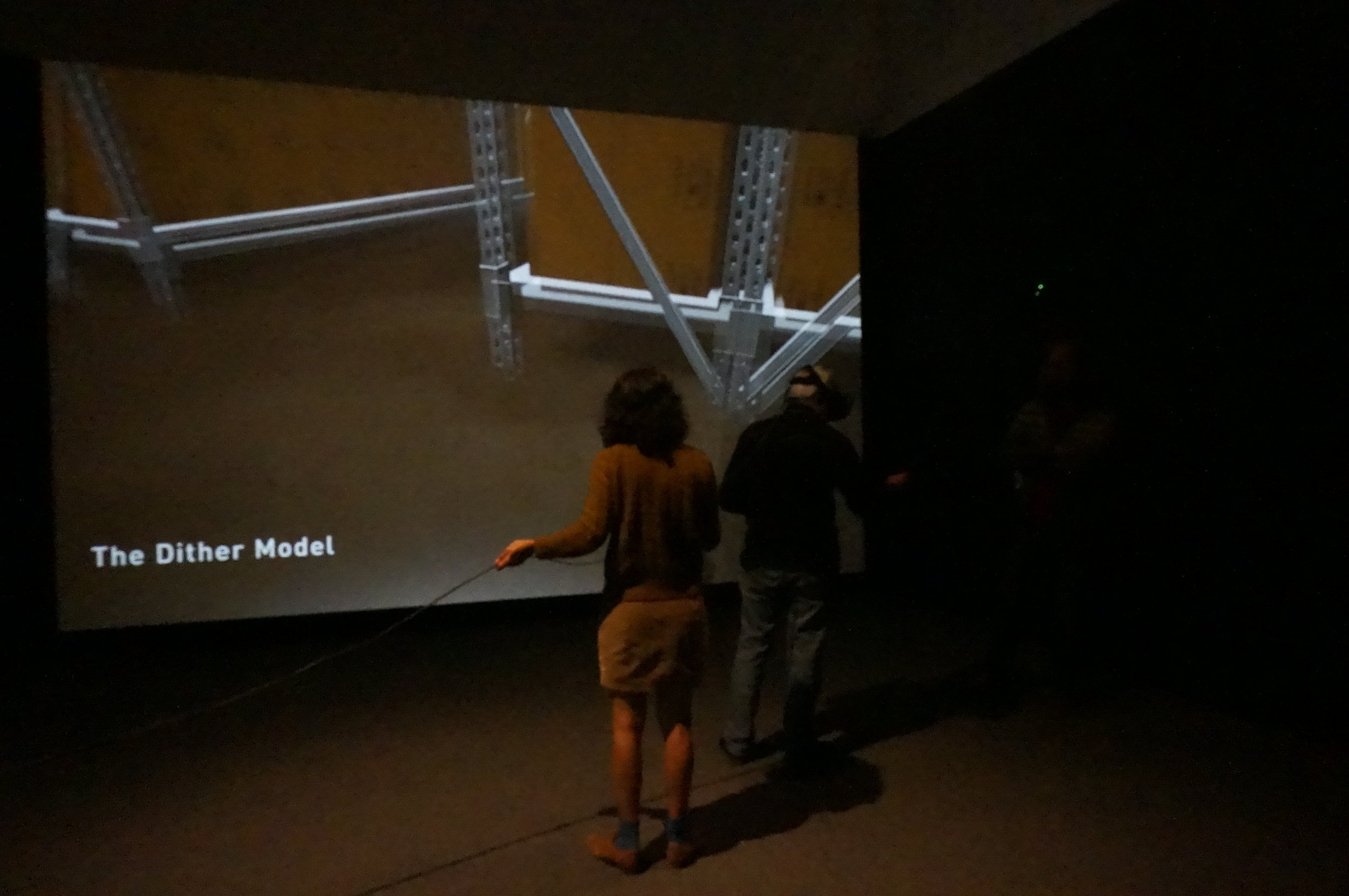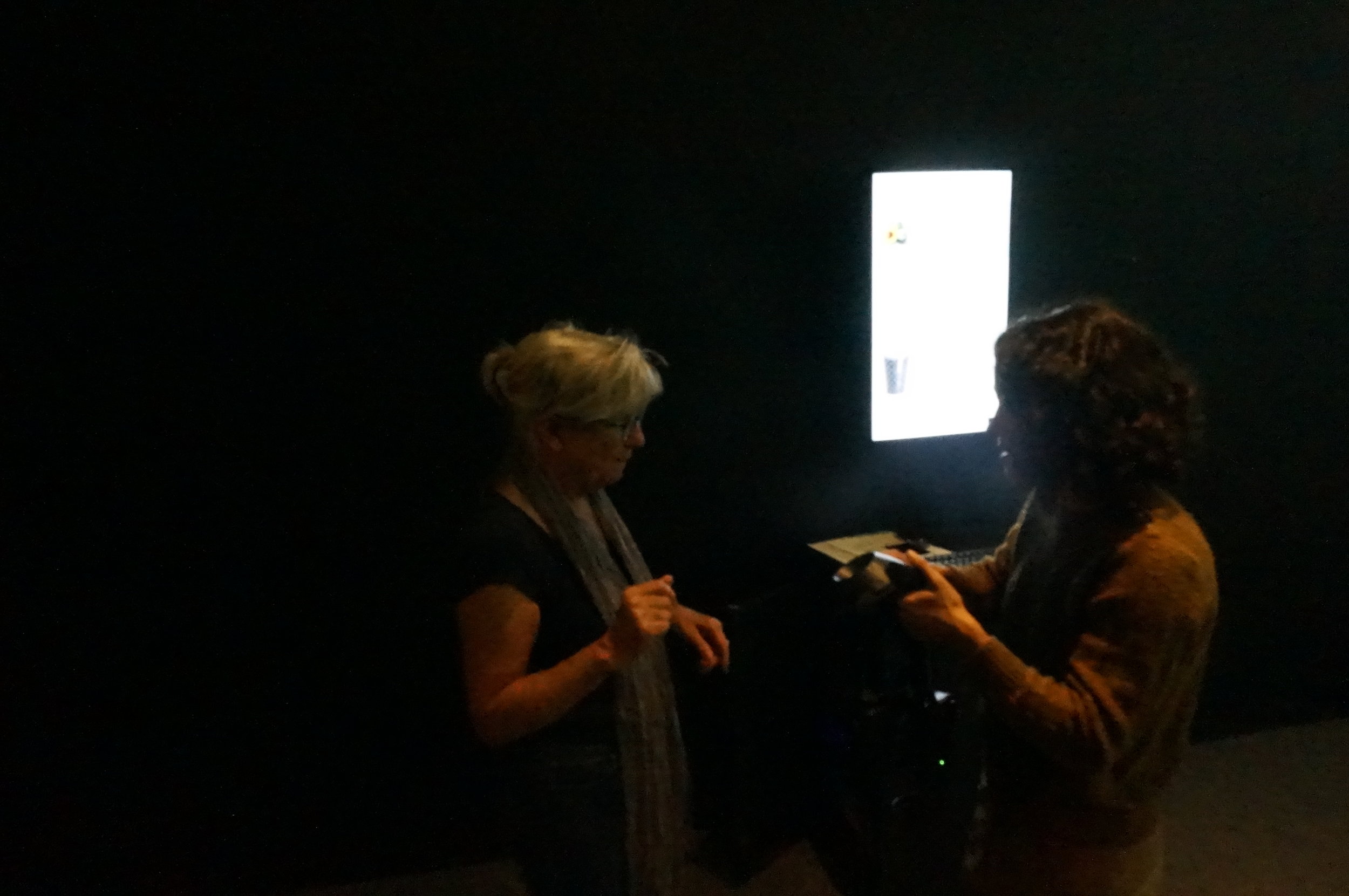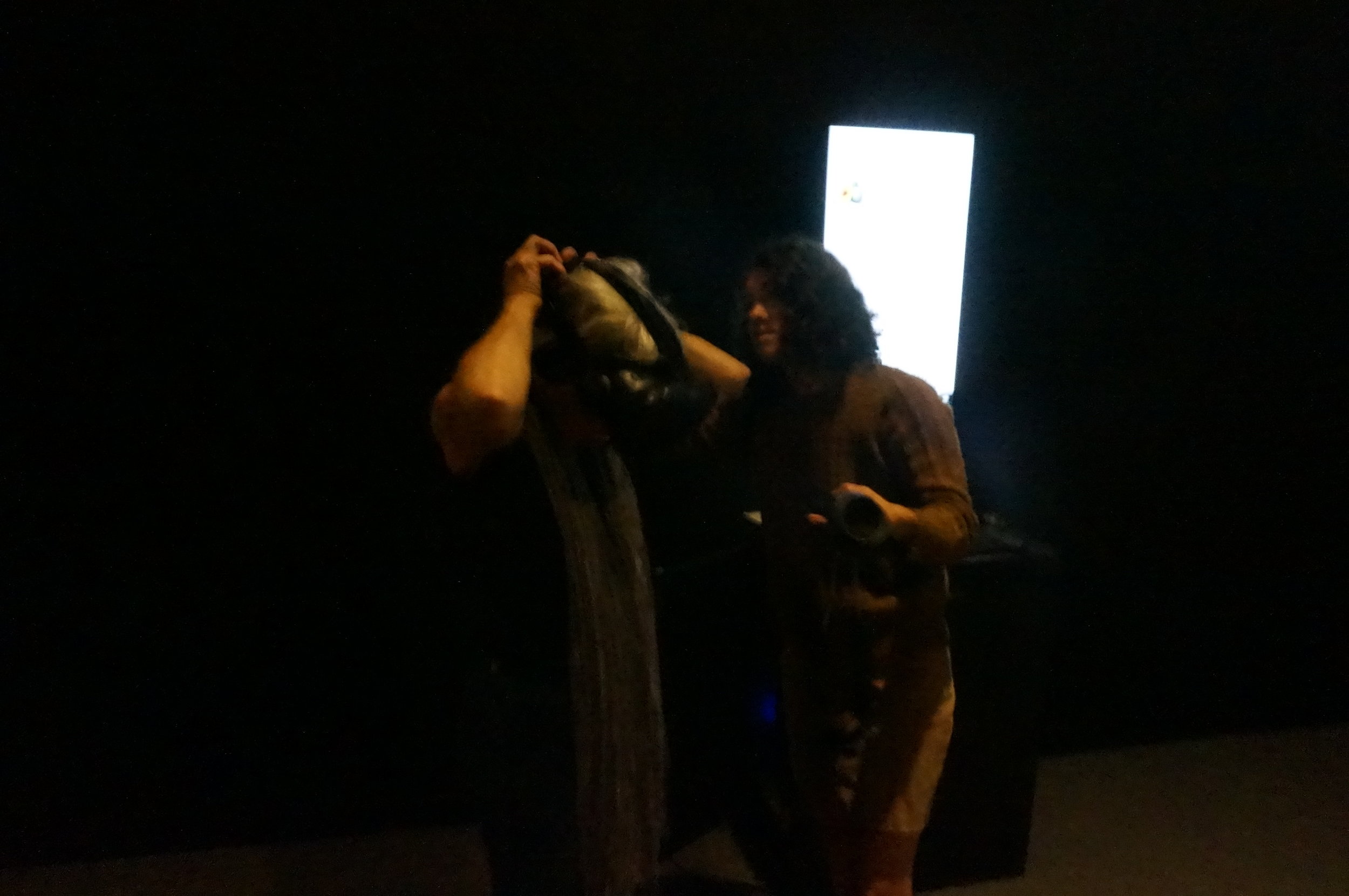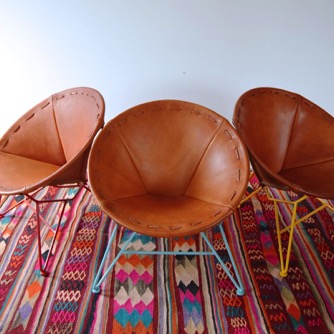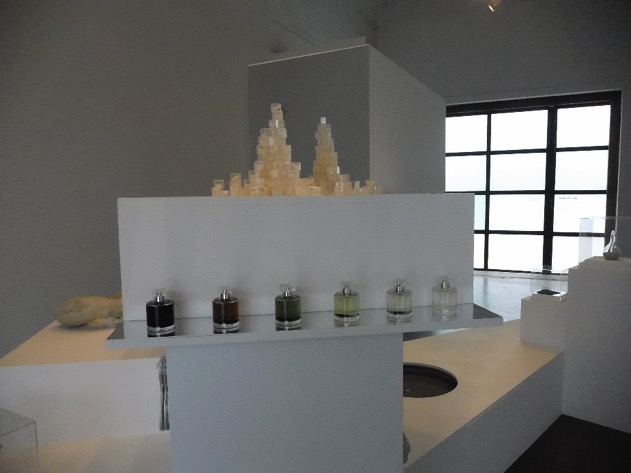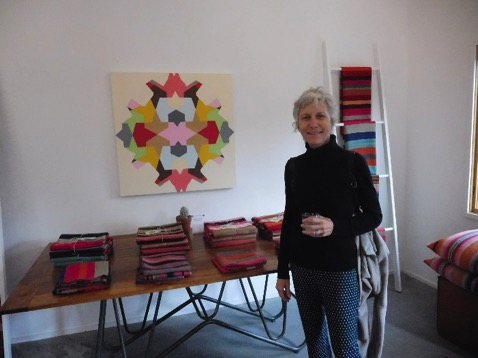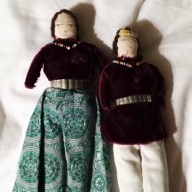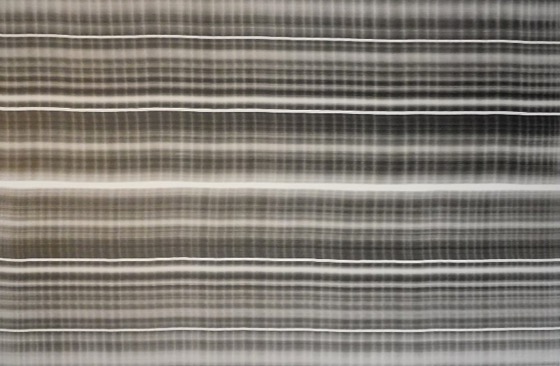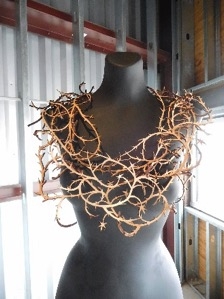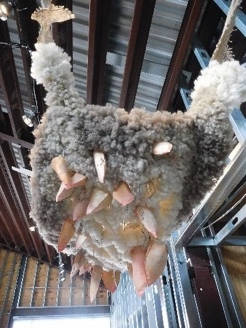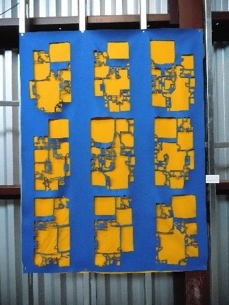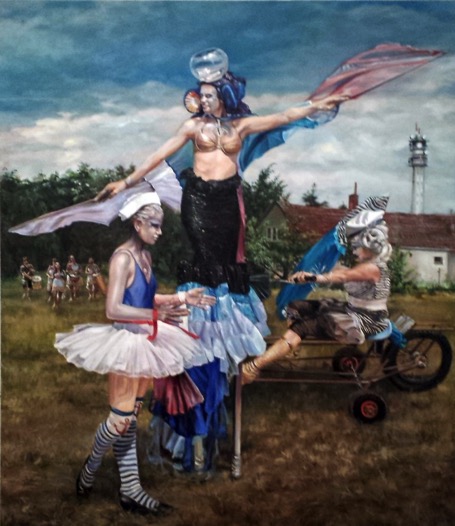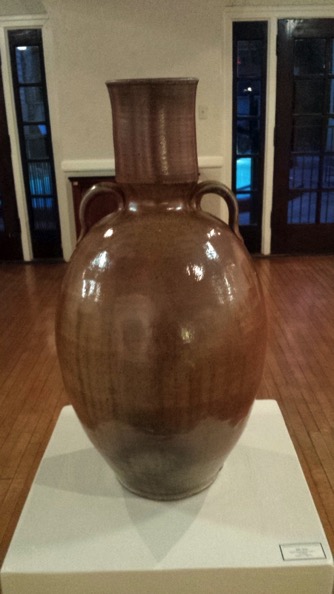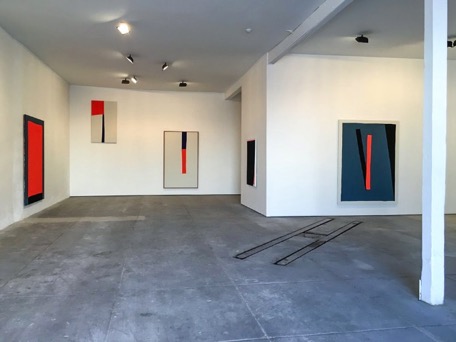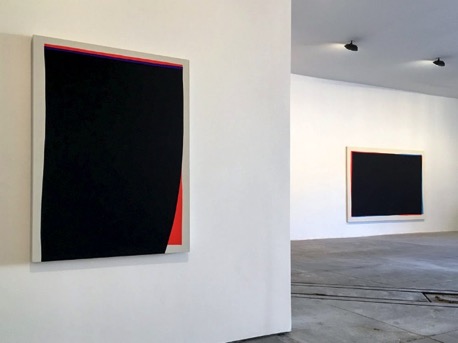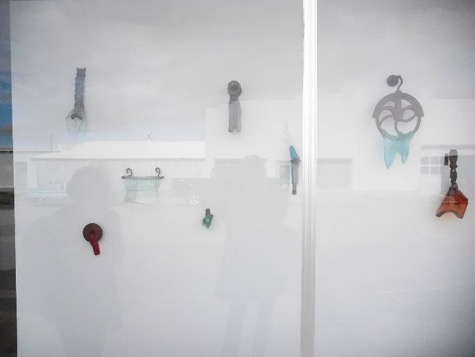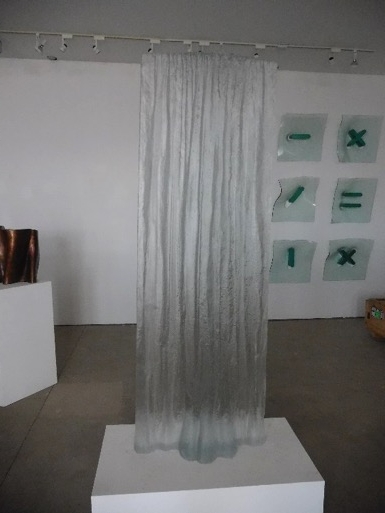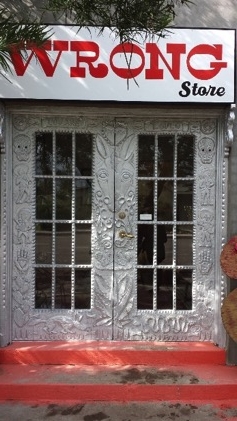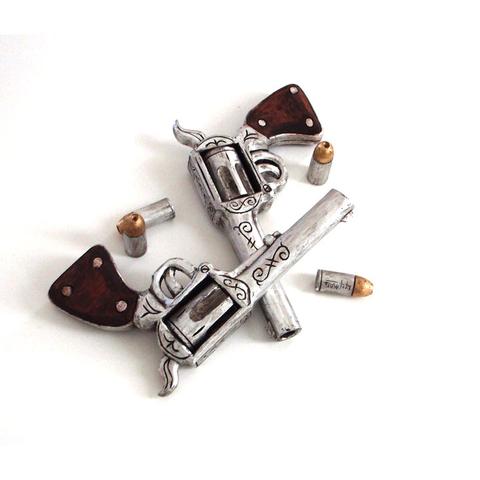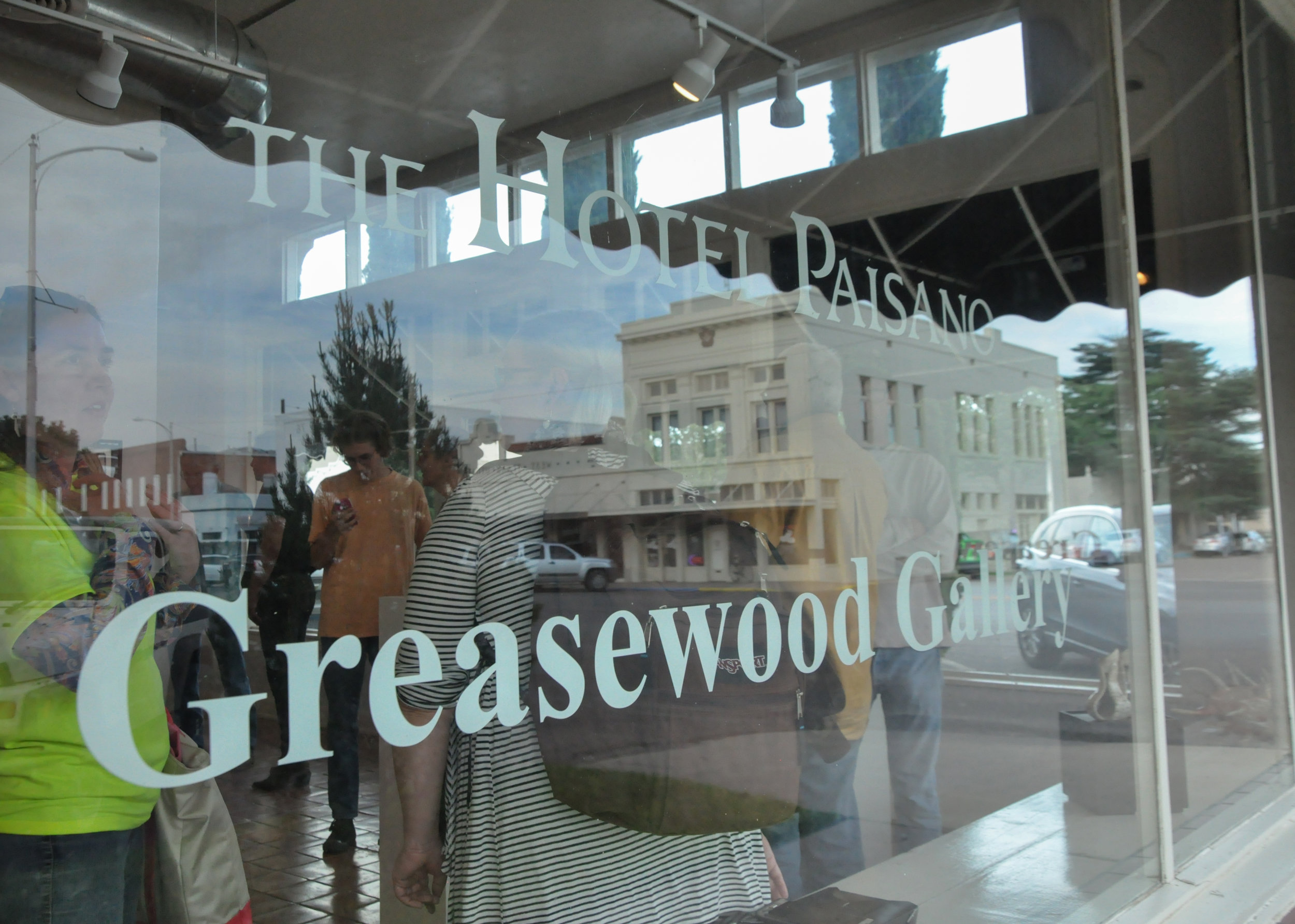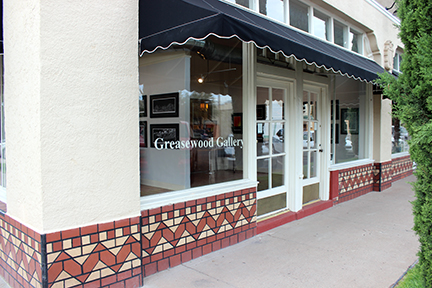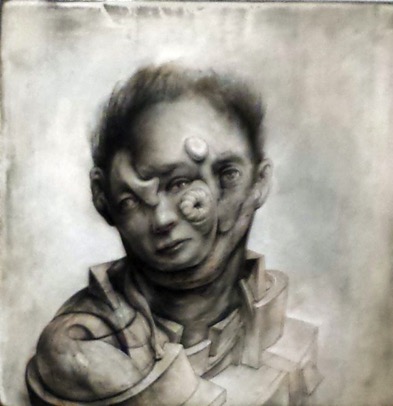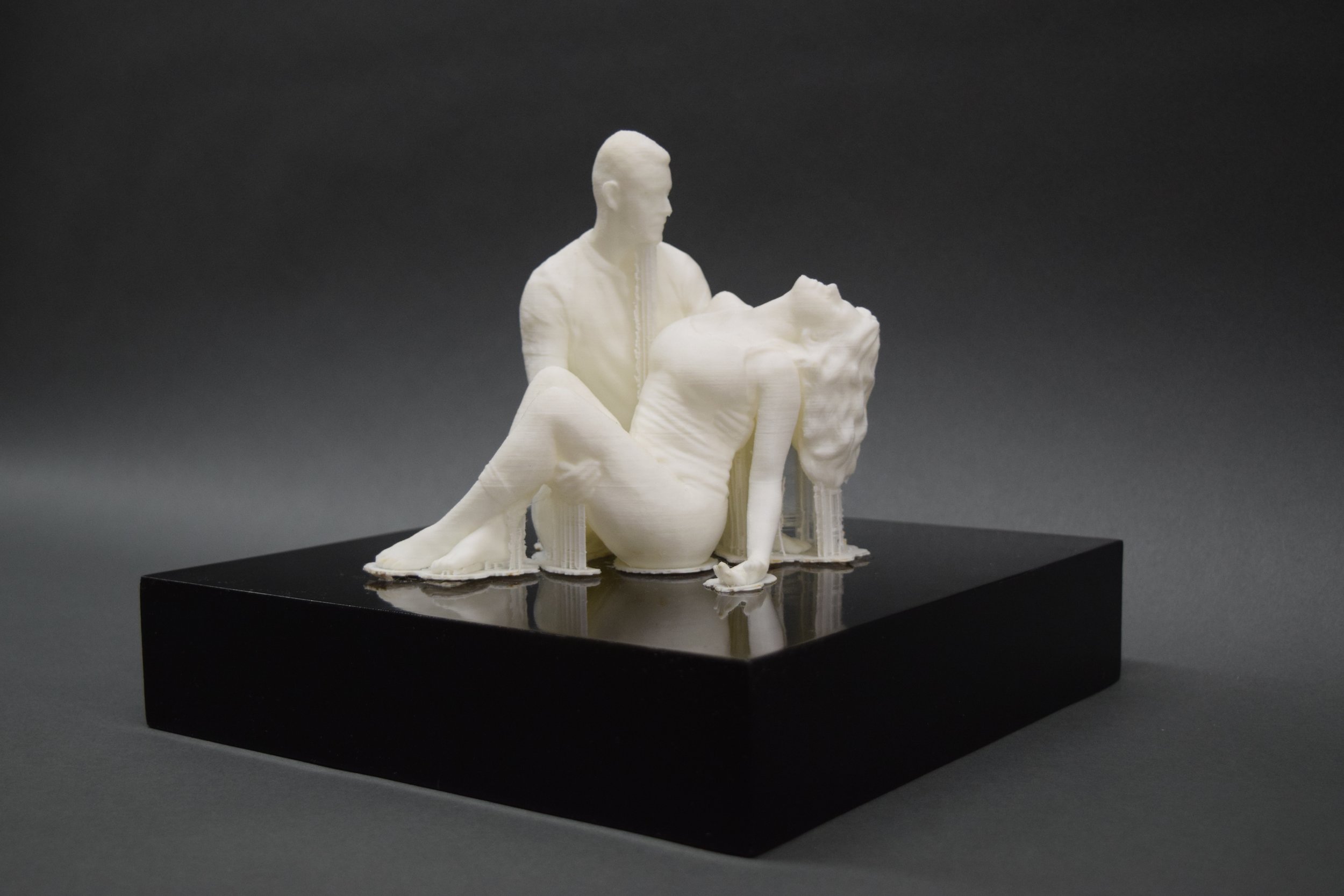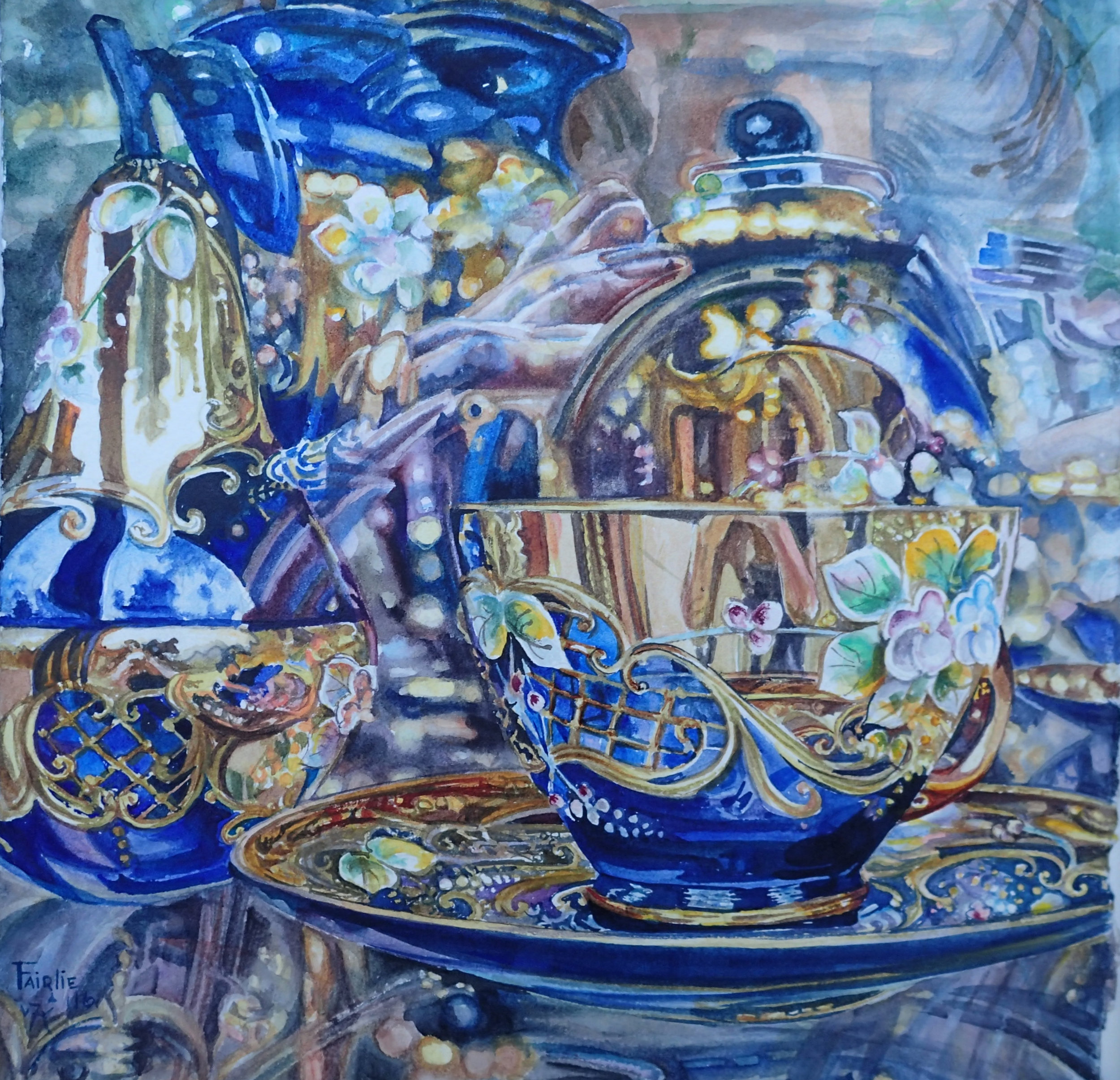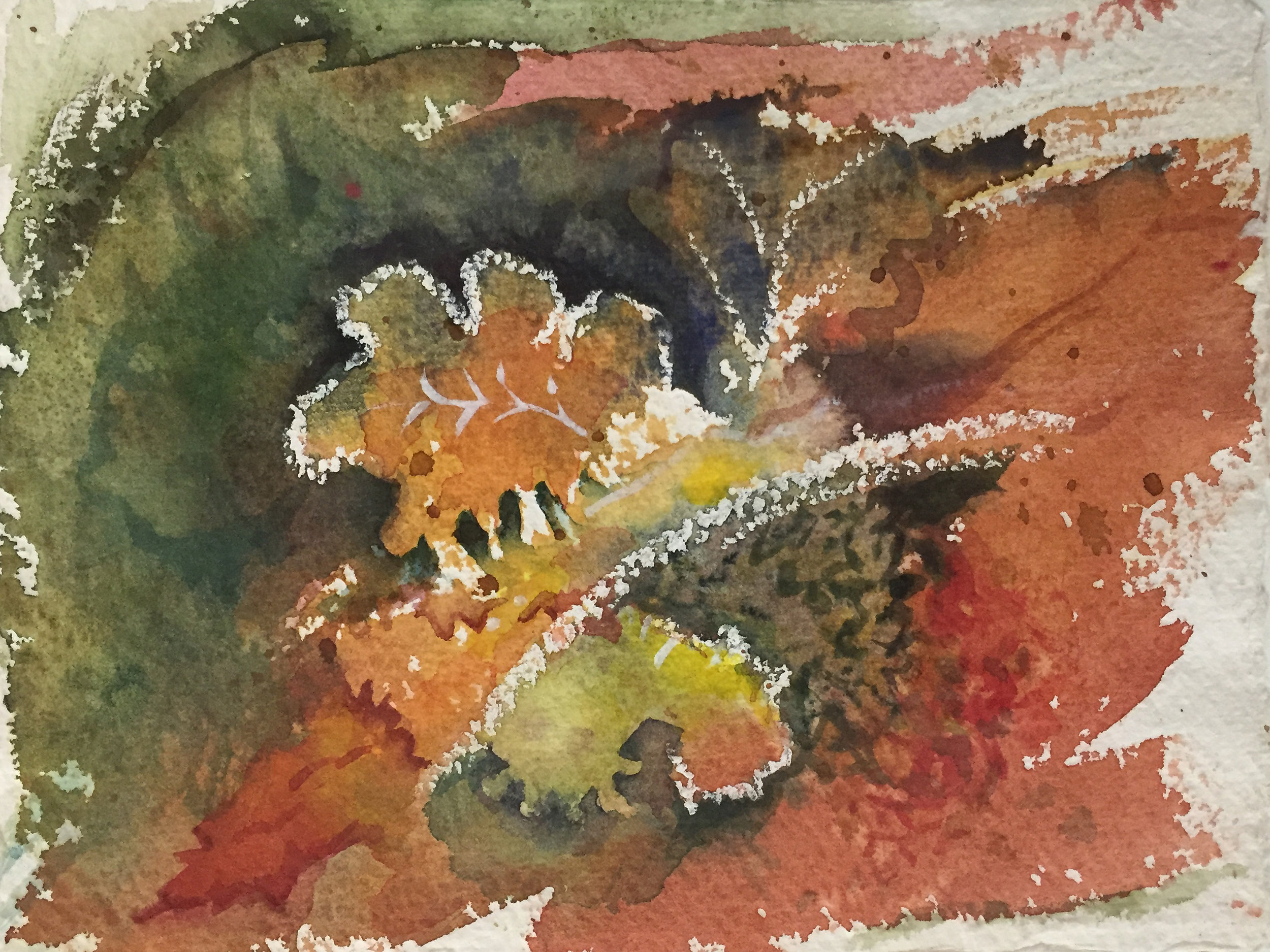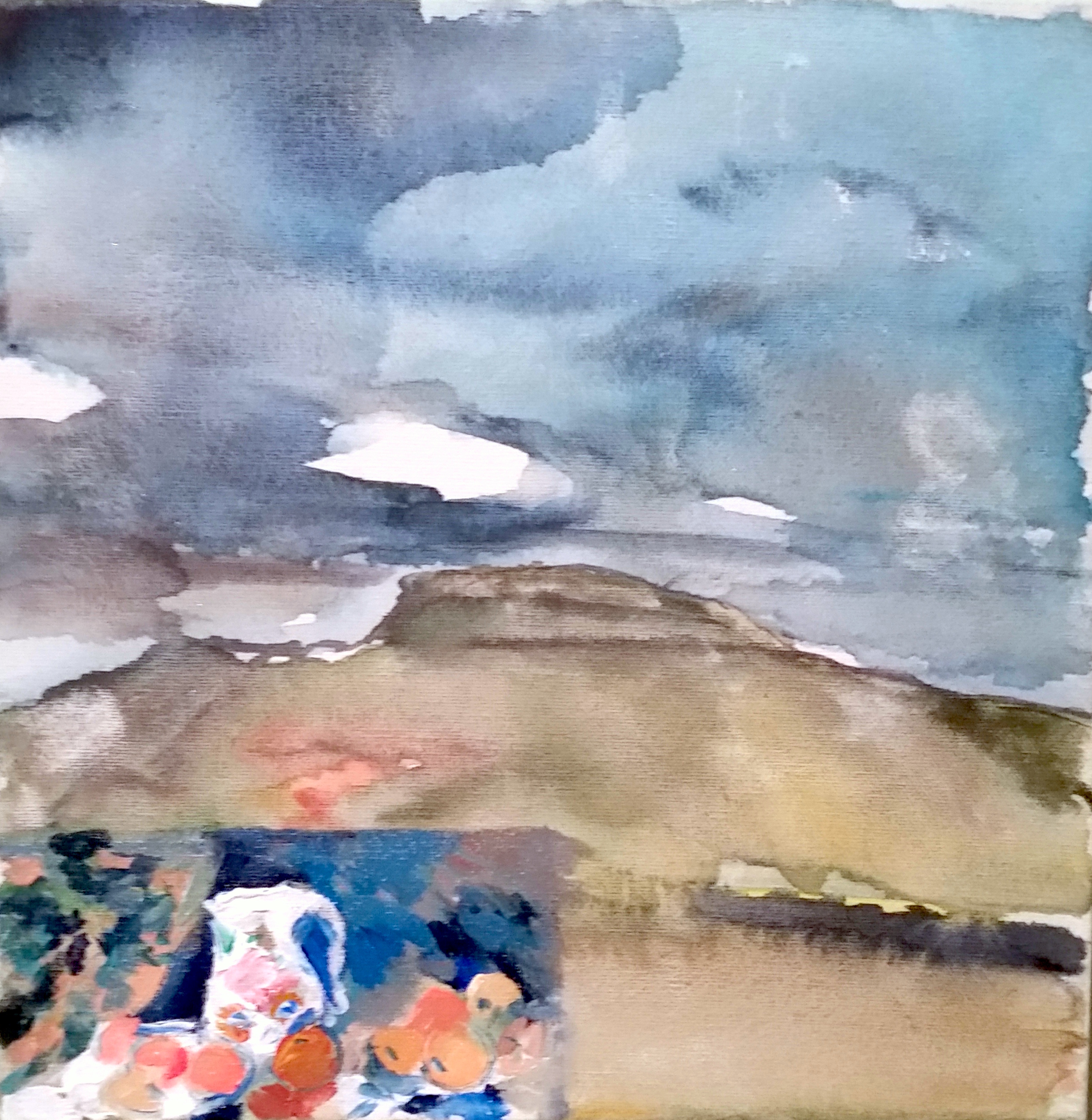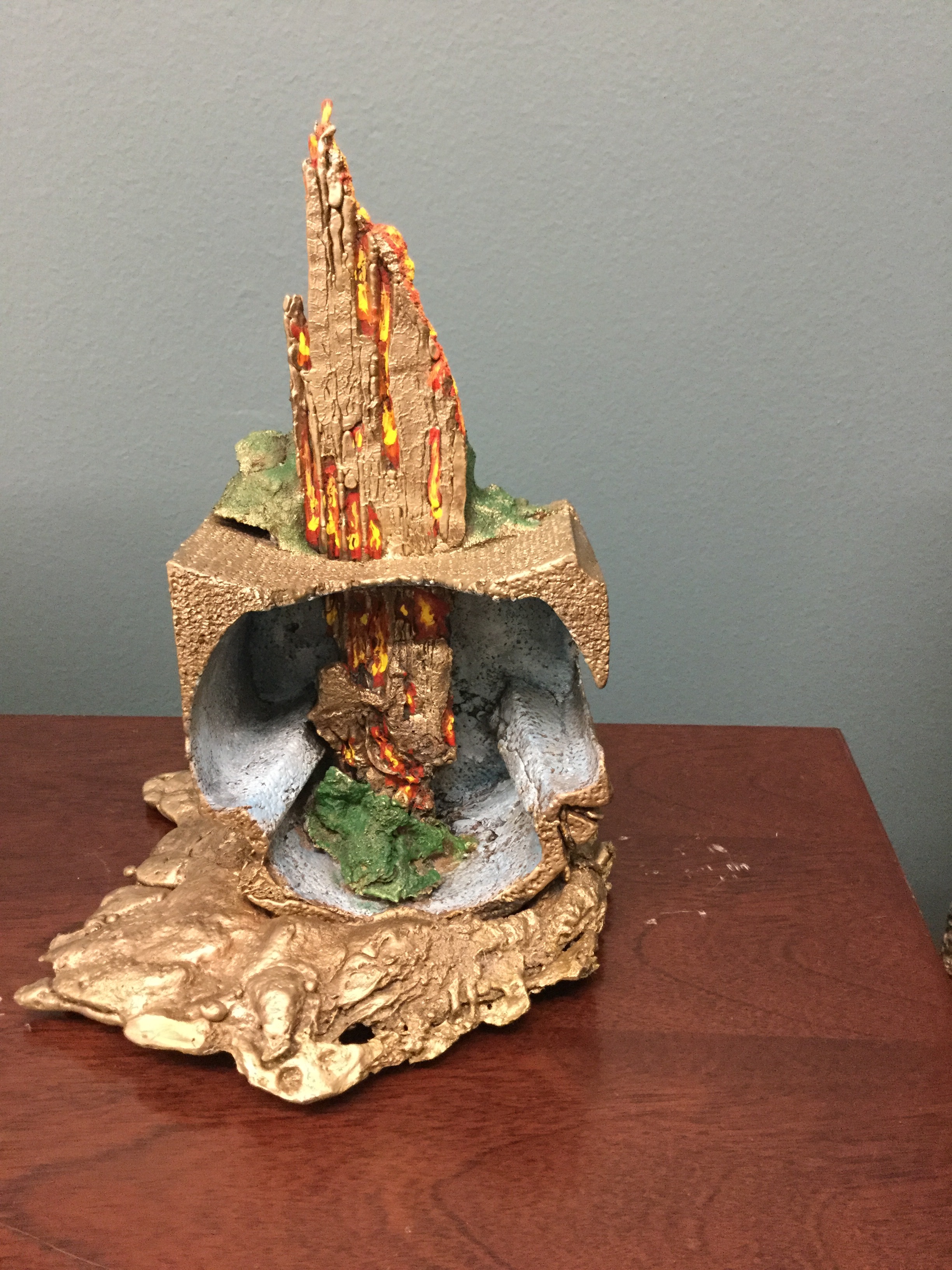TASA Envision: The Newsletter of the Texas Association of Schools of Art
/The recap of ART WORTH!, the 2017 TASA conference in Fort Worth, TX.
Mission Statement
Texas Association of Schools of Art (TASA) welcomes all artists/educators and students to be part of an organization created at the request of the Texas Higher Education Coordinating Board in 1970. Since its origin, TASA has been a forum for art department faculty members at two-year and four-year public and private higher education institutions to discuss trends and issues in art and academia. TASA takes an active role in advocating for improvement and discussing issues facing educators in art. As a community it offers members a chance to network on many levels, ranging from exhibition and employment opportunities, and professional collaborations.
Conference Highlights
Key Note Speaker: Benito Huerta. Huerta received a B.F.A. degree from the University of Houston and his M.A. from New Mexico State University. He was Co-founder, Executive Director and Emeritus Board Director of Art Lies. His work was featured in a second one-person exhibition at William Campbell Contemporary Art, Fort Worth, in March 2018. Recent one-person exhibitions include Kirk Hopper Gallery, Dallas, October 2016; Reavley Gallery, Cole Art Center at Stephen F. Austin University, April 2017; the Houston Museum of African American Culture; the Wichita Falls Museum of Art; and the Amon Carter Museum of American Art. Other recent one-person exhibitions took place at the Glassell Gallery, Shaw Center for the Arts, Louisiana State University, Baton Rouge, Louisiana, and the National Museum of Mexican Art in Chicago in 2011. Huerta was the recipient of the Dallas Center for Contemporary Art's 2002 Legend of the Year Award and Exhibition and was the first artist selected for the inaugural Maestros Tejanos Exhibition in 2008 at the Latino Cultural Center, Dallas. His work is in several museum and corporate collections throughout the United States.
Special Guest Speaker: Sedrick Huckaby. Huckaby is known for his monumental scale of painting, with his largest painting thus far being his 80-foot-long, four-part painting, A Love Supreme, painted over a period of eight years, which earned him the Guggenheim Fellowship. Huckaby is also the recipient of a Joan Mitchell Foundation award and is the Texas State Artist for 2018. Other awards include a Louis Comfort Tiffany grant, Elizabeth Greenshield award, Brandeis Mortimer-Hayes Traveling Fellowship, Davidson Family Fellowship, and Texas State Artist Designee - 2018. After earning a B.F.A. at Boston University in 1997 and an M.F.A. from Yale University in 1999, he returned home to live and work in Fort Worth, where he was born in 1975. Huckaby's work has entered the permanent collections of the American Embassy in Namibia; Amon Carter Museum of American Art; Art Institute of Chicago; Minneapolis Institute of Arts; Museum of Fine Arts, Boston; Nelson-Atkins Museum of Art; San Francisco Museum of Modern Art; and the Whitney Museum of American Art. Huckaby is represented by Valley House Gallery & Sculpture Garden in Dallas.
2017 One Foot Show Juror: Sara-Jayne Parsons. Sara-Jayne Parsons is the director and curator of The Art Galleries at Texas Christian University. Her dissertation for the Ph.D. in art history at the University of Texas, Liminal Britain: Place and Memory in British Photography since 1979, is in progress. She earned an M.A. in art history at the University of North Texas (1996) and a B.A. (Honors) in Art History & Publishing at Oxford Brookes University (1992). Sara-Jayne Parsons specializes in contemporary art, contemporary photography, collaboration, and curatorial practice in contemporary art. Her curatorial practice is informed by working in close partnership with artists to produce new works through commissions and exhibitions. Previous collaborations included Ayman Baalbaki, Sebastiaan Bremer, Daniel Bozhkov, Jyll Bradley, Gina Czarnecki, Hew Locke, Janek Schaefer, and Emily Speed.
2017 Paul Hanna Award Lecture: Roger Colombik. Colombik received his B.F.A. from University of Illinois-Champaign in 1984 and his M.F.A. from Southern Illinois University-Carbondale in 1987. He navigates a diverse artistic practice that embraces a passion for sculptural objects, and he continues to explore the material and conceptual possibilities of metal casting and fabrication. In addition to his studio practice, he has spent over two decades studying regions of the world that are transitioning to civil society. Socially engaged projects are undertaken in milieus where traditions and cultural heritage collide head-on with westernization and government malfeasance. The work incorporates oral history archives, photography, publications, and intervention. The Republic of Georgia, Burma, and Armenia are a few of the countries that he has engaged in his research. His Paul Hanna lecture, "Artists in Time of War: Reflections on Howard Zinn and the Artist's Role in Civil Discourse," introduced a wide range of artists--writers, activists, visual artists--whose works continue to make a significant contribution to our society's capacity to understand and build a more empathetic, compassionate, and intelligent community.
"Life in Labudio: Science + Art in the College Classroom‚"
Erin Blythe and Jay Kurima are award winning educators at Texas Academy of Biomedical Sciences (TABS) early college high school. Erin Blythe earned her BFA from the School of the Art Institute of Chicago and her Master of Art Education degree from the University of North Texas. As Fine Arts Chair, she teaches dual credit studio arts and art history courses to high school students in Fort Worth ISD through the ongoing partnership of TABS and Tarrant County College, Trinity River Campus. Jay Kurima has been an international staff developer for AVID for over 10 years. He has professionally developed teachers in 15 different states and 4 continents and serves as the science department chair and technology liaison for Texas Academy of Biomedical Sciences, where he teaches AP Physics 1 and Innovation, Design, Engineering, and Applied Sciences (IDEAS.) IDEAS is a collaboration between himself and Ms. Blythe. The class is funded by the Amon G Carter Foundation and is based on STEAM and the maker movement ideals. In this course, students tackled community issues with design and science. Erin and Jay sometimes refer to their collaboration of physics and art as "Phart."
"Curating the landscape: An Art Exhibition for BRIT‚" Barbara Koerble grew up in Northwest Missouri. After completing a B.F.A. in ceramics at Northwest Missouri State University, she moved to Texas to pursue graduate studies in studio art and art history, and completed an M.A. in art history at UNT in Denton. She has been an adjunct art professor at Tarrant County College since 2012, and currently teaches art history survey and art appreciation courses at TCC‚ Trinity River campus. She also works at the Afterimage Gallery in Dallas, and is active as a freelance writer and independent curator. Barbara previously collaborated with Exhibits USA to curate a traveling exhibition on the architecture of ballparks, which toured the U.S. for two years. ¬†In 2017, Barbara curated two art exhibitions in Fort Worth: Hightailing It: Artists Look at the Landscape for the Botanical Research Institute of Texas, and Recombinant Abstraction for the Fort Worth Community Arts Center. She has published articles about art and architecture for more than two decades, and most recently her art writing has appeared in Glasstire: Journal of Texas Visual Art.
"Fort Worth Public Art: Opportunities and Challenges for Local Artists"
Devon Nowlin is a Fort Worth native who holds a BFA from the University of North Texas (2004) and an MFA from Texas Christian University (2011). Primarily known for her figurative paintings, Nowlin also explores the relationship of contemporary art to consumer culture through a diverse array of media. Recent exhibitions include "Casual Luxury Complex" at Artspace 111, "Don't Deny Your Heart" at Stephen F. Austin State University, and "Cult of Personality" at David Shelton Gallery, Houston. Nowlin has taught at TCU, The Modern, and the Rachofsky Warehouse and is currently the Assistant Registrar at the Amon Carter Museum. Her presentation focused on FWPA as an example of a municipal percent-for-arts program that seeks to have local artists compete with national and international professionals for a well-rounded civic collection.
"3-D Printing for Clay"
Karmien Bowman‚ work has been collected internationally. She has presented pedagogy lectures, ceramic workshops, artist‚ talks, and has been included in area and national exhibits with awards. She has been recognized in her field by Who‚ Who in America, Who‚ Who American Teachers, and Texas Clay Art. Karmien published articles in the field of Ceramics and her work has been included in various articles and books, including Daryl Baird's‚ From a Slab of Clay. Karmien's TASA presentation was about innovative CAD applications to building clay forms.
Grand Studio is a shared workspace created by Fort Worth artists Timothy Harding, Devon Nowlin, Tiffany Wolf Smith, Christopher Bond, and Sydney Williams. The 5,000 square foot warehouse includes five individual bays for the artists, a large common area with shared tools, and storage for the Grand Studio artists and two additional Fort Worth artists. Works by guest artists will be on display.
Panel Discussions
"All Things ACGM and THECB"
Mark Greenwalt led a discussion about how to coordinate strategies for formally addressing the THECB on issues for this upcoming year.¬† Topics range from a report on the elimination of sophomore level studio courses from the ACGM; options regarding media-based learning methodologies in Art Appreciation courses; creative arts core courses and electives in support of a variety of gen ed "pathways" leading to a transfer degree (i.e., pathways for non-art majors); transferability/course numbering issues; potential for Visual Arts ‚"Field of Study"; and a proposal to include ARTS 1313 Foundations of Art for inclusion into the Creative Arts core.
"Lessons learned from the DCCCD Appeal and how to move forward"
Natalie Macelao, Omar Hernandez and Jenifer Rose organized a panel discussion at TASA about Dallas Community College's efforts to keep level II studio courses in the ACGM, and their experience with the appeal process.
MUSEUM and STUDIO TOURS
Visiting guests were treated to a special behind-the-scenes peak at some of the inner workings of three international known museums of fine art. Museums included:
- Amon Carter Museum of American Art
- Modern Art Museum of Fort Worth
- Kimbell Art Museum
TEXAS CHRISTIAN UNIVERSITY ART FAB LAB (TCU College of Fine Arts)
Participants viewed the interdisciplinary fusion of new and emerging technologies with a traditional studio arts practice, including methods of virtual craft and digital fabrication and all types of time-based media and installation. The new media studio houses a fully stocked robotics and engineering lab where students can work/hack/make interactive and robotic components for their projects, complete with soldering stations and a small bandsaw and tool cabinet.
GRAND STUDIO
Grand Studio is a shared workspace created by Fort Worth artists Timothy Harding, Devon Nowlin, Tiffany Wolf Smith, Christopher Bond, and Sydney Williams. The 5,000 square foot warehouse includes five individual bays for the artists, a large common area with shared tools, and storage for the Grand Studio artists plus two additional Fort Worth artists.
Synopsis of Conference Events
As submitted by the Board of Directors and Staff of TASA
Select Museum Tours
by Carol Fairlie, Sul Ross State University
Amon Carter Museum of American Art
The behind the scenes of the Amon Carter led by conservation and installation staff, was wonderful and I was glad I had a few students with me! Beginning with the restoration area, we were shown various processes of mounting and restoring works on paper and also an elaborate process of archivally mounting a large (5 ft.) Polaroid negative. We then went into the vaults and looked at the handling and framing areas that are used as preparatory areas for the installation of shows, and finally went to the area where the decision's on how shows will be presented was done. Here they had various paint swatches for the walls and materials for temporary walls and pedestals. Most fascinating to me were the elaborate Maquettes of each show they had installed, scaled to size with different layouts and wall colors for each exhibit.
Kimbell Art Museum
Casanova: The Seduction of Europe special exhibition
Taken directly form the museum's description, "Casanova: The Seduction of Europe" explored life in the eighteenth century through the eyes of one of its most colorful characters, Giacomo Casanova (1725-1798). Renowned in modern times for his amorous pursuits, Casanova lived not only in Italy, but also in France and England, and his travels took him to the Ottoman Empire and to meet Catherine the Great in Saint Petersburg. Love - romantic, carnal, or a combination of the two - seems always to have been on his mind. He witnessed the birth of libertinage, a movement advocating the abandonment of polite society - conventions regarding love and sexual expression. The exhibition explores the artistic expression of eighteenth-century Europe's evolving views on sex and love. Theater was in Casanova's blood, and he found endless influence in the worlds of fantasy, storytelling, and music offered by the Venetian theatrical demimonde. Quickly, however, he learned that not all acting requires a stage. Throughout his life he traveled under assumed names, donning different costumes. This well-designed exhibition uses paintings, sculpture, and prints plus period items to emphasize the grandeur of Casanova's time.
Lecture by Sedrick Huckaby in the UTA painting studios
By Joe Pena, Texas A&M University- Corpus Christi
Sedrick Huckaby, Assistant Professor of Painting at the University of Texas at Arlington, treated TASA members to an intriguing lecture on his upbringing in Fort Worth, his previous and current body of work, as well as his studio practice in the painting studios.
During his presentation, Huckaby spoke of his undergraduate studies at Boston University followed by his graduate work at Yale, both difficult programs of which I'm sure he is passing his knowledge and experience from those intense periods onto his students based on the quality of work being produced in the undergraduate and graduate painting studios at UTA. On this note, Huckaby's bravado brushwork and unapologetic use of impasto I can assume is hard to resist in the classroom based on the number of students carrying his artistic torch and getting impressive results. I was so impressed with one of his current graduate students, Spencer Evans, that I asked if I could use an image of his painting on display as the poster image for our painting symposium at Texas A&M University- Corpus Christi which took place in the spring of 2018. www.osobaybiennial2018.com
Huckaby delved into his body of work entitled "Love Supreme (Spring"), featuring large scale paintings of draped quilts on canvas inspired by the song of the same name by jazz musician John Coltrane, as well as his series "Big Momma' House," based on his maternal grandmother created over a two-year period. Huckaby also discussed his purchase of his grandmother's home of which he has plans to covert into a gallery and art center.
University of Texas at Arlington Biennial Faculty Exhibition
by Chad Farris, University of Texas Rio Grande Valley
This year during the October 2017 T.A.S.A. conference participants were given the opportunity to view and speak with gallery director Benito Huerta at the Gallery at The University of Texas at Arlington. This is the sixteenth "Faculty Biennial," a showcase for recent work created by the Department of Art and Art History faculty. The Faculty Biennial shows to be an opportunity for the University of Texas at Arlington Art and Art History faculty to present new ideas that creatively investigate new modes of expression. Students, visitors and fellow faculty will enjoy seeing new innovations and work from faculty at The University of Texas at Arlington. This year's exhibition consisted of 35 faculty members working in a wide variety of media including painting, drawing, sculpture, ceramics, photography, glass, printmaking, film/video, digital imaging and visual communication design. The department's art historians also have recent publications on display. This was a well-received exhibition by TASA members and participants.
TEXAS CHRISTIAN UNIVERSITY'S ART FAB LAB
by Linda Fawcett, Hardin-Simmons University
On Friday of the conference, after lunch and a fun visit to the UTA Gallery, a bus took some of us to the optional tour of Texas Christian University's Fab Lab. It was located in the TCU Mary Courts Burnett Library. We were given a tour by the lab "Innovation Collaborator," Brad Trussell. The facilities were impressive, with multiple 3D printers, a high definition 3D scanner, a large-scale plotter, and a laser cutter/engraver. It was explained to us that this lab was available to all TCU students, faculty, and staff, as soon as the lab staff made sure they knew how to properly use the equipment and were aware of the other related policies.
Our group also visited the TCU Art Department that also had impressive equipment for its faculty and students to use, including a CNC Router, letter press, Risograph, a very wide printer, and much more. At the end of the tour, we launched into an impromptu discussion about the Maker Movement, very well organized with conferences and a website. Apparently, the movement has up until now been largely about fabrication with little aesthetic input but is now embracing and seeking artists to be a part of. (FYI, its website is: makerspace.com.) Emphasis is placed on how the "IDEA" comes first, and the fun is in re-purposing tools and techniques to accomplish said goal. Another subtopic was how art programs are becoming recognized as a kind of "front door" for ideas within the science and technology world, leading to a concurrent push by art programs to find collaborative ways to tap into STEM grants to promote innovation within the sciences, technology, engineering, ART and math fields (STEAM!).
